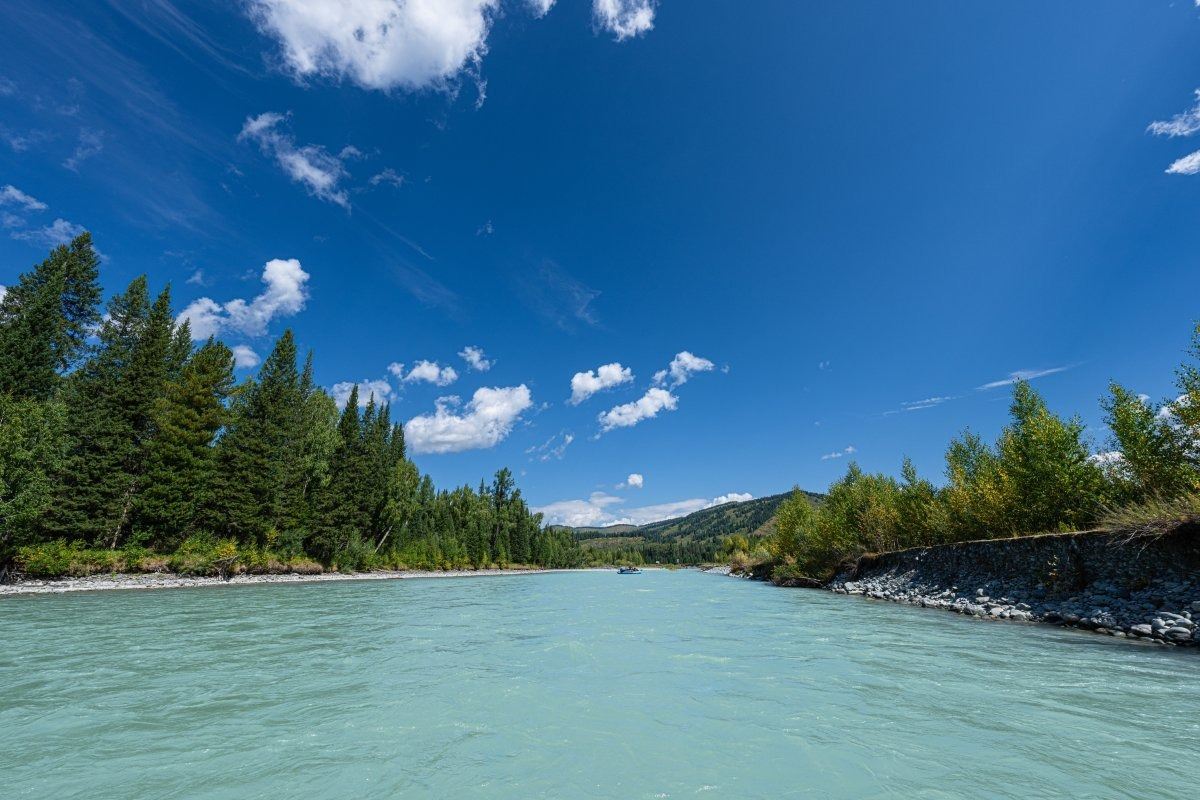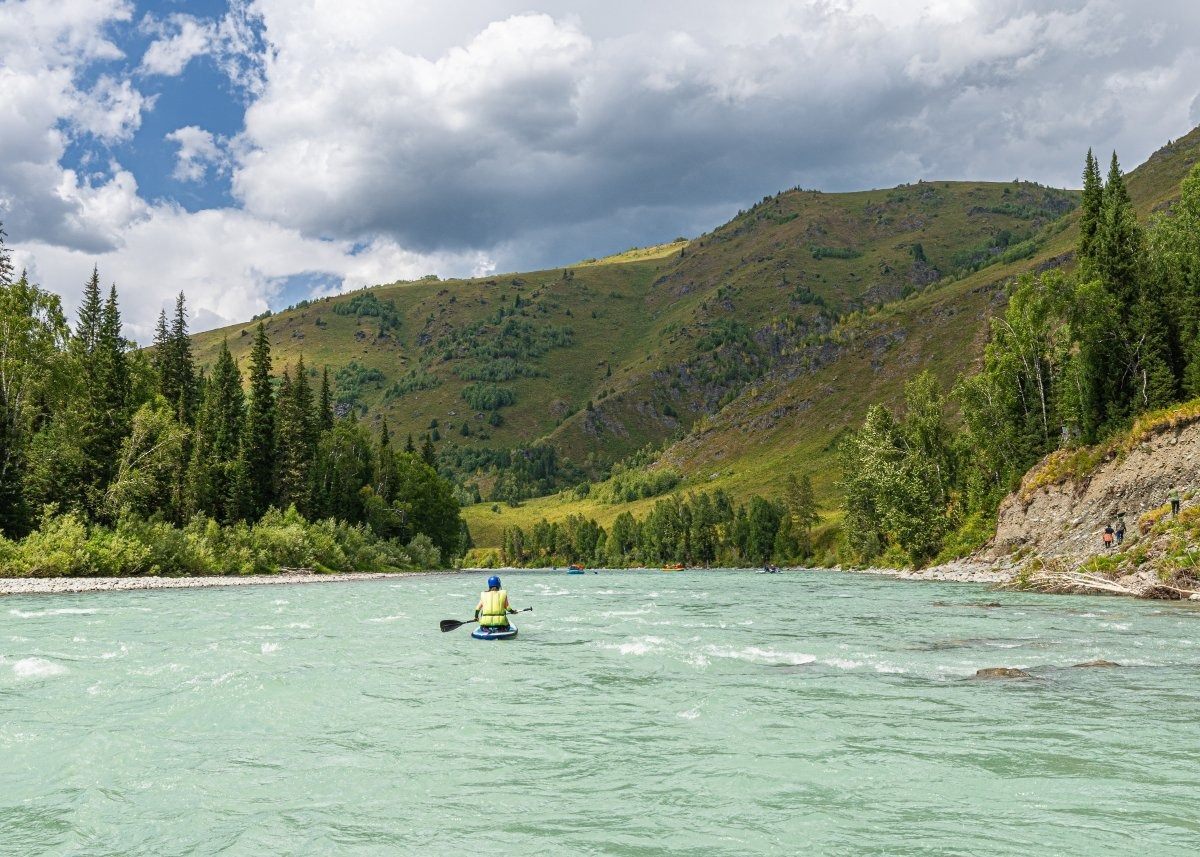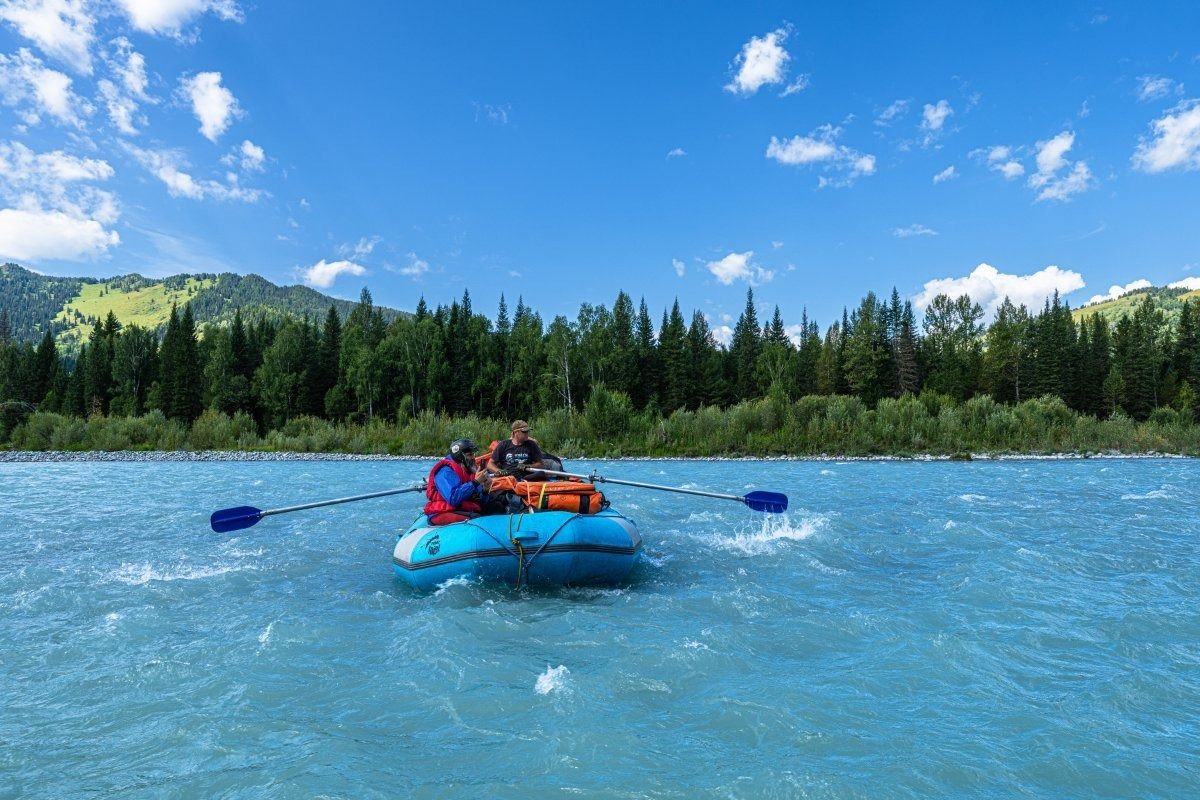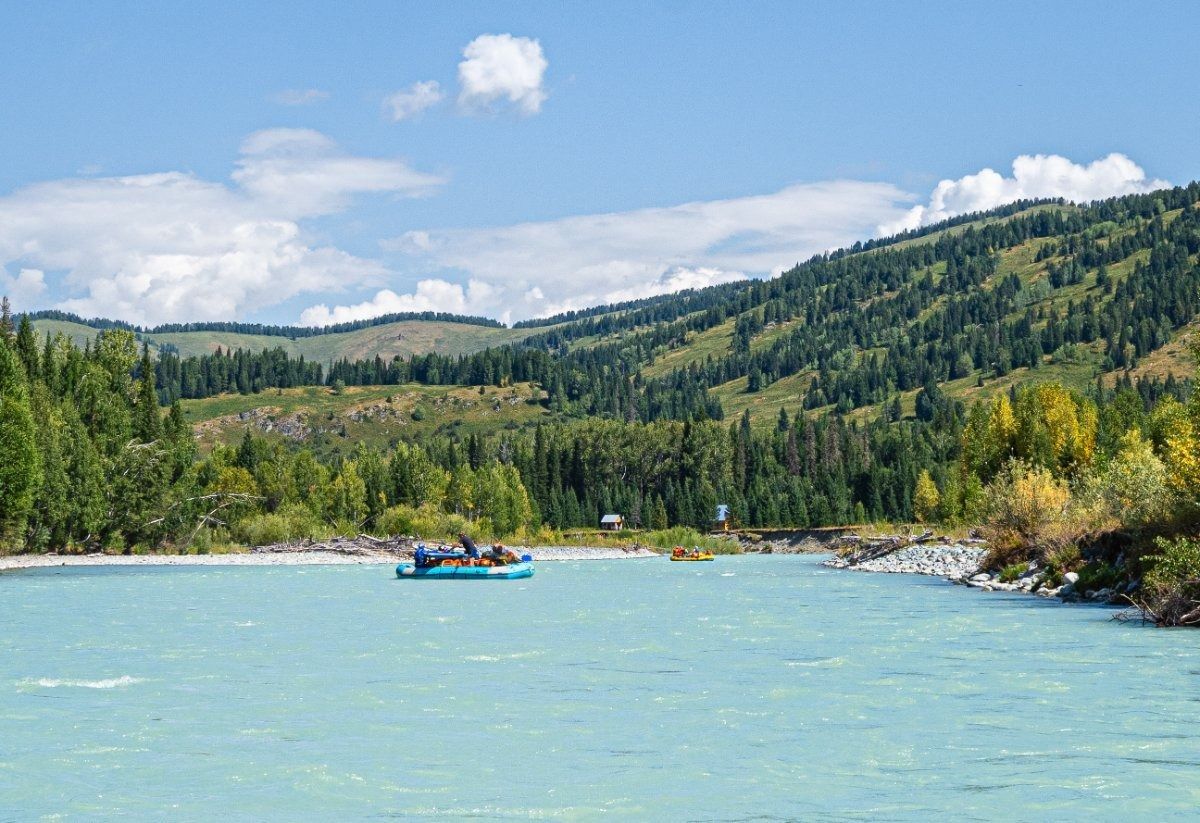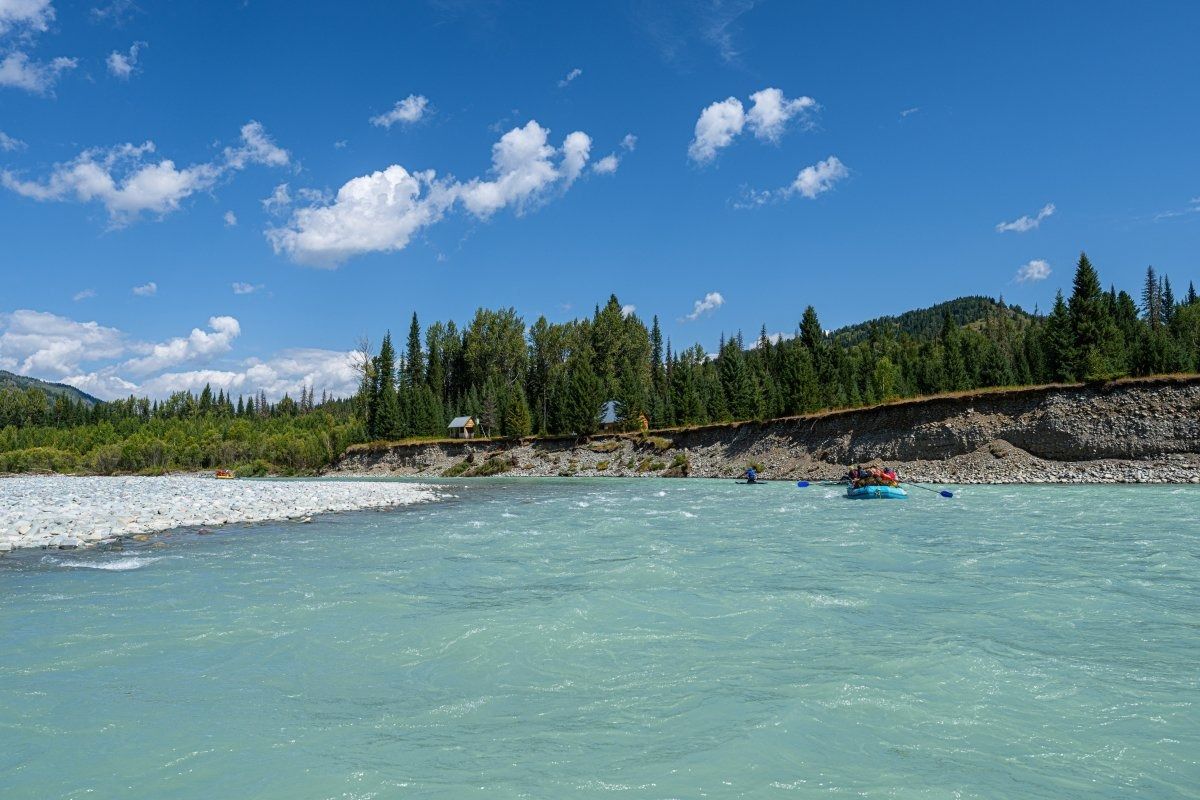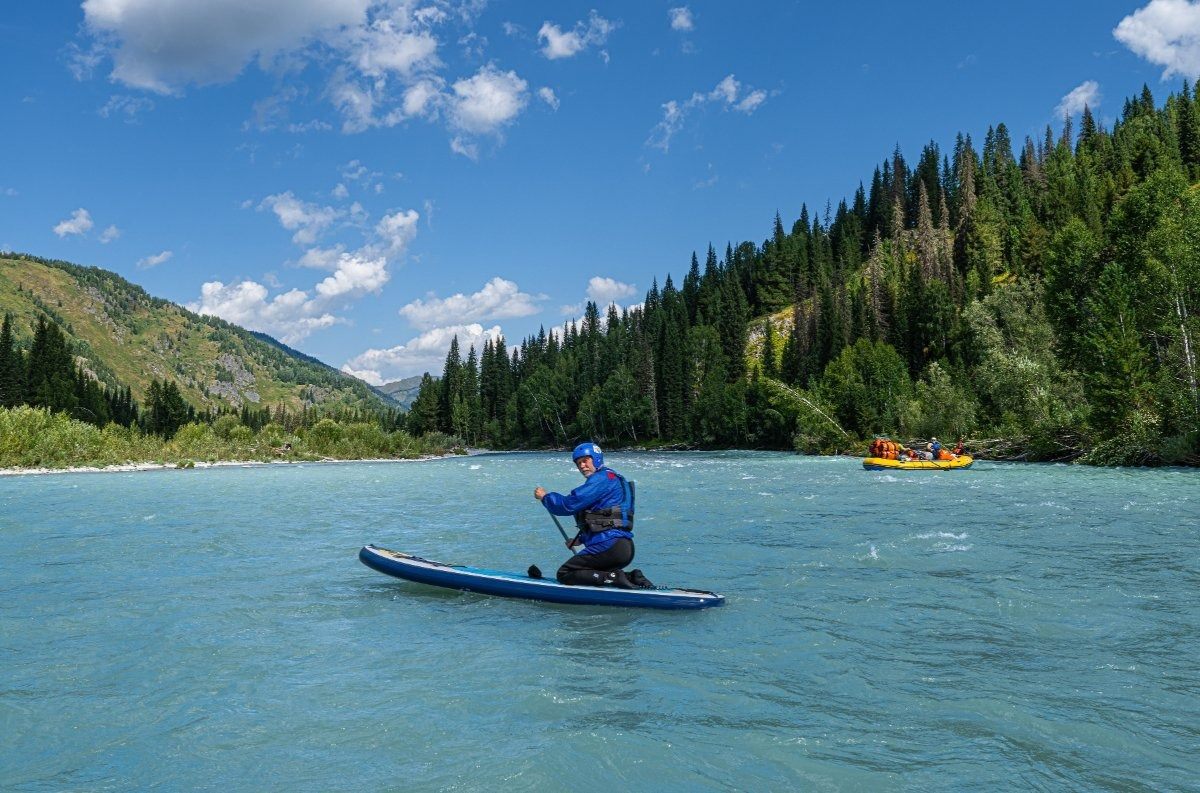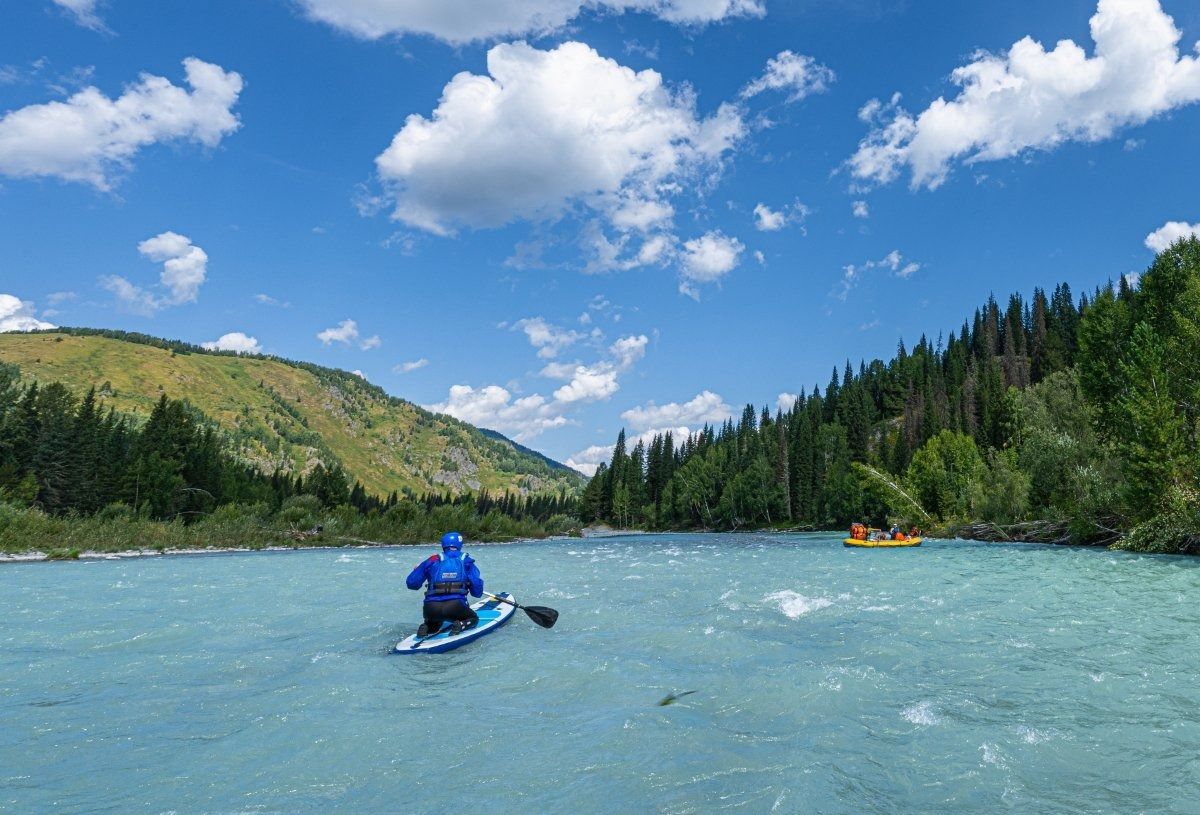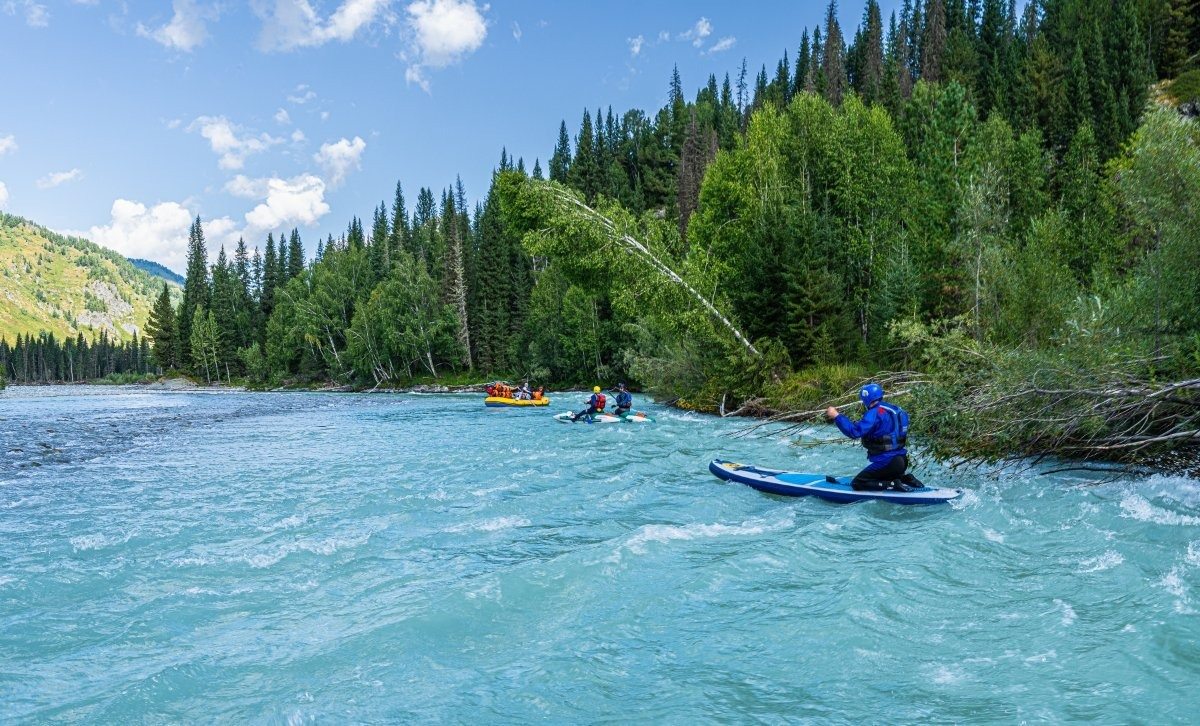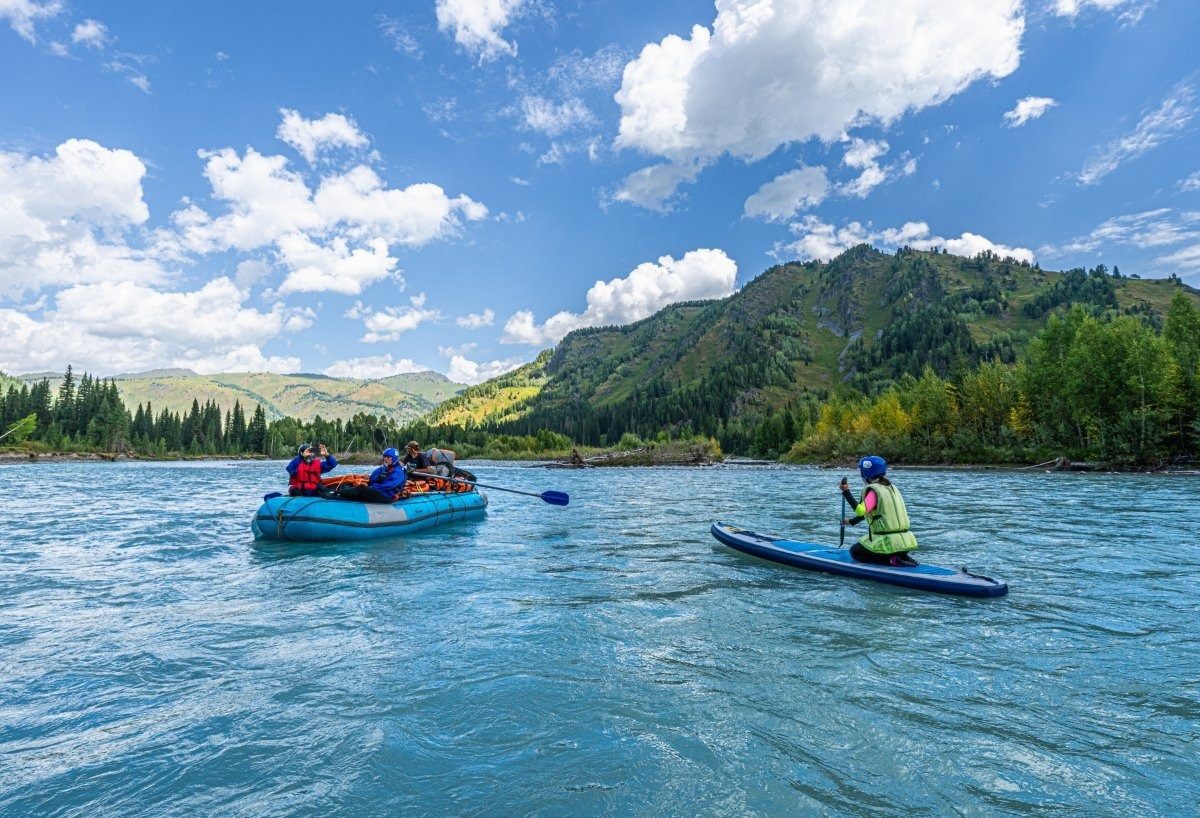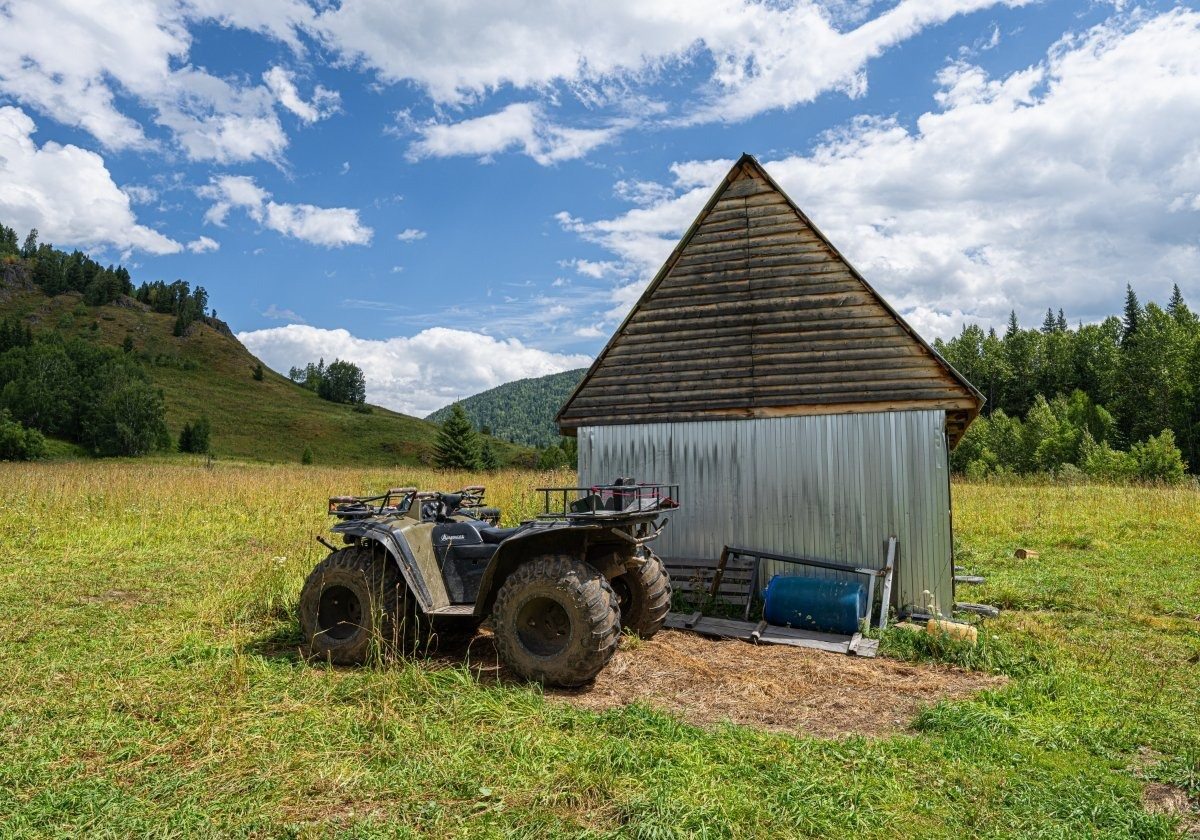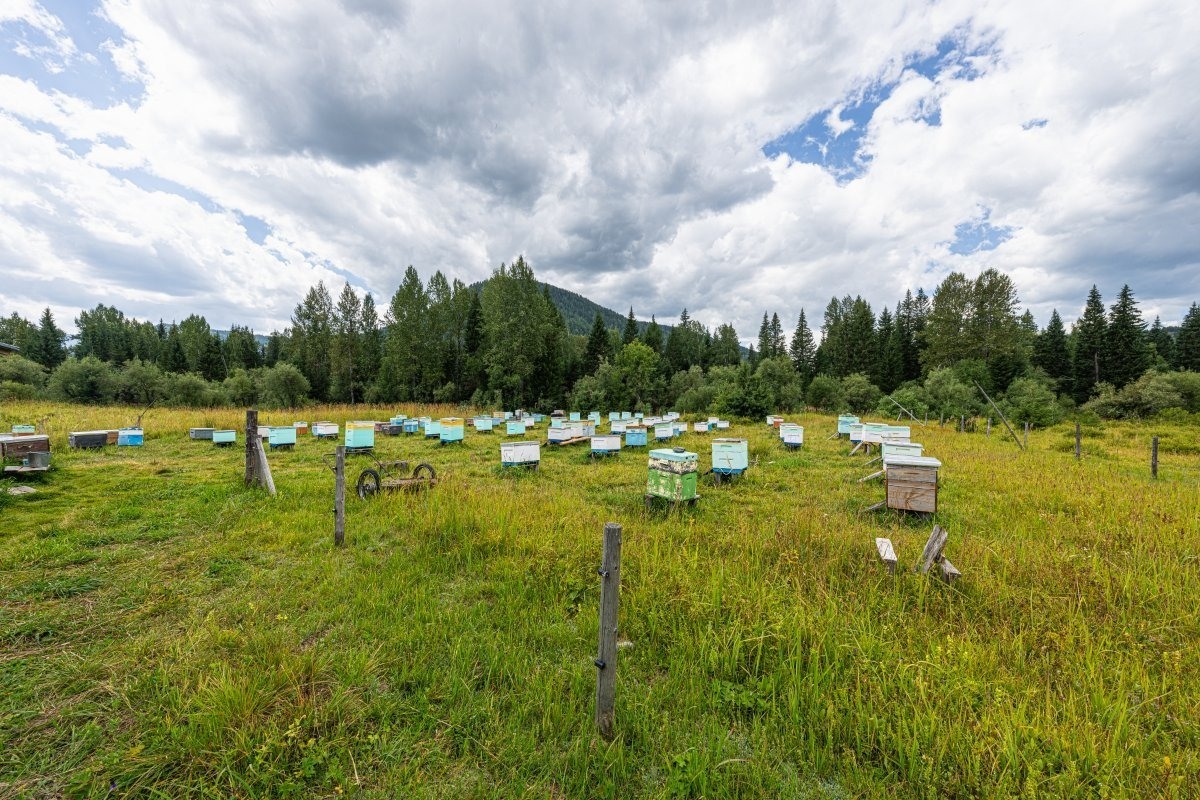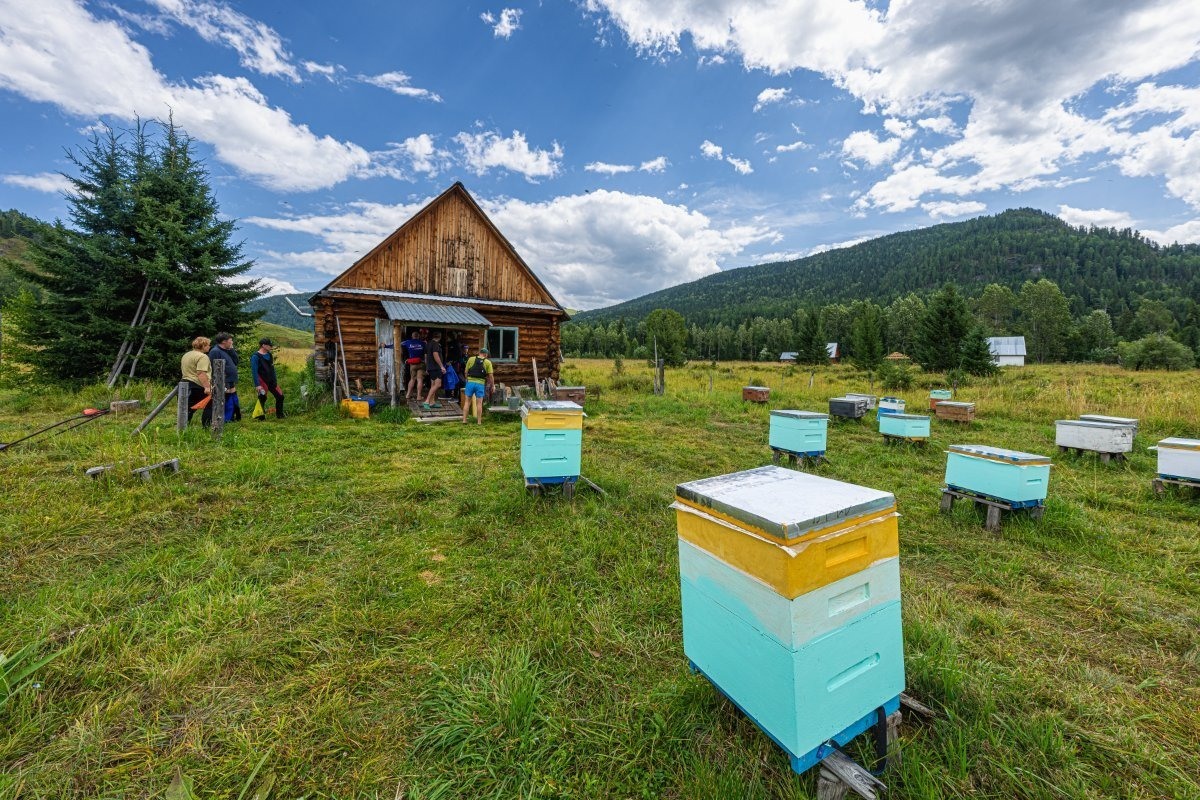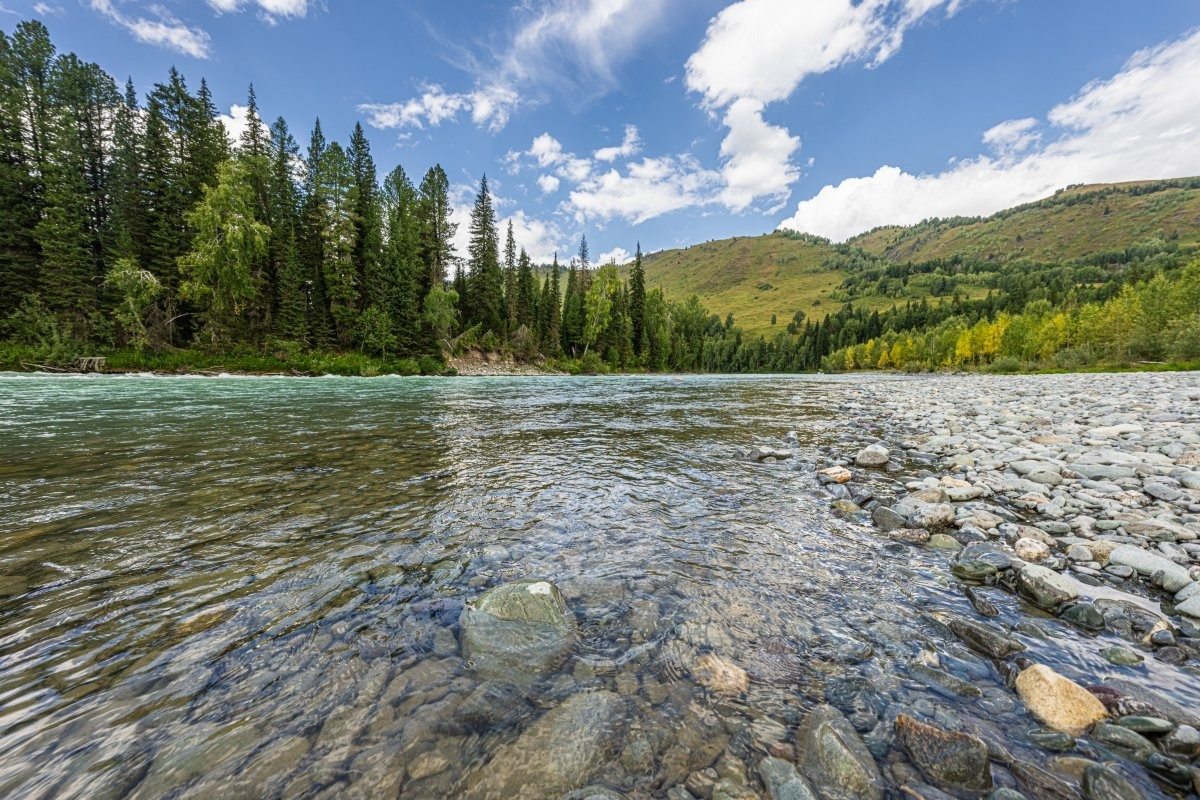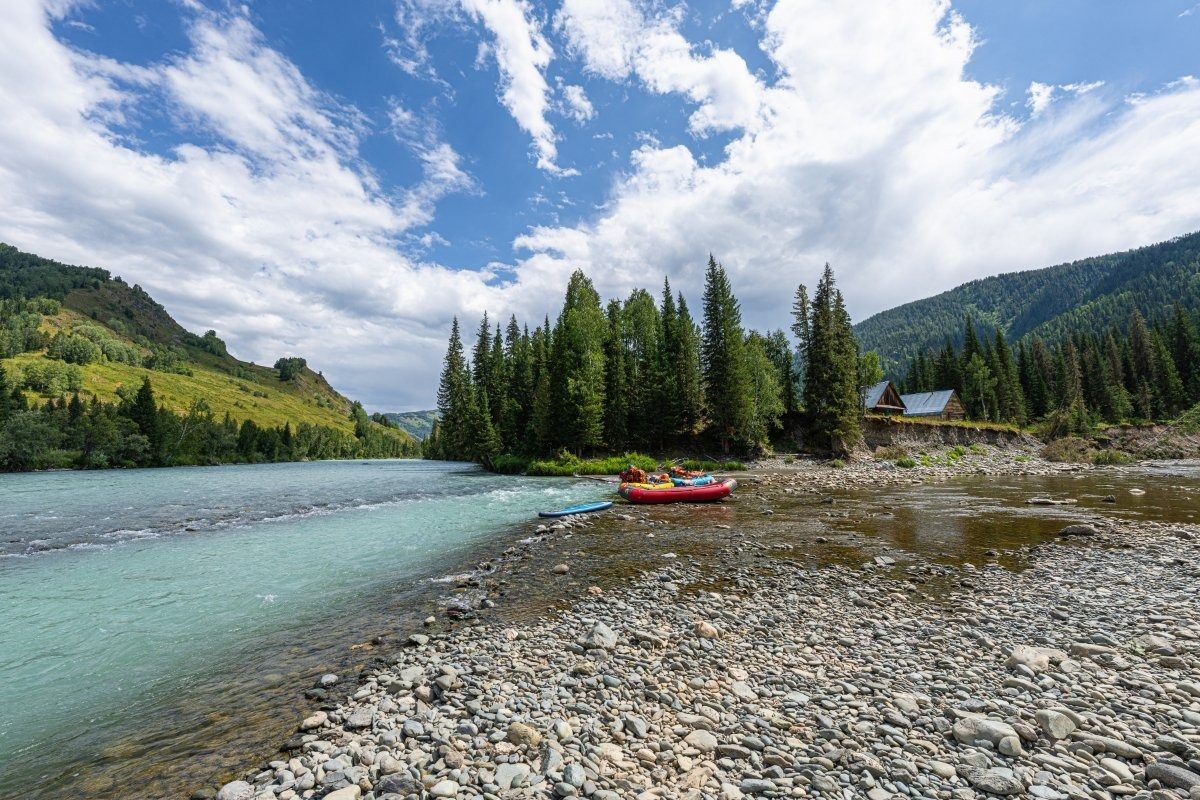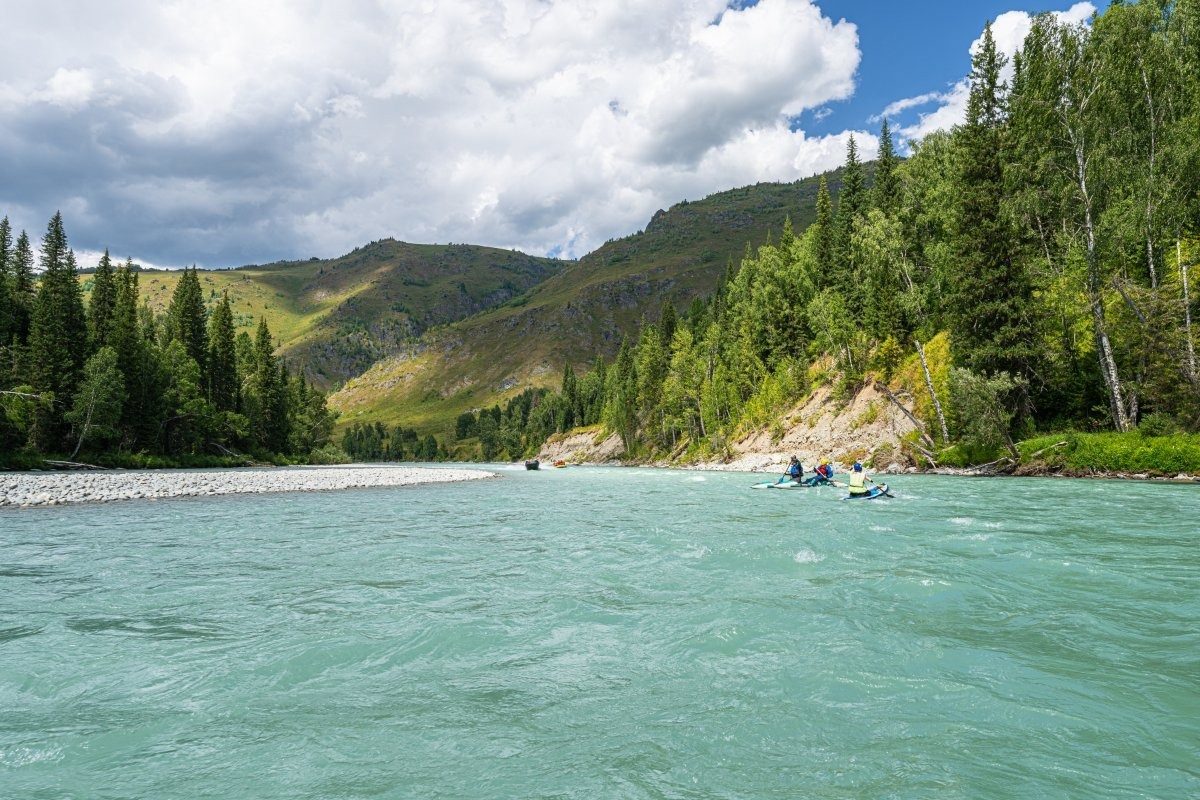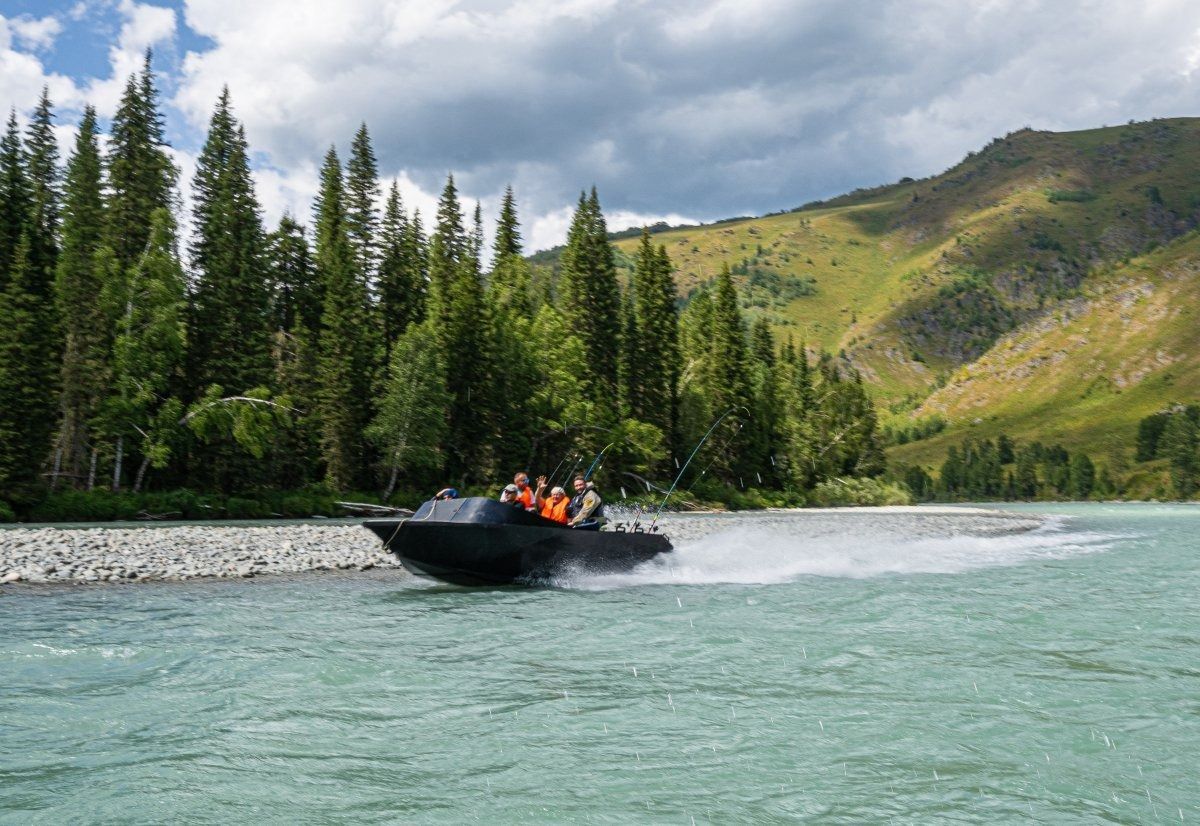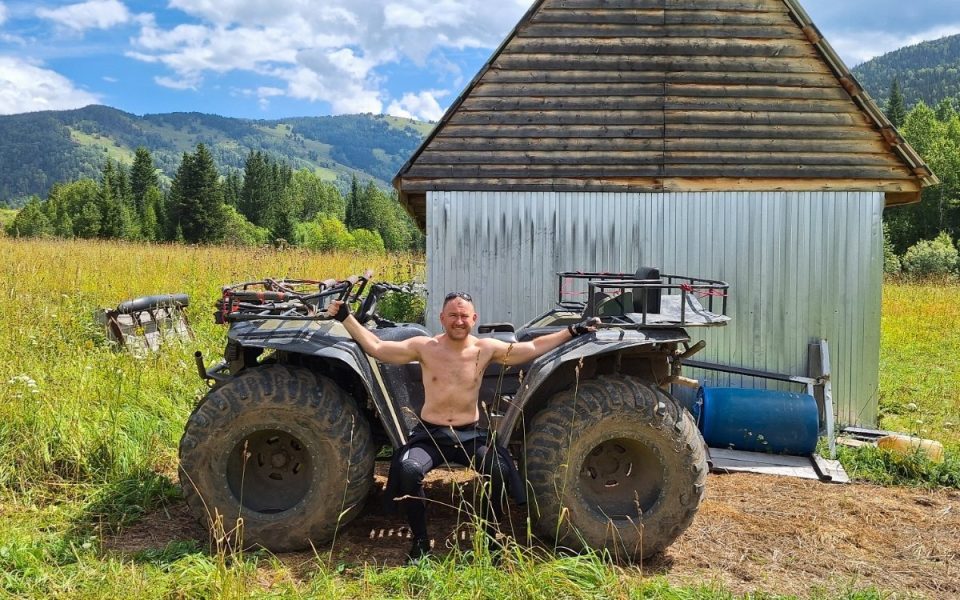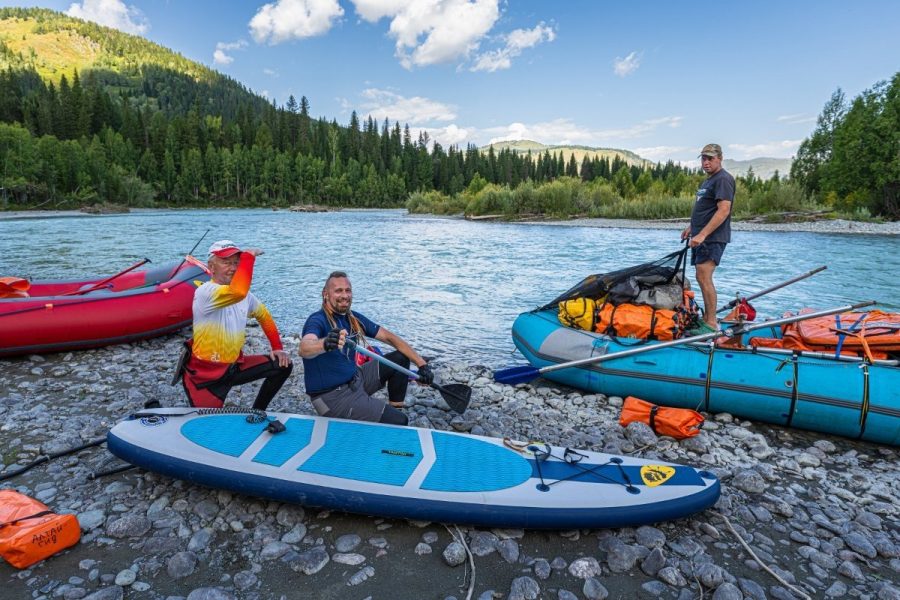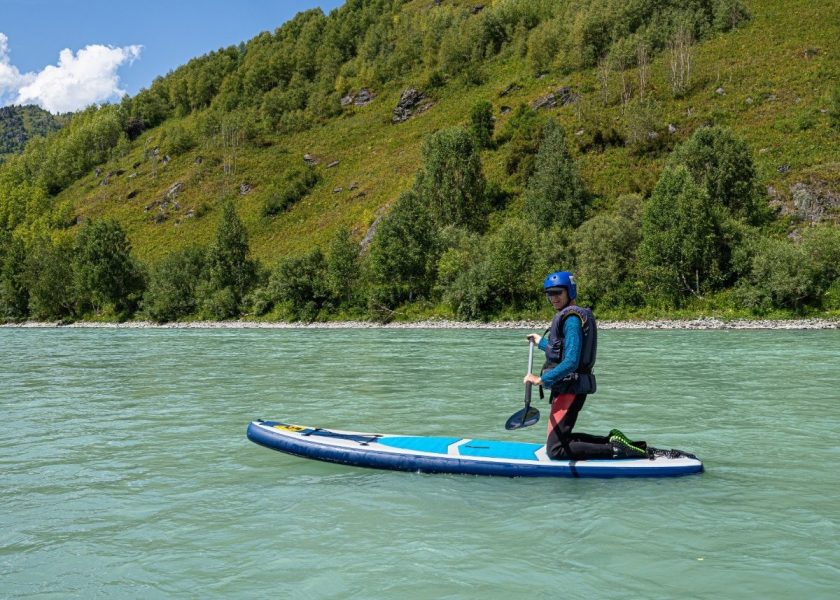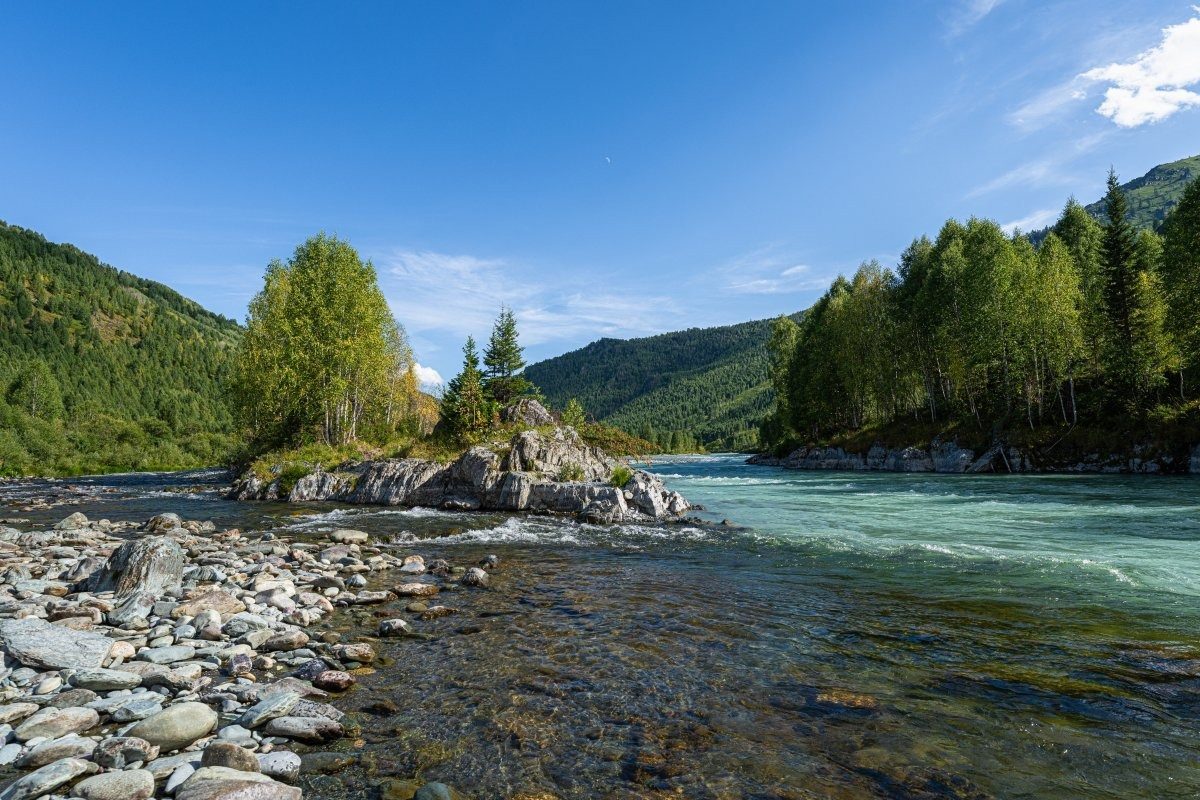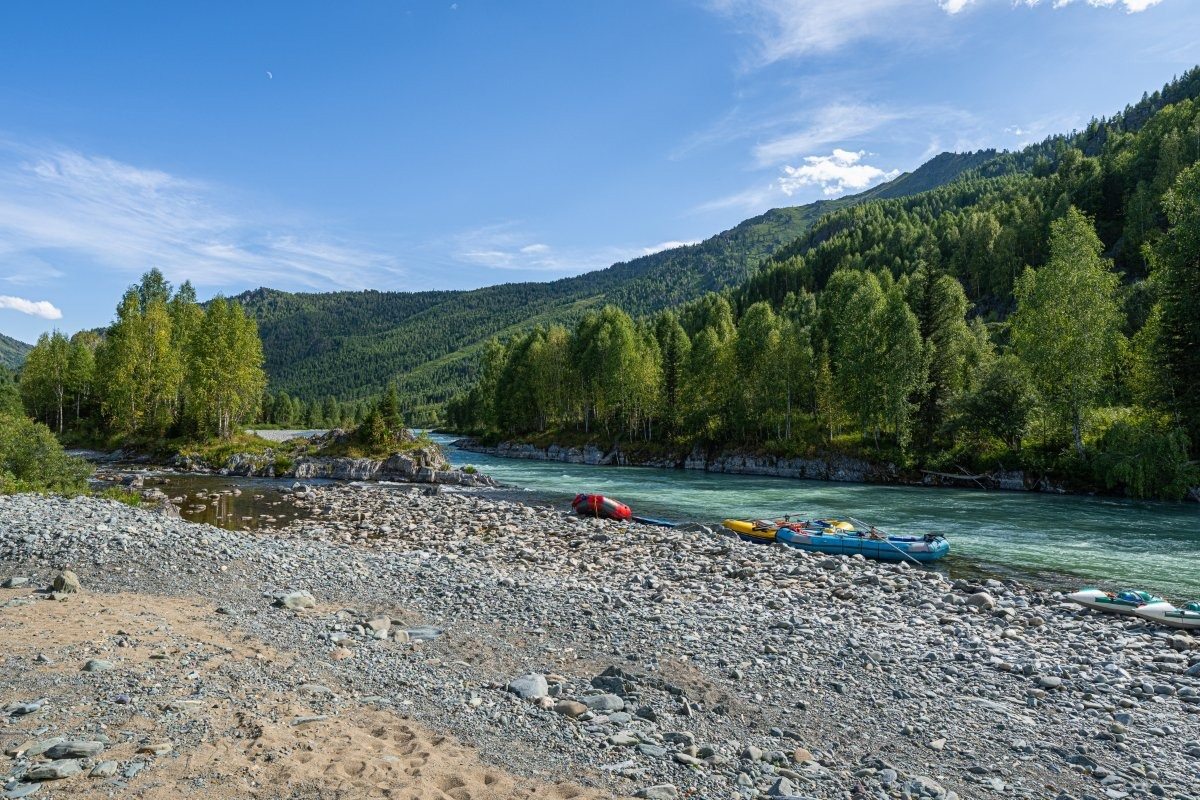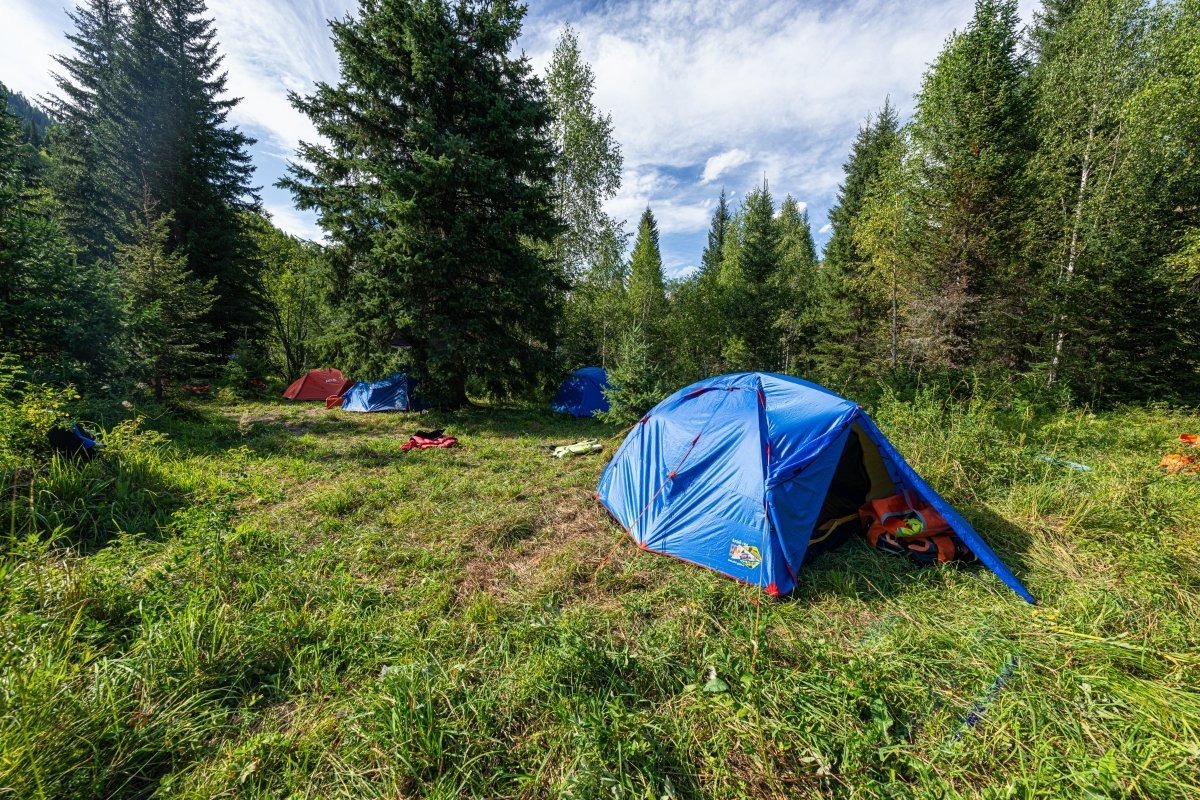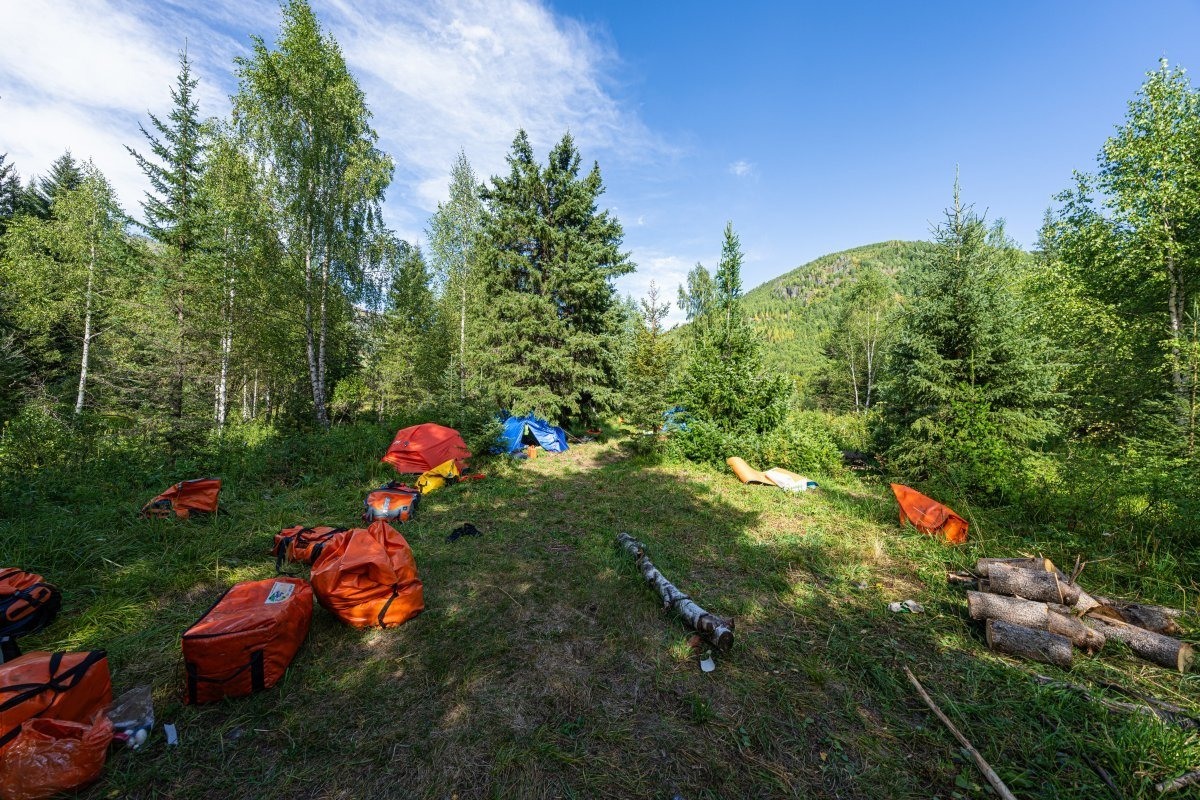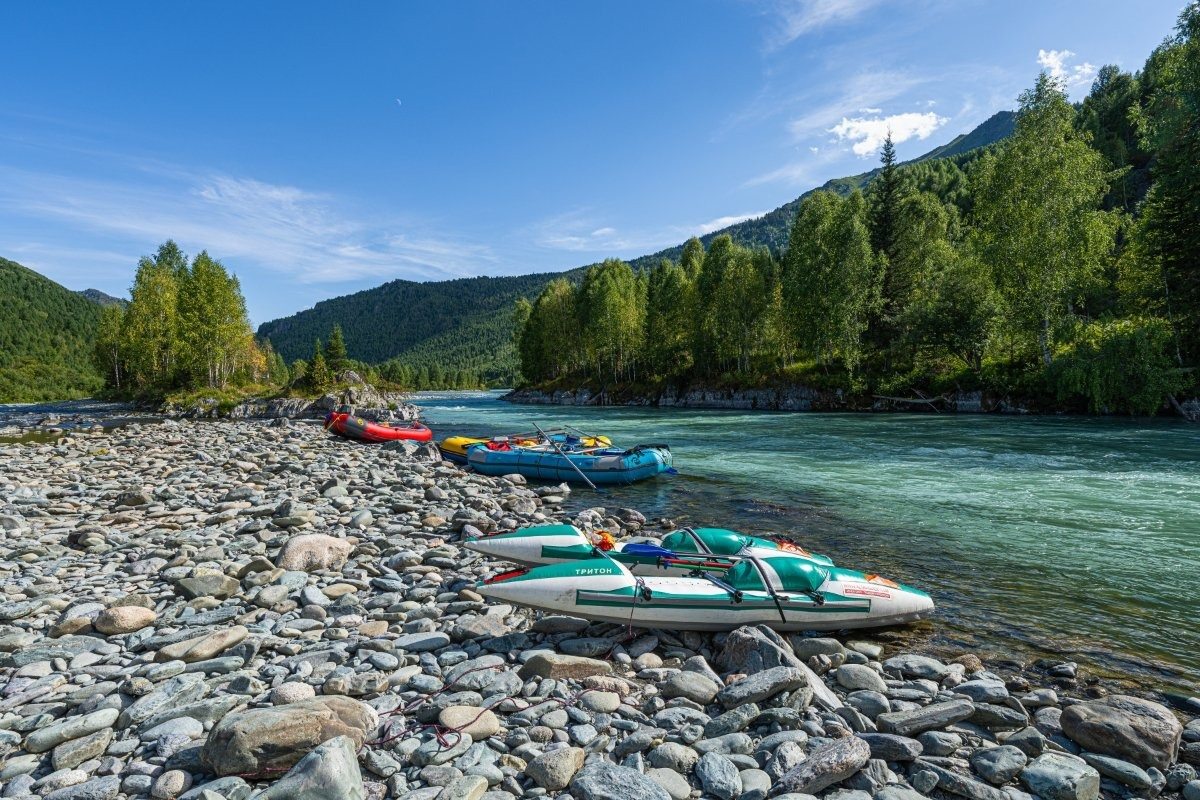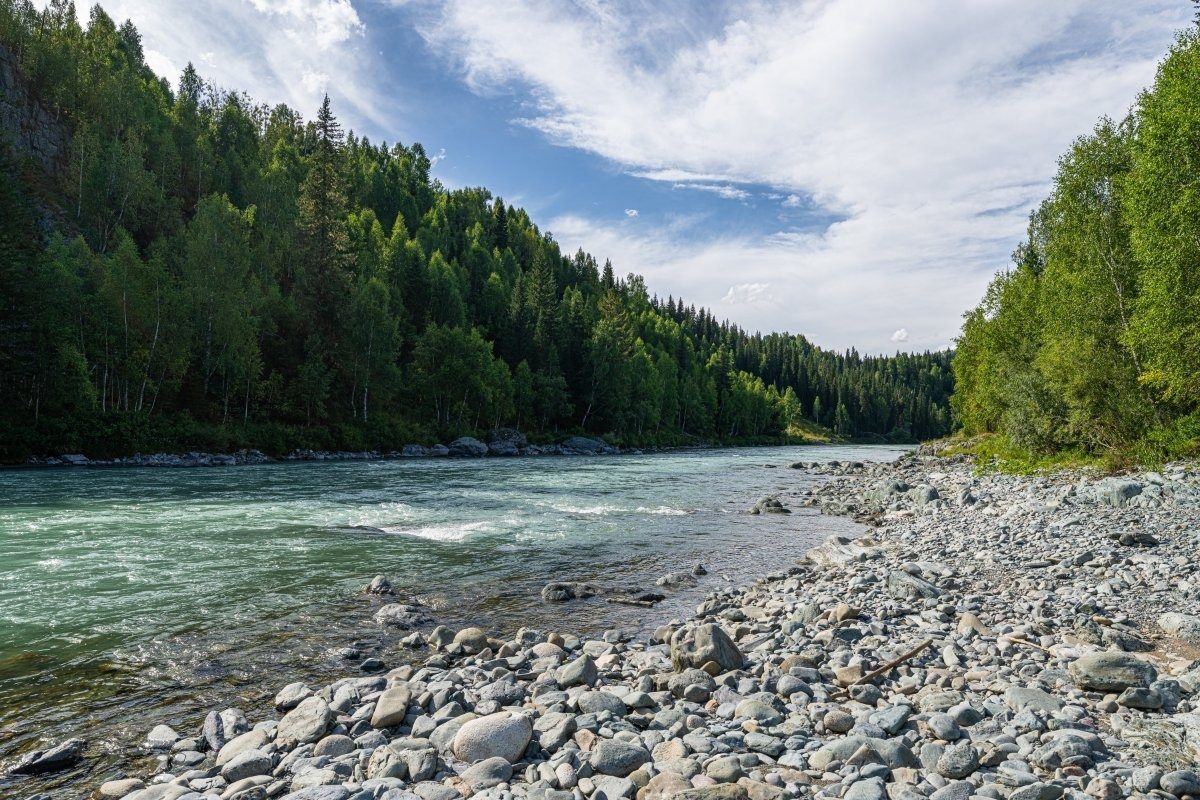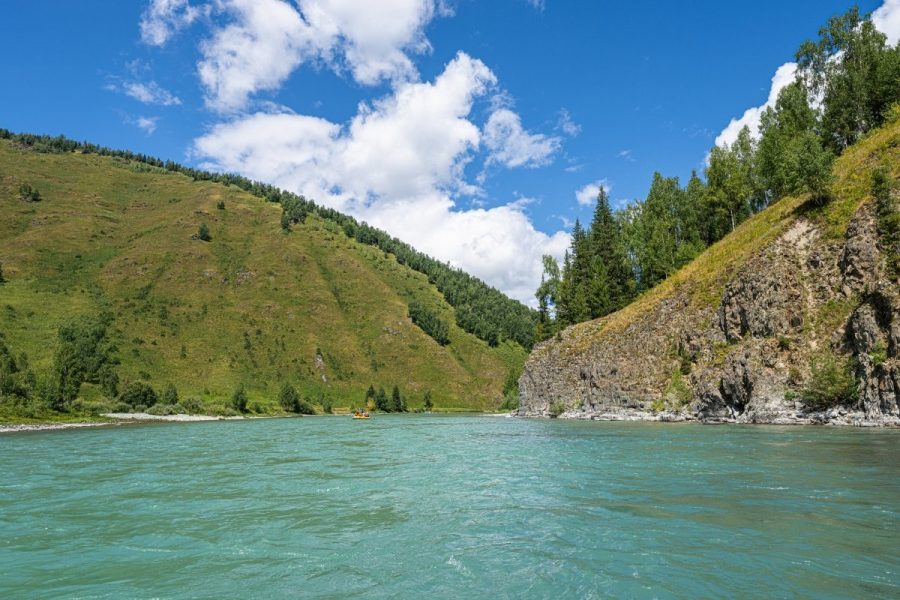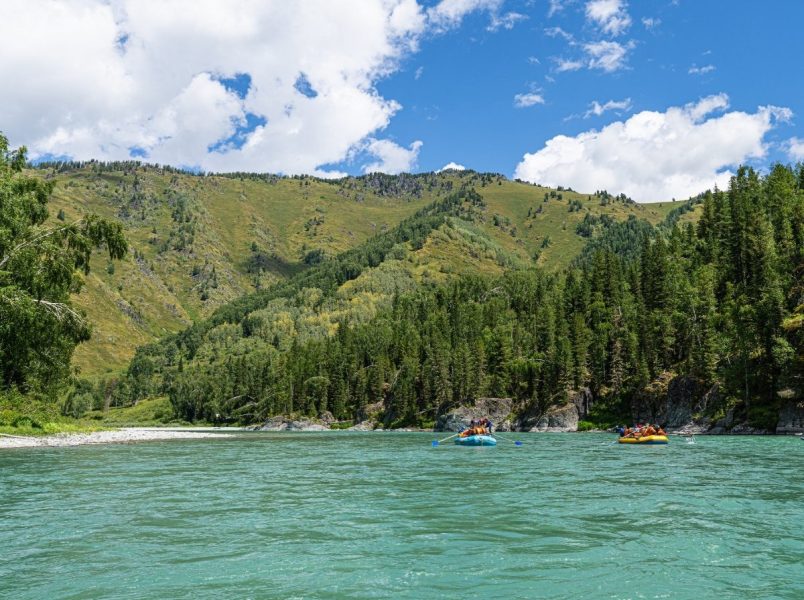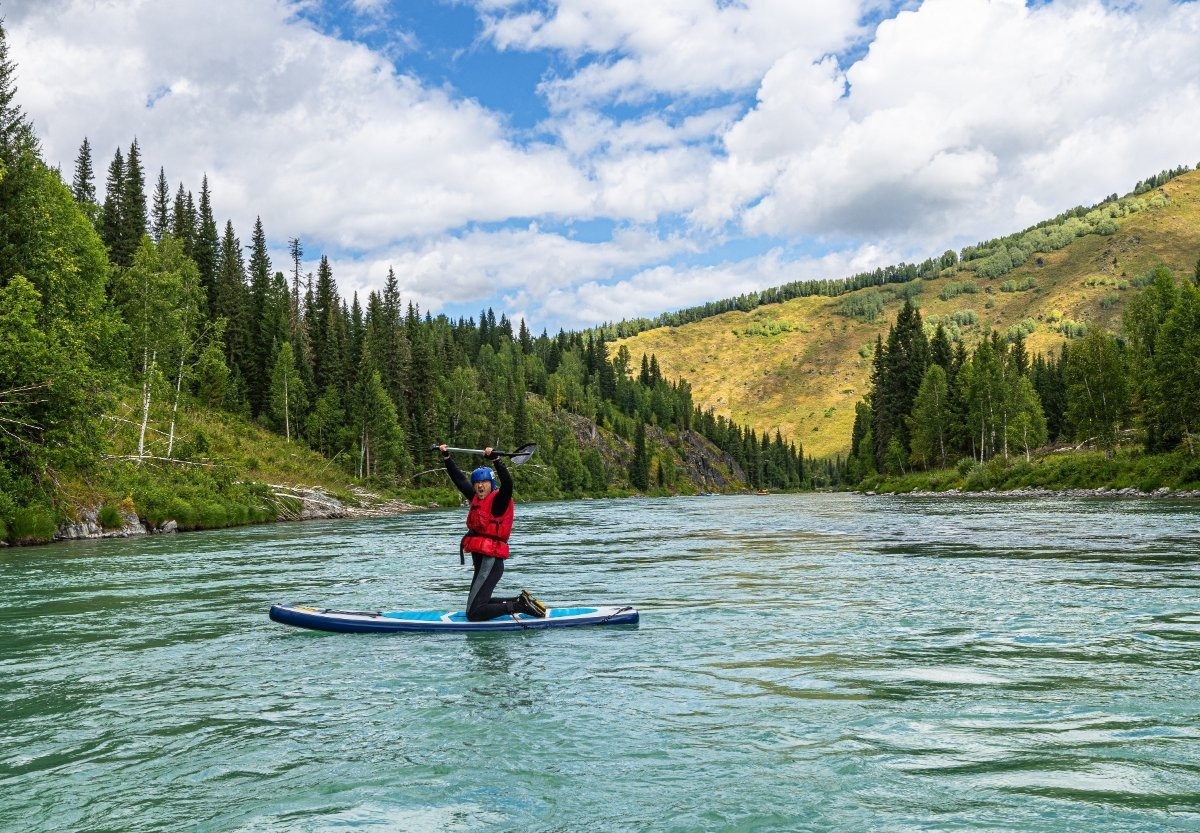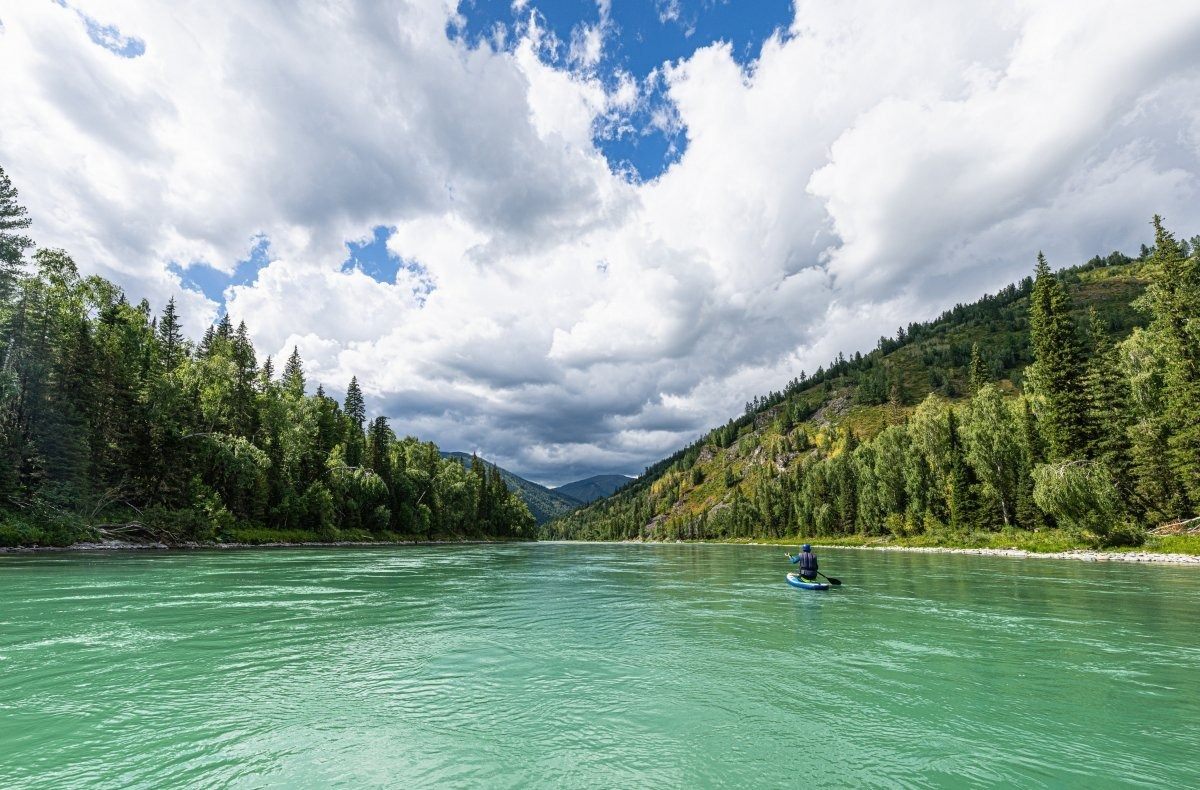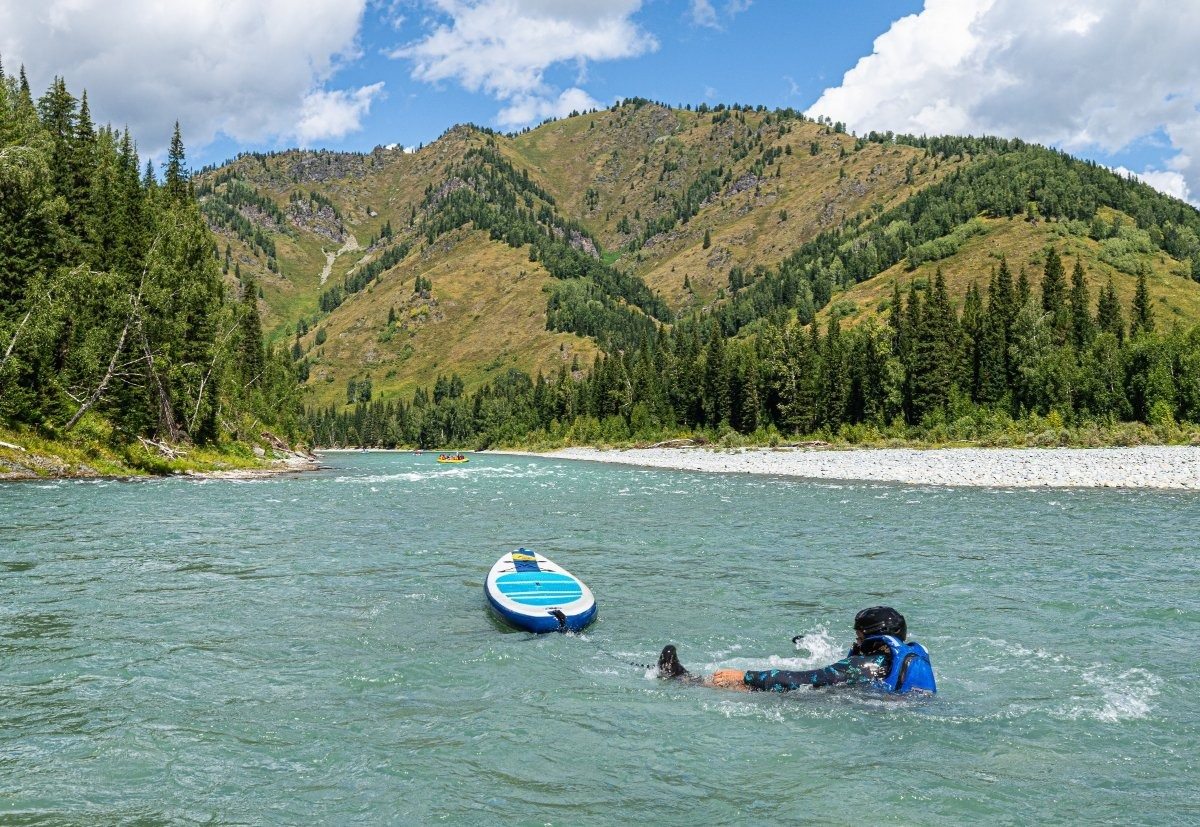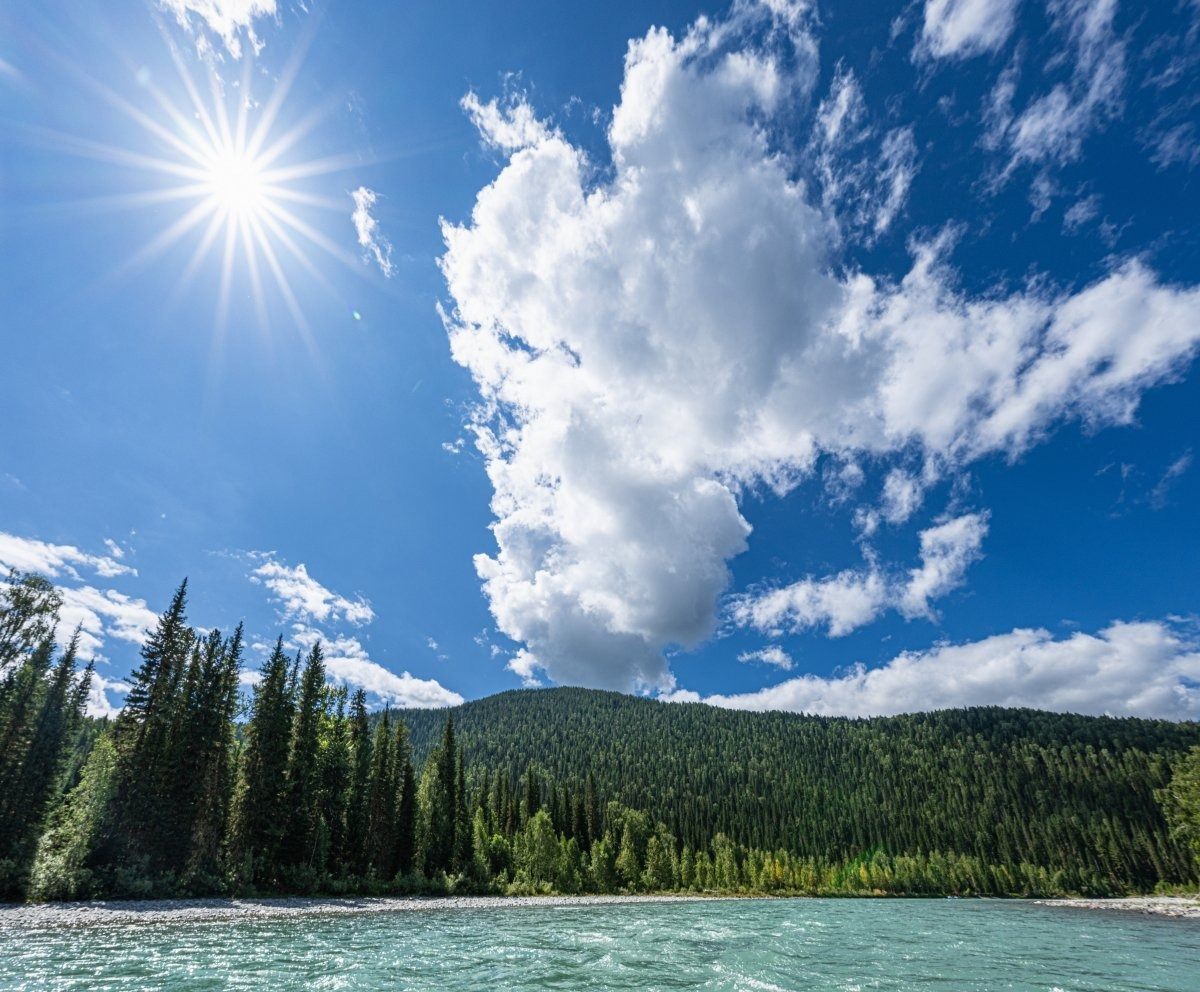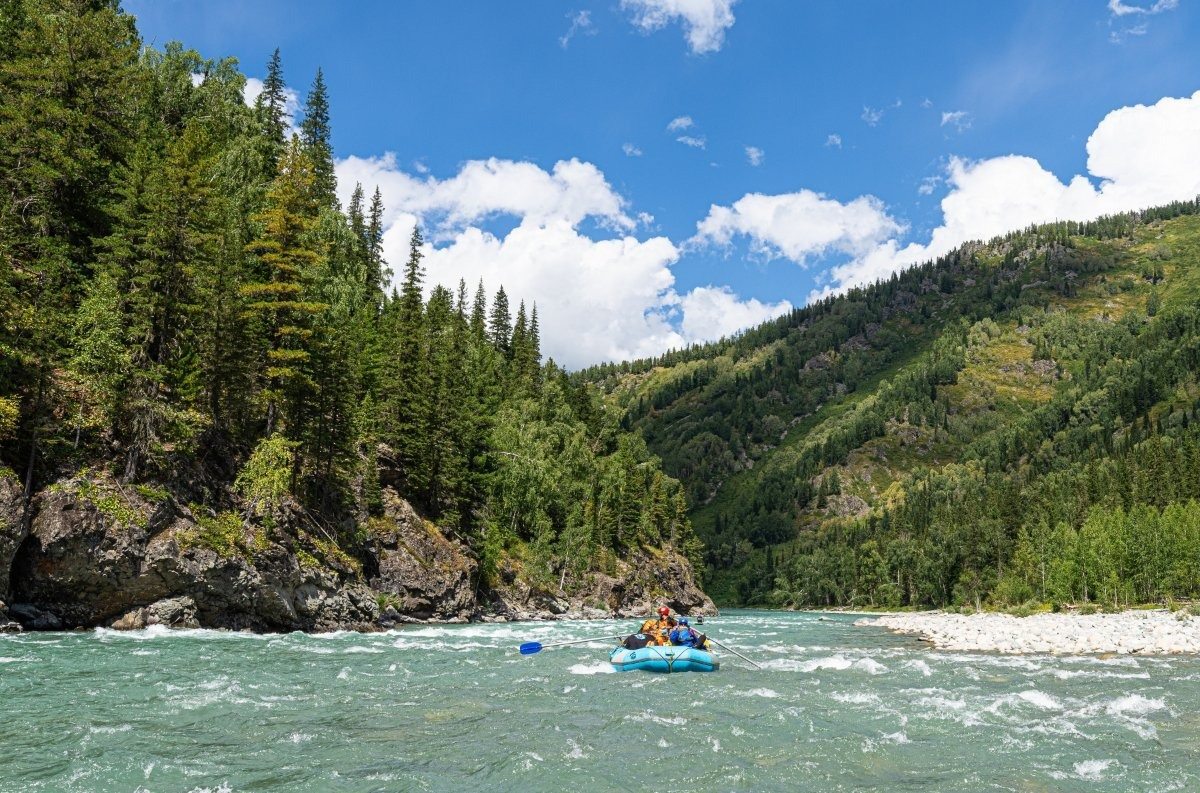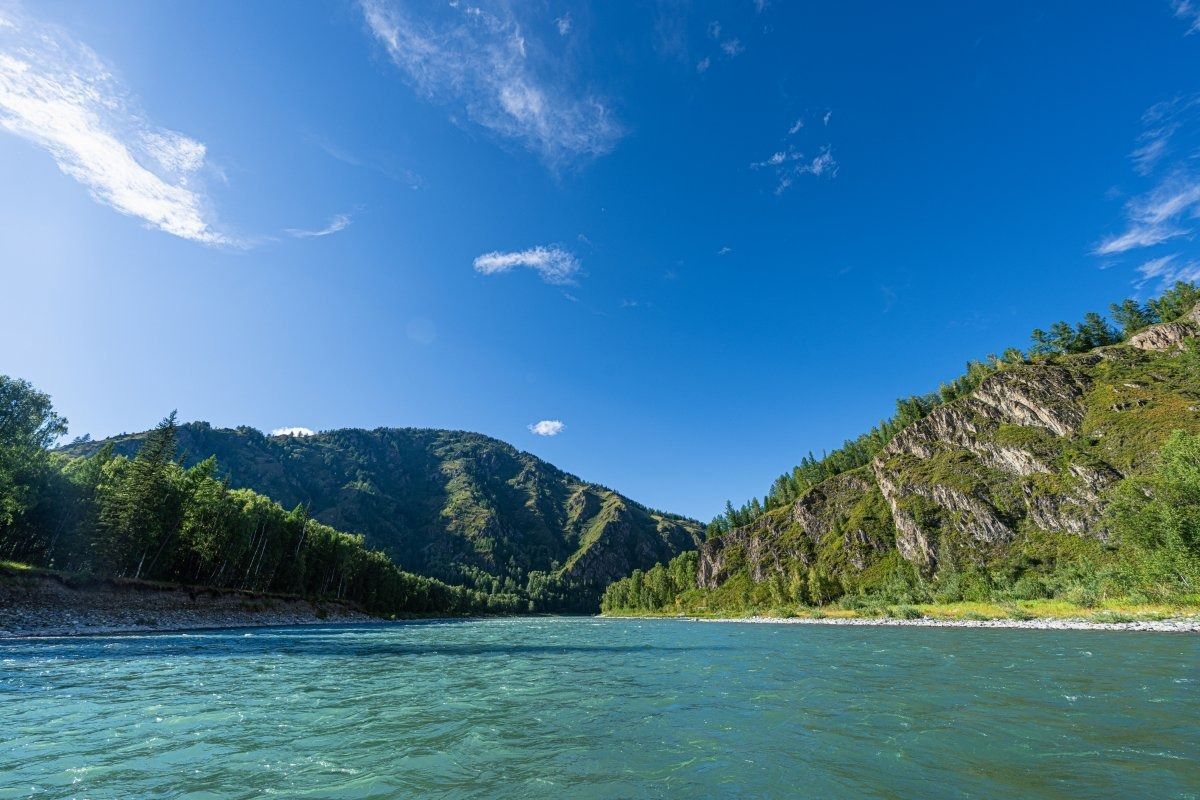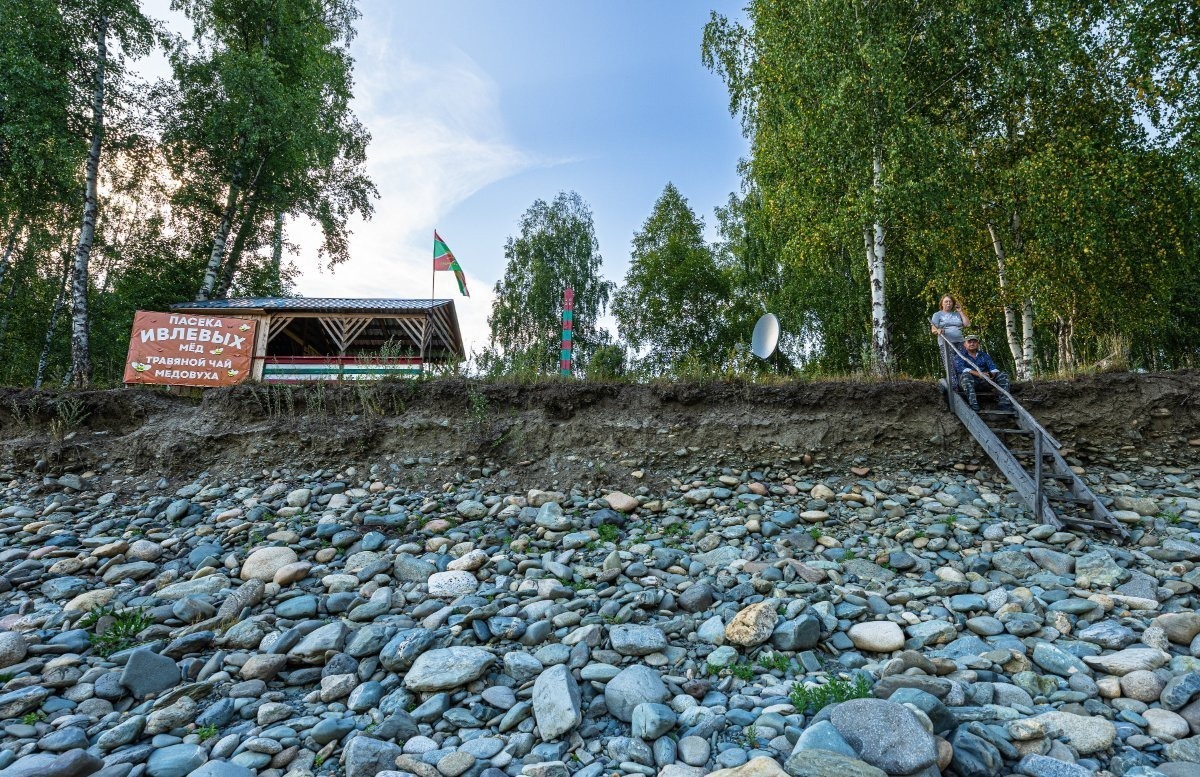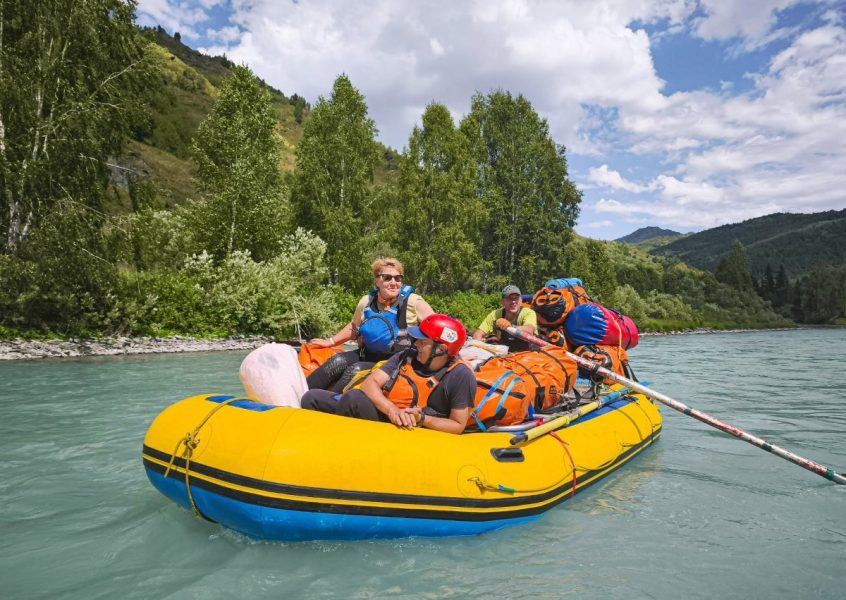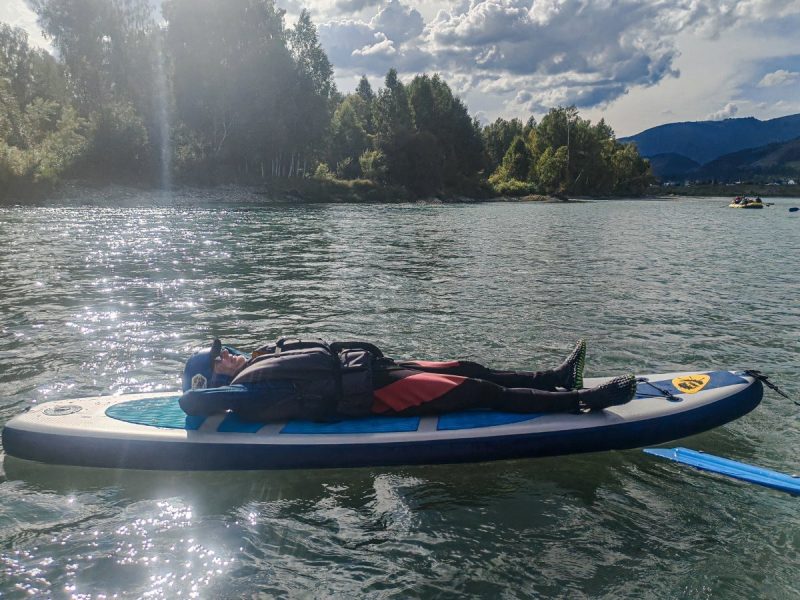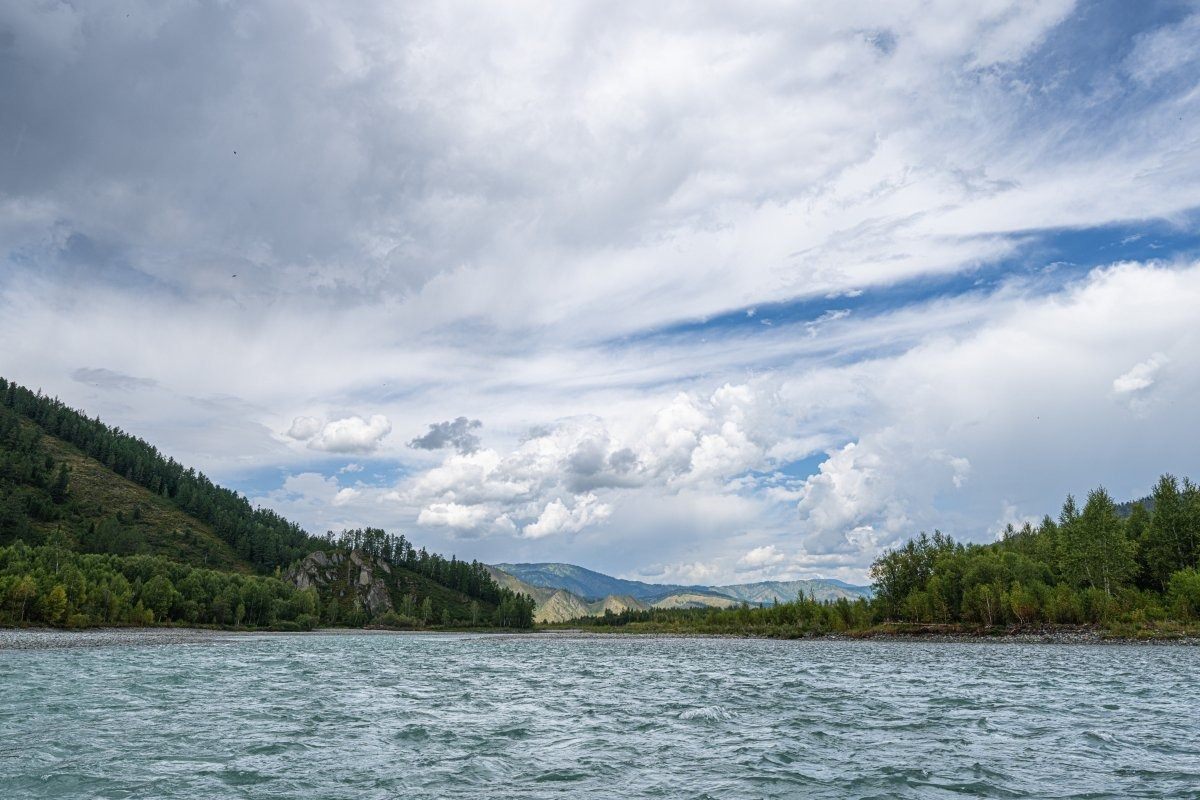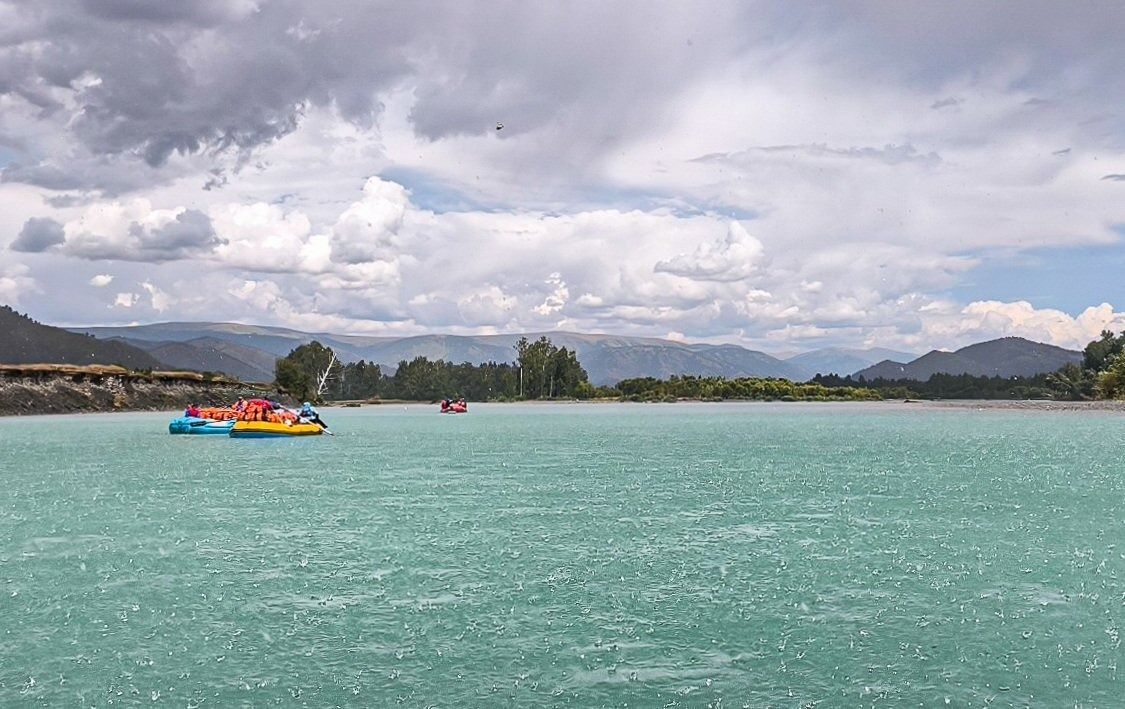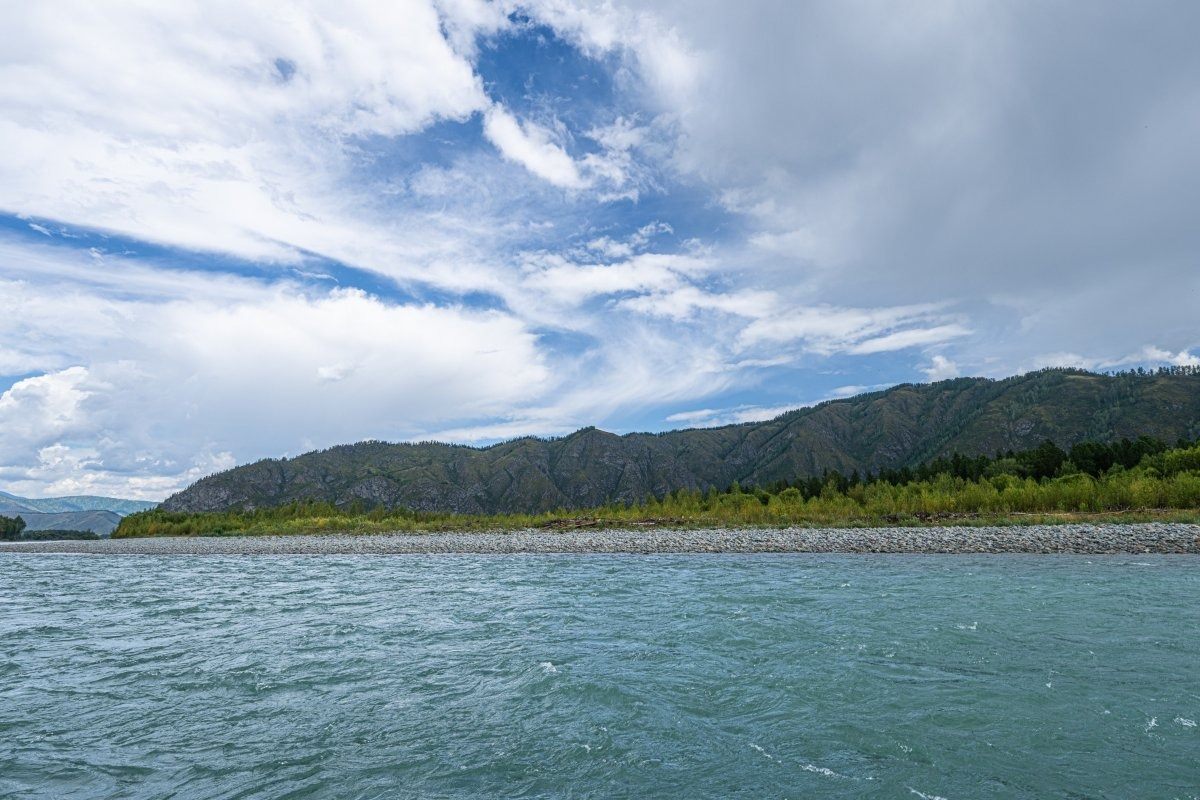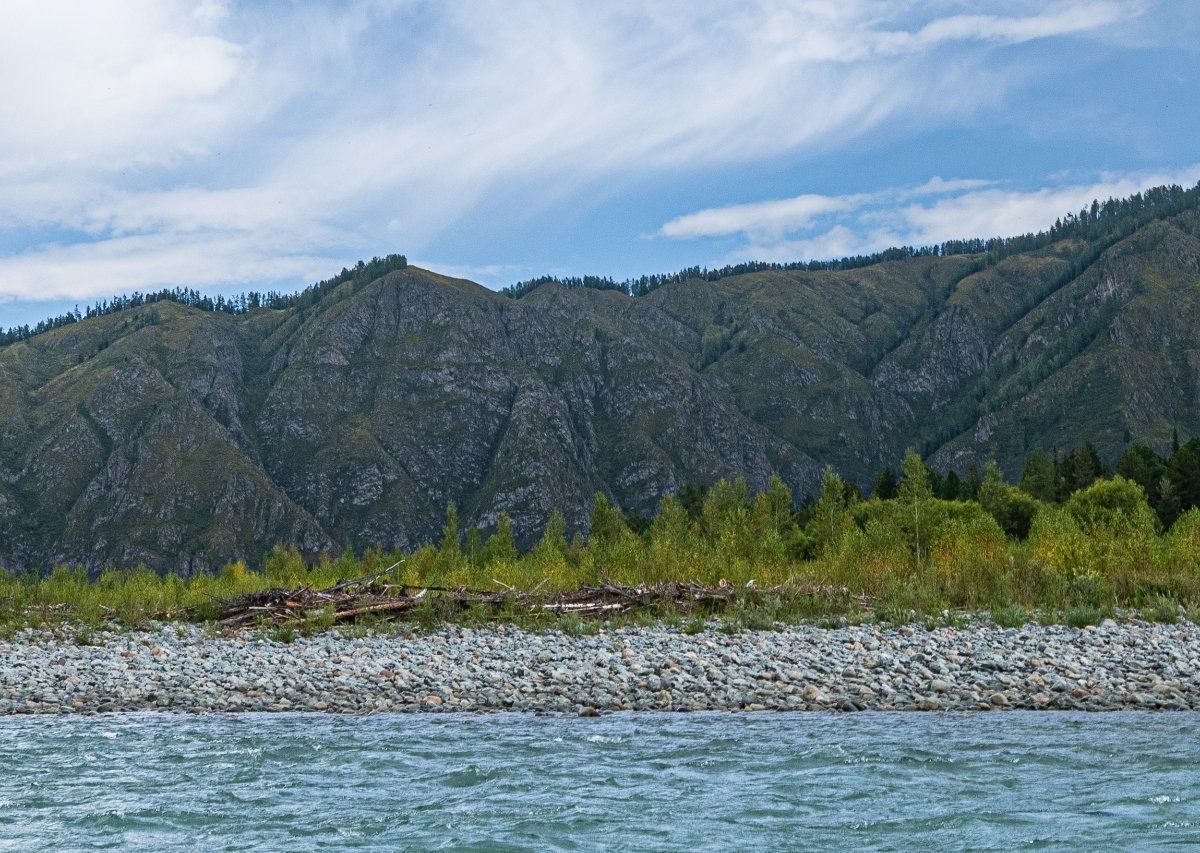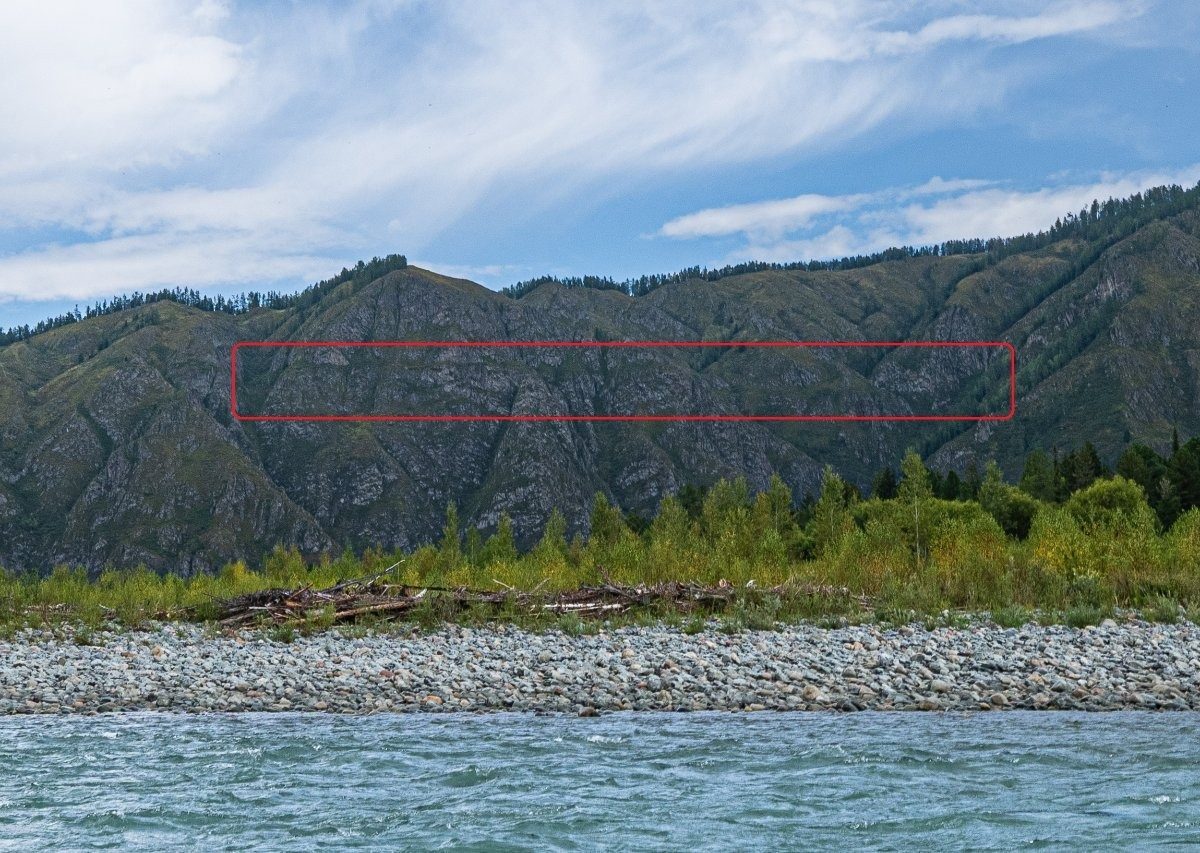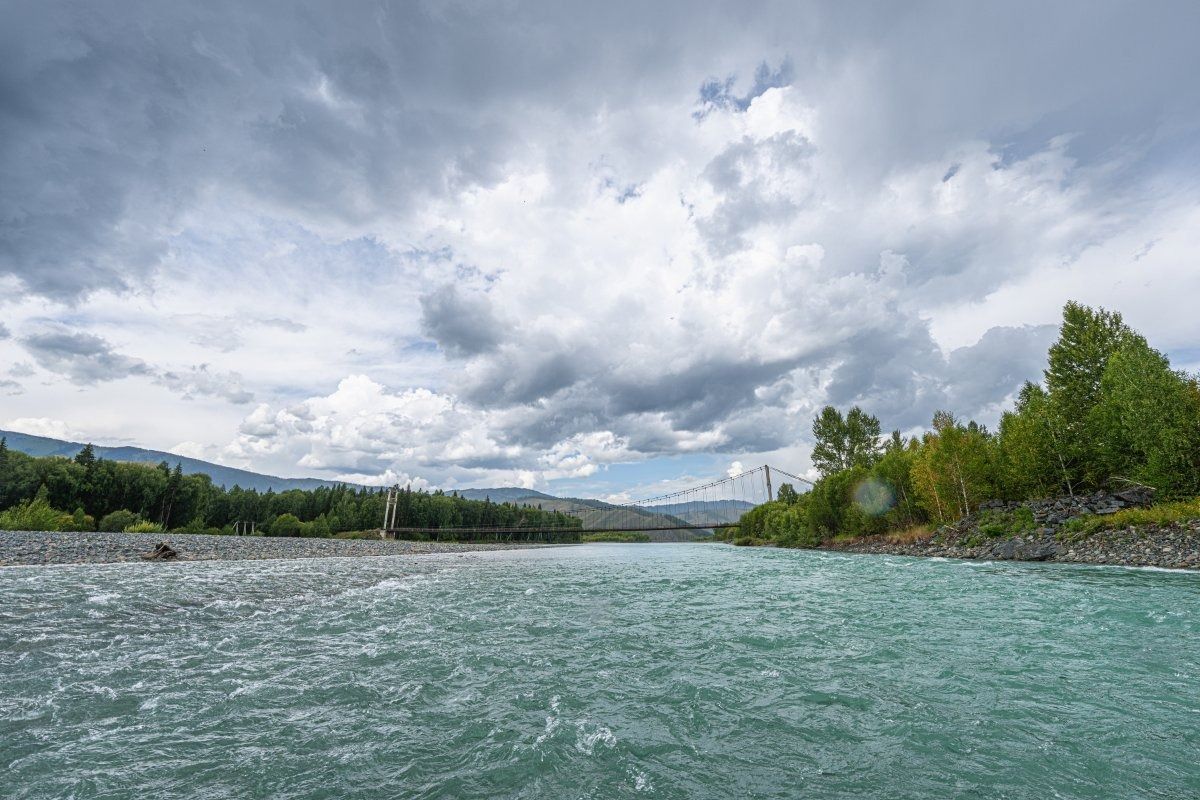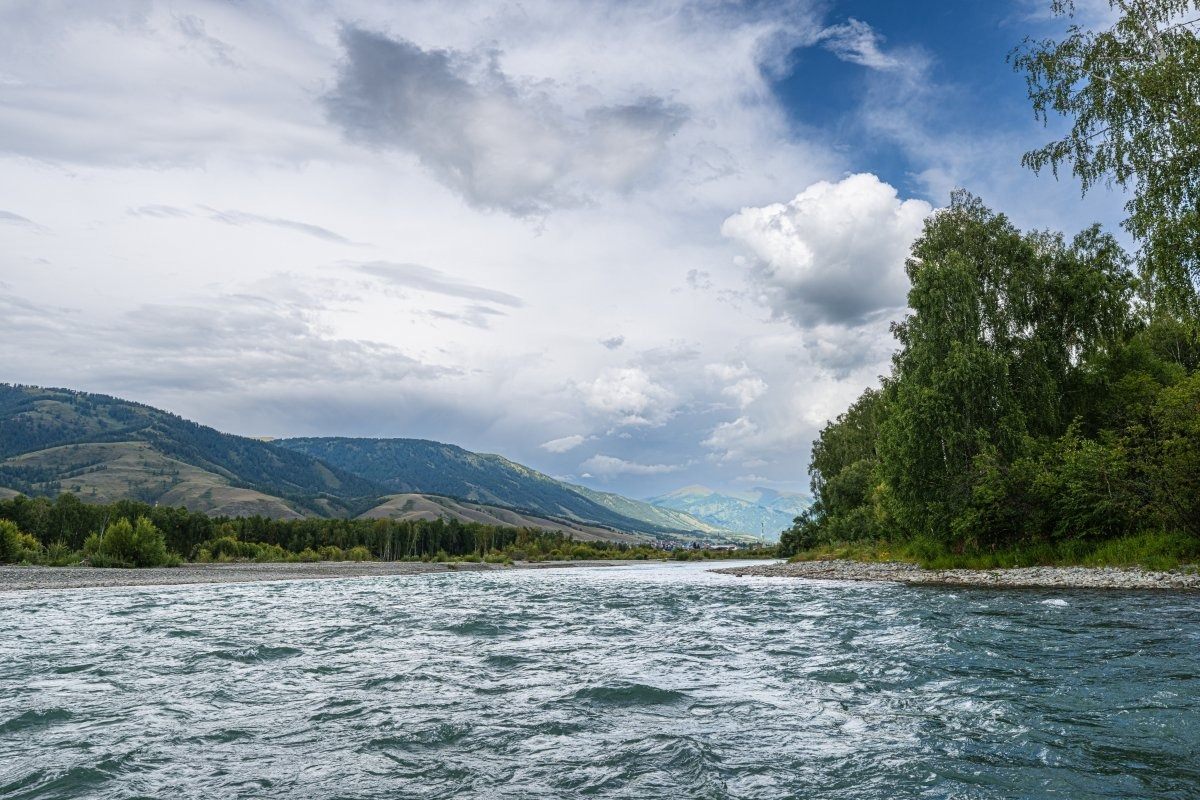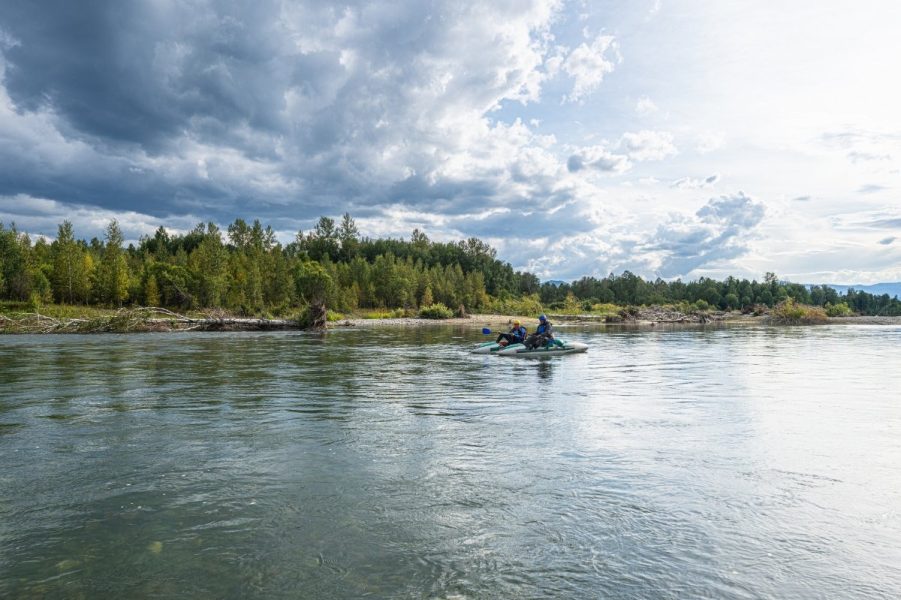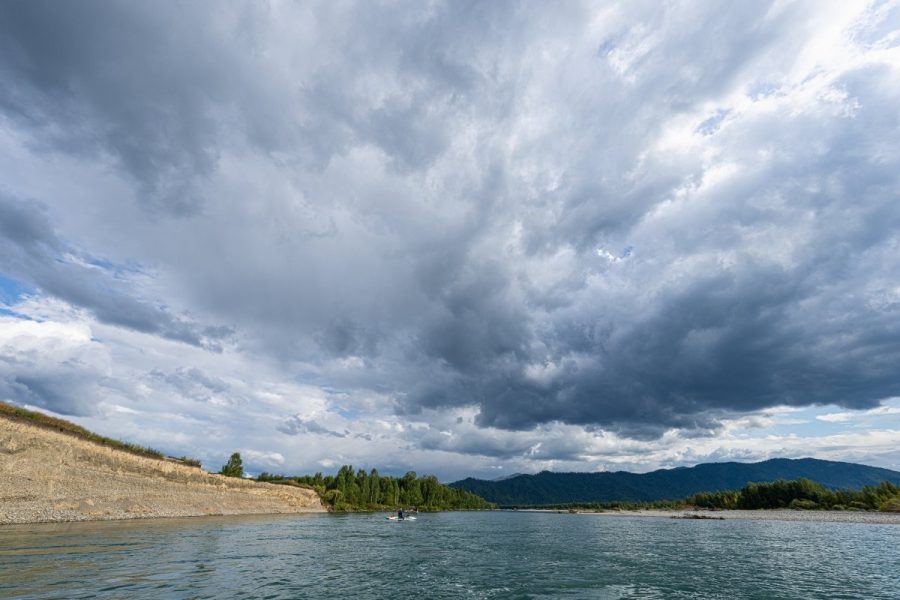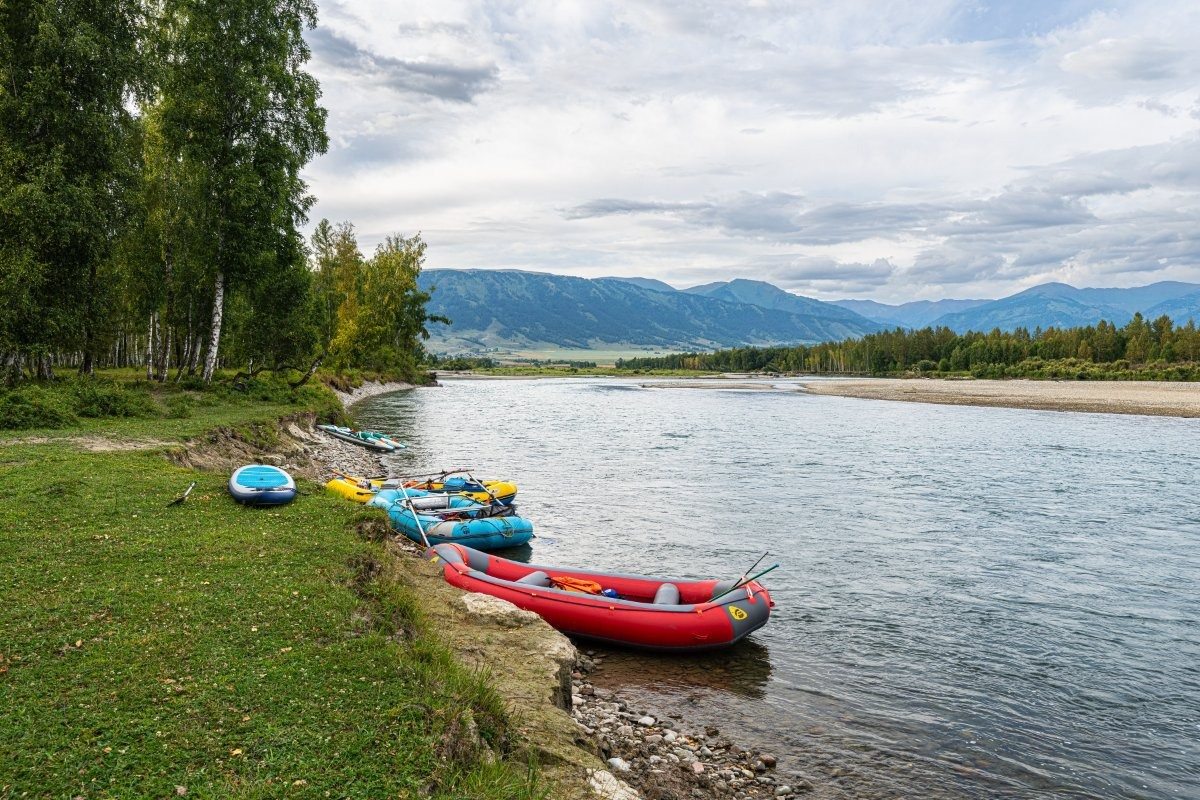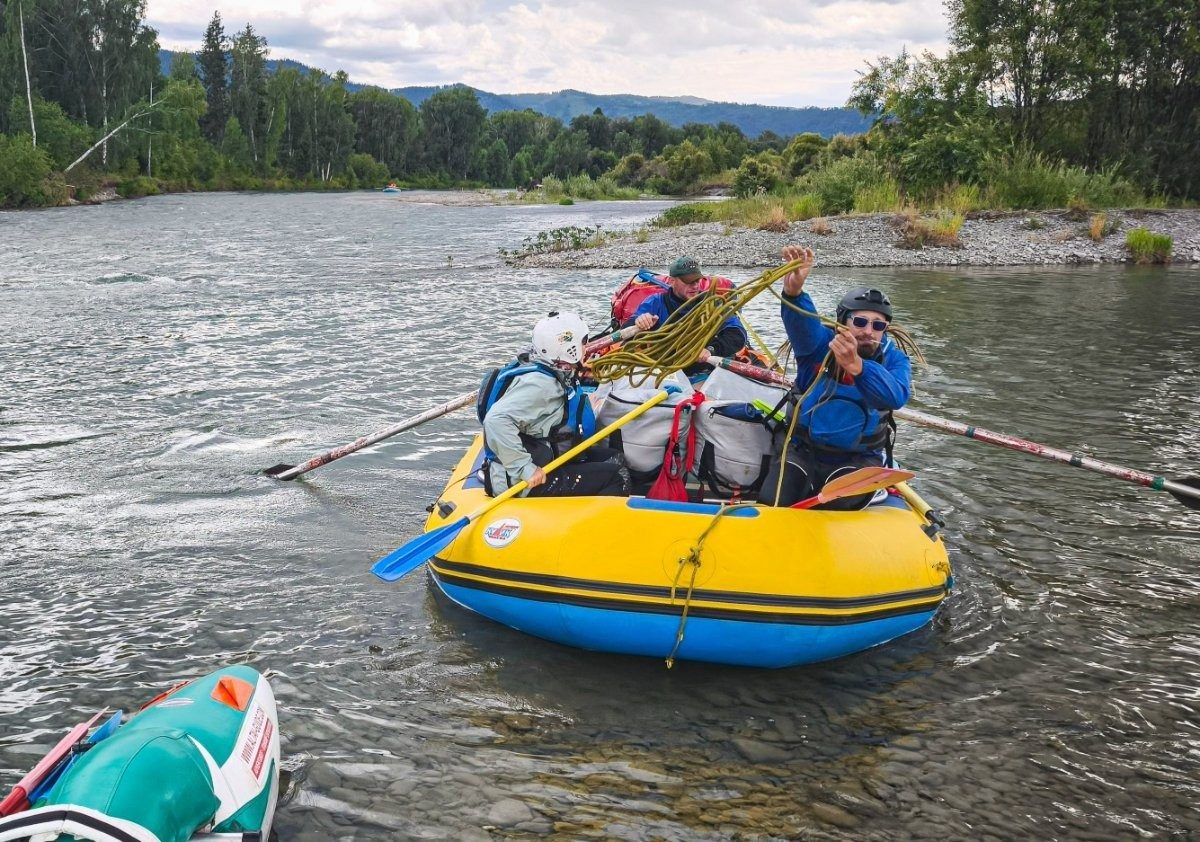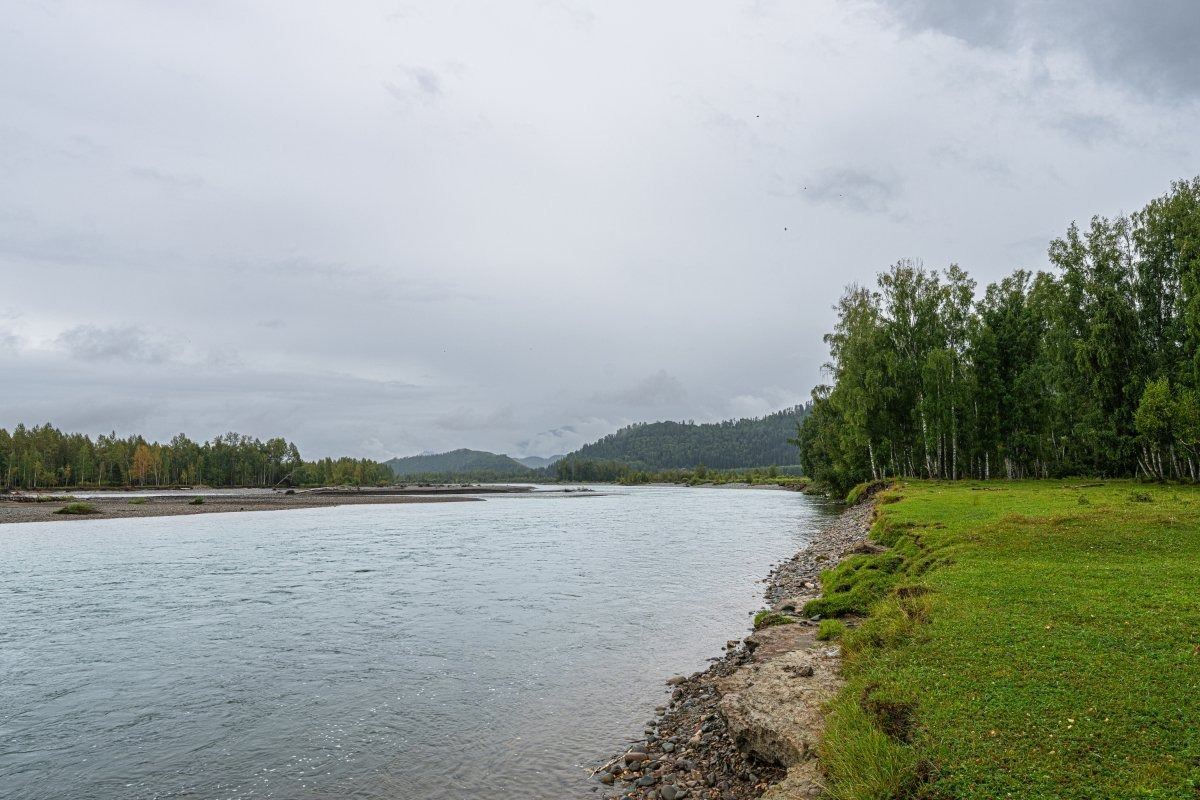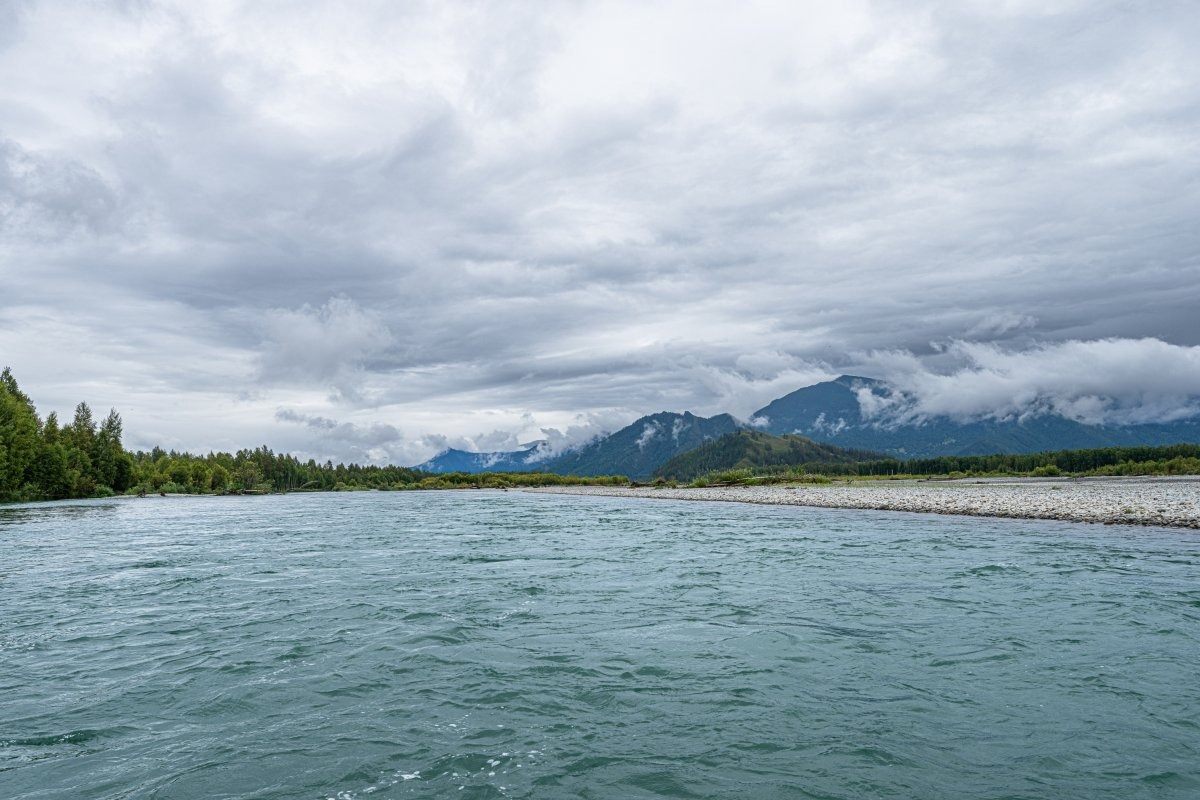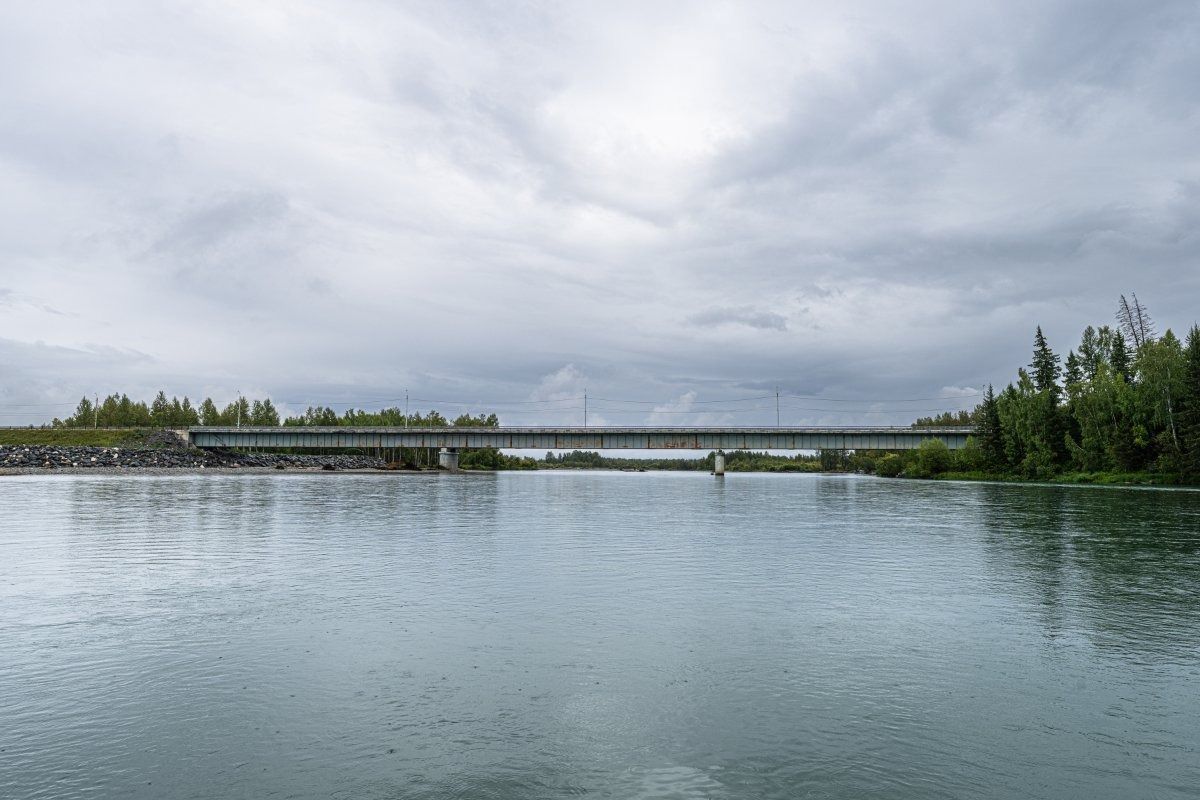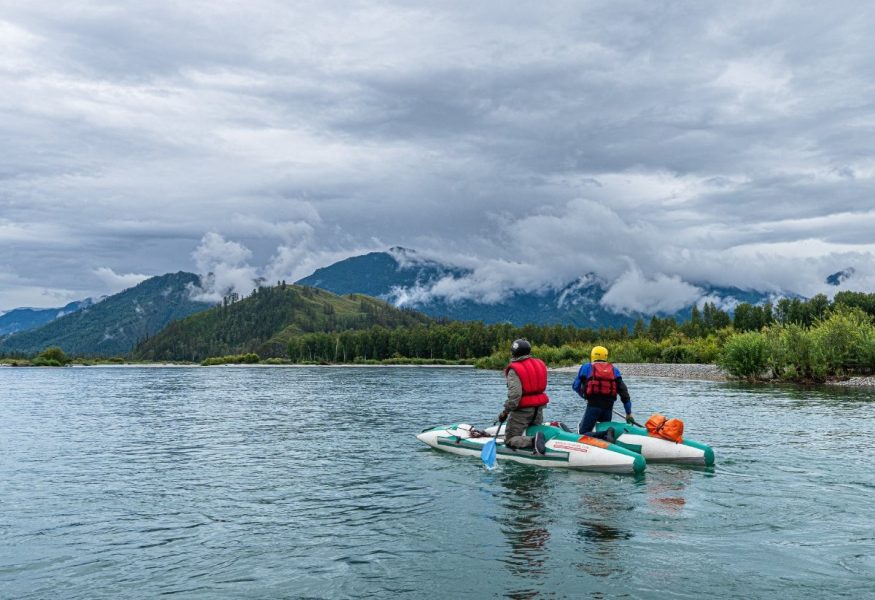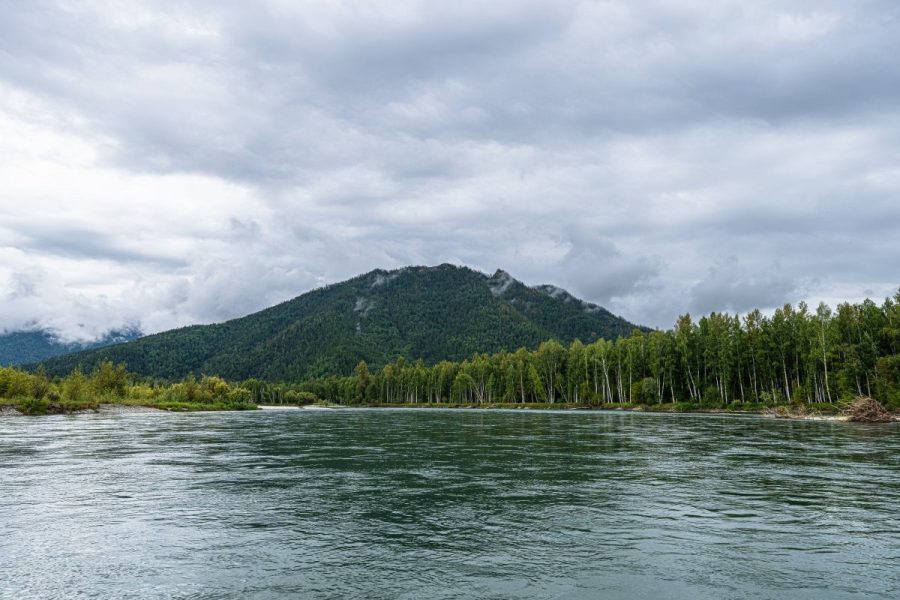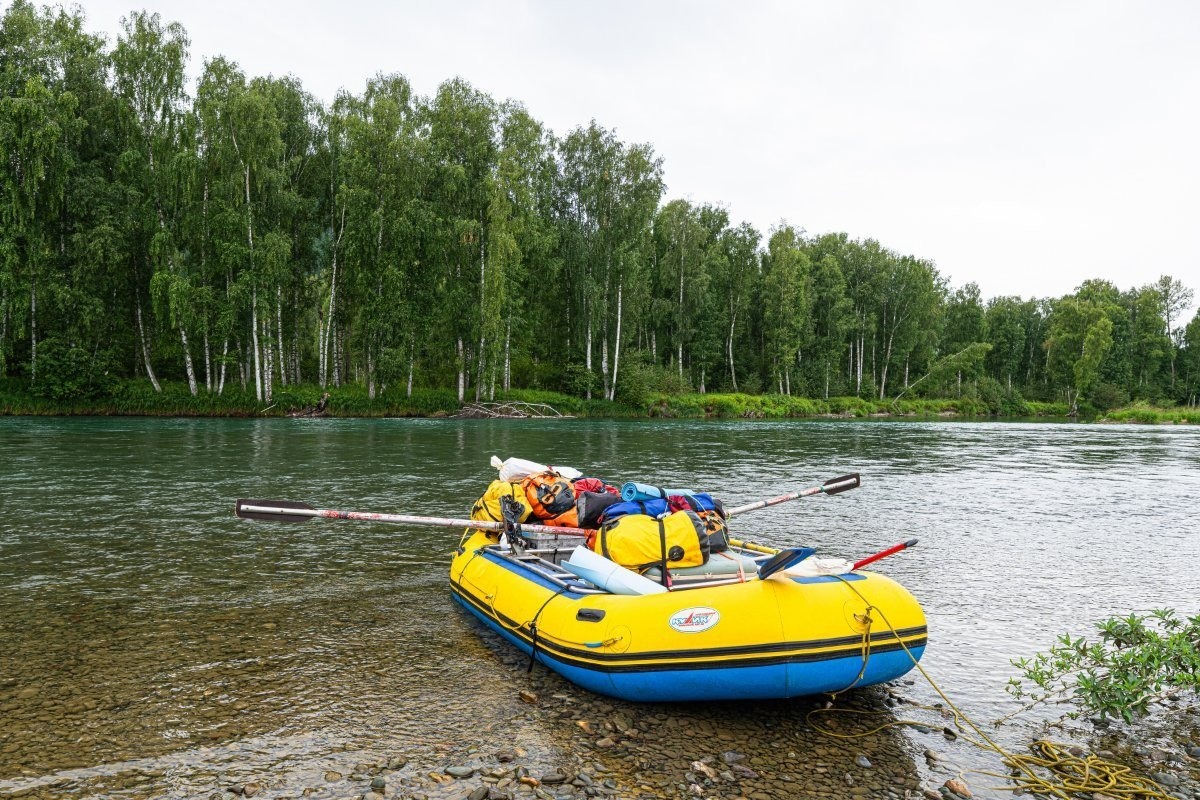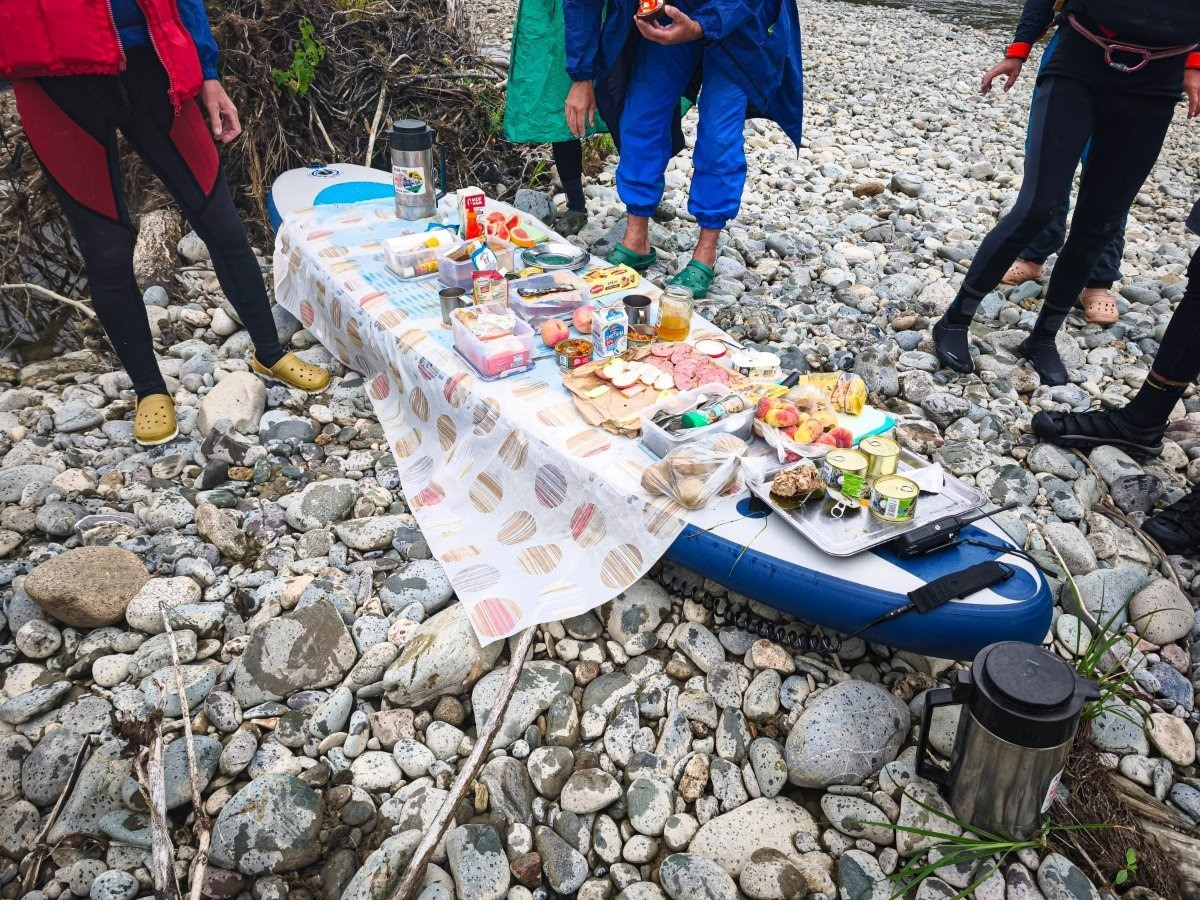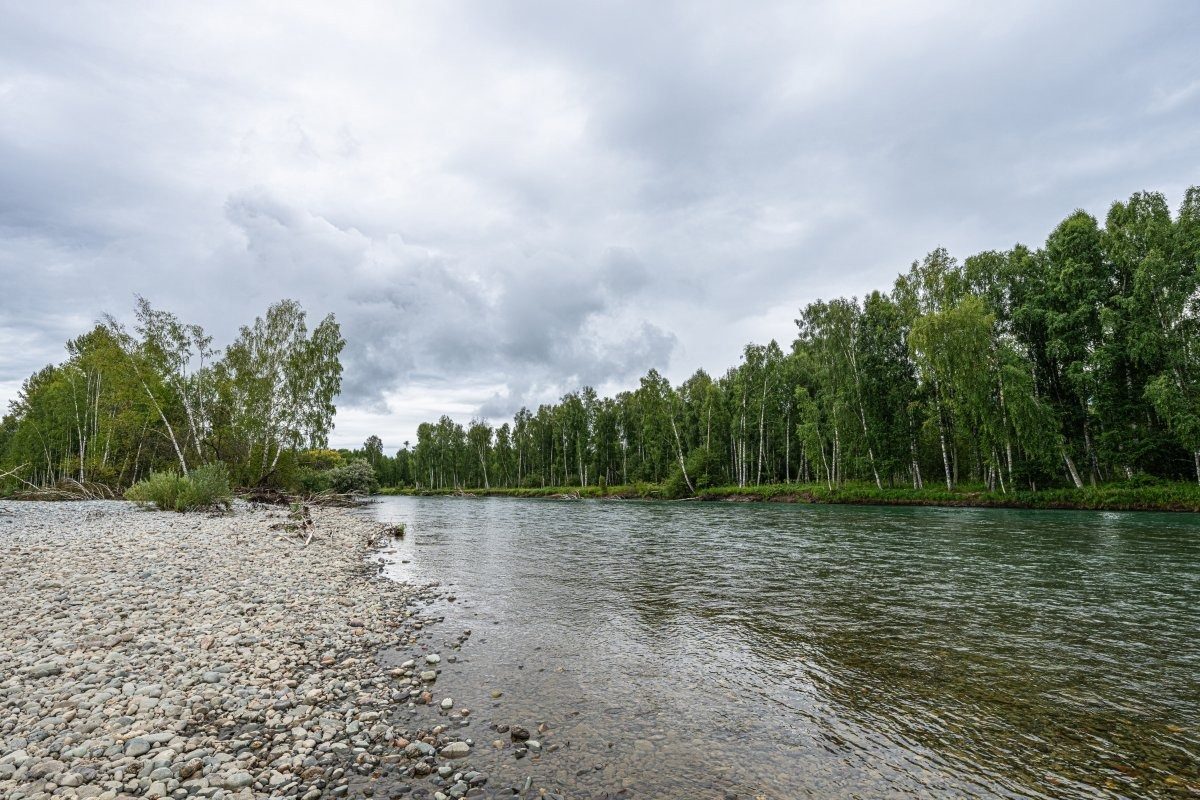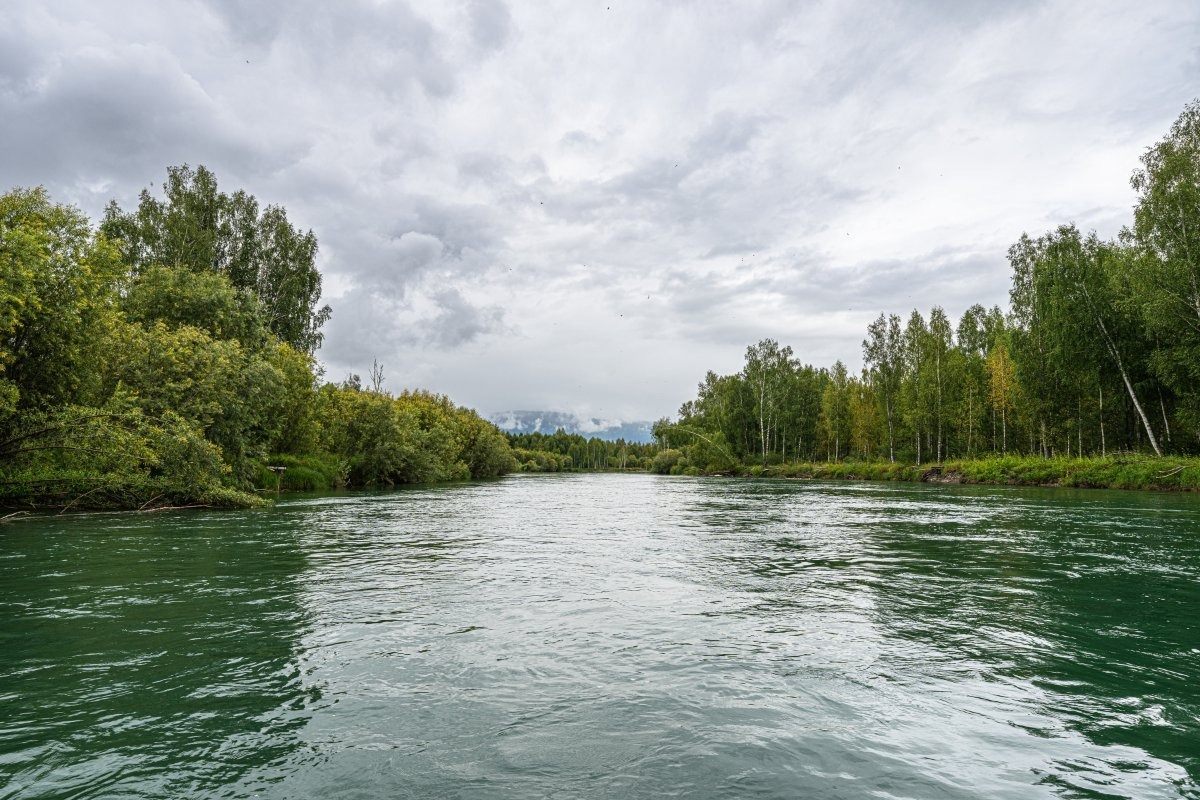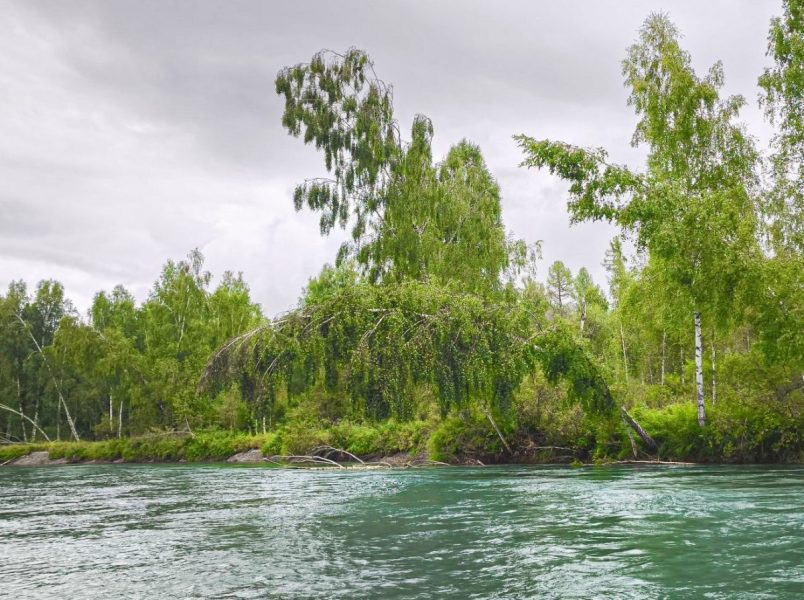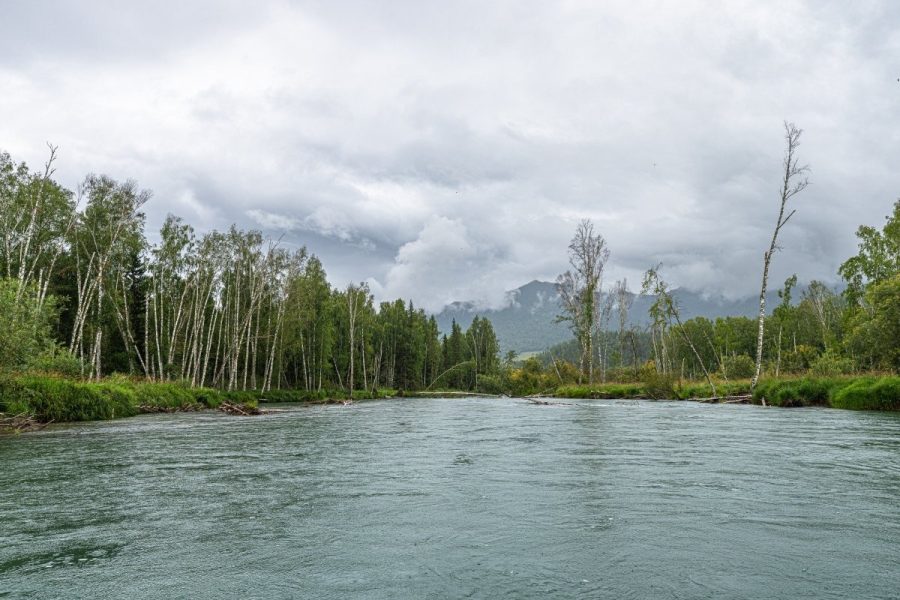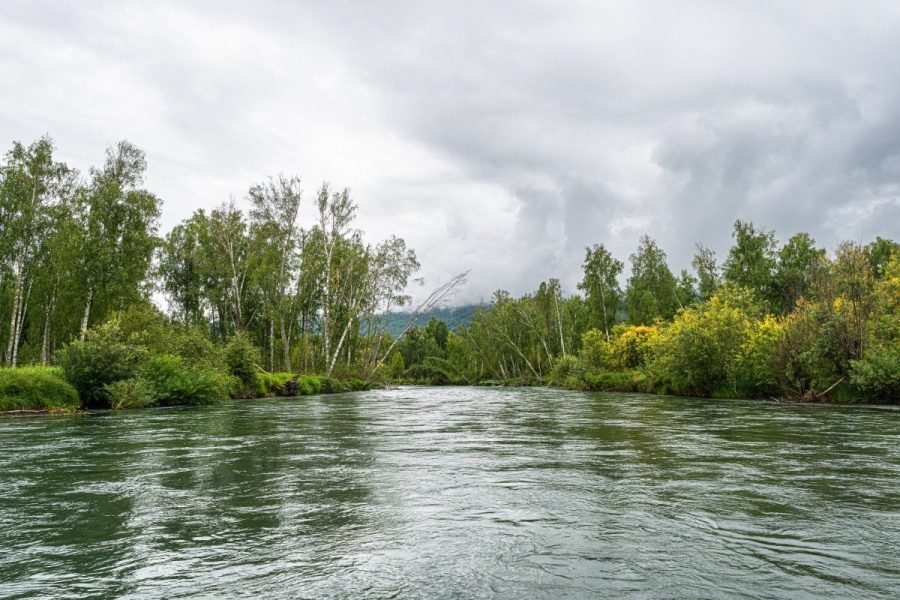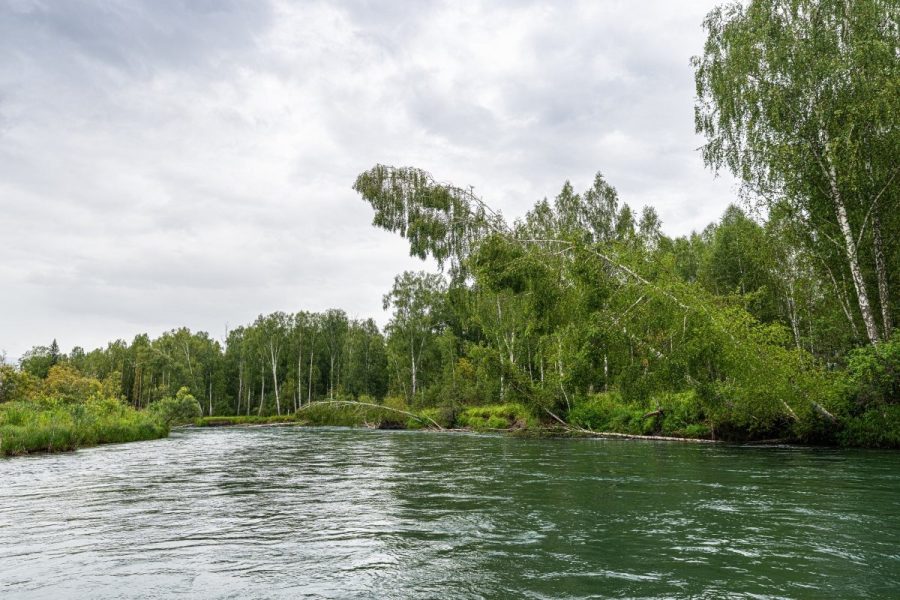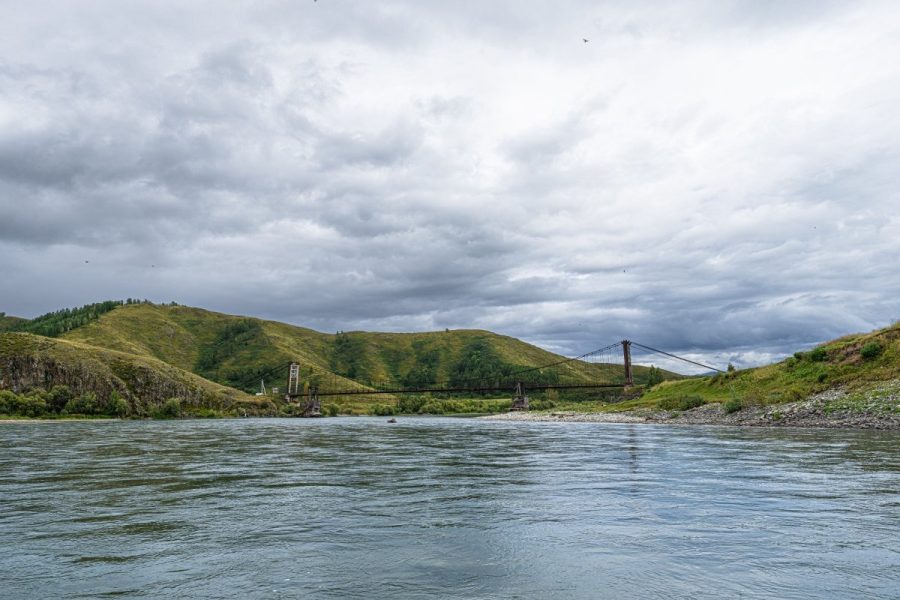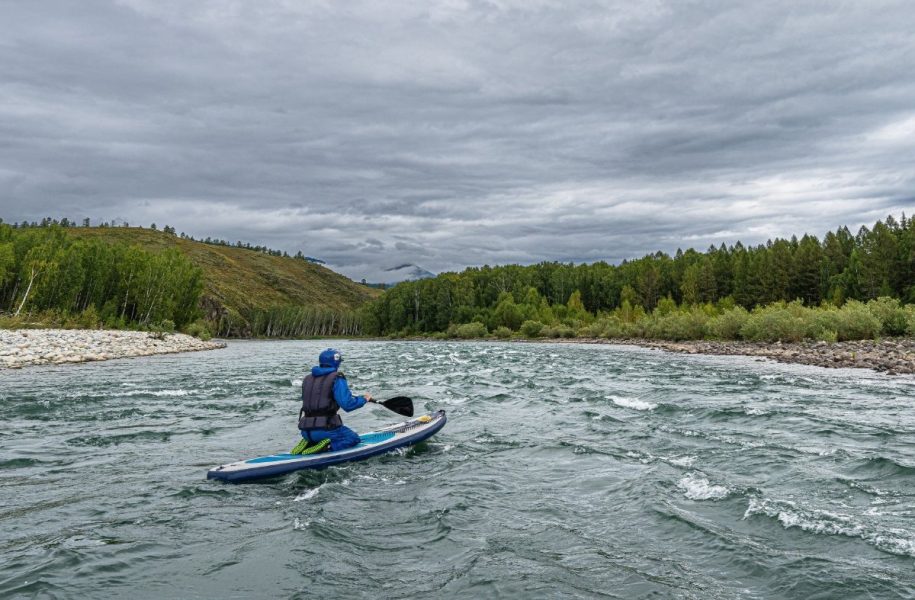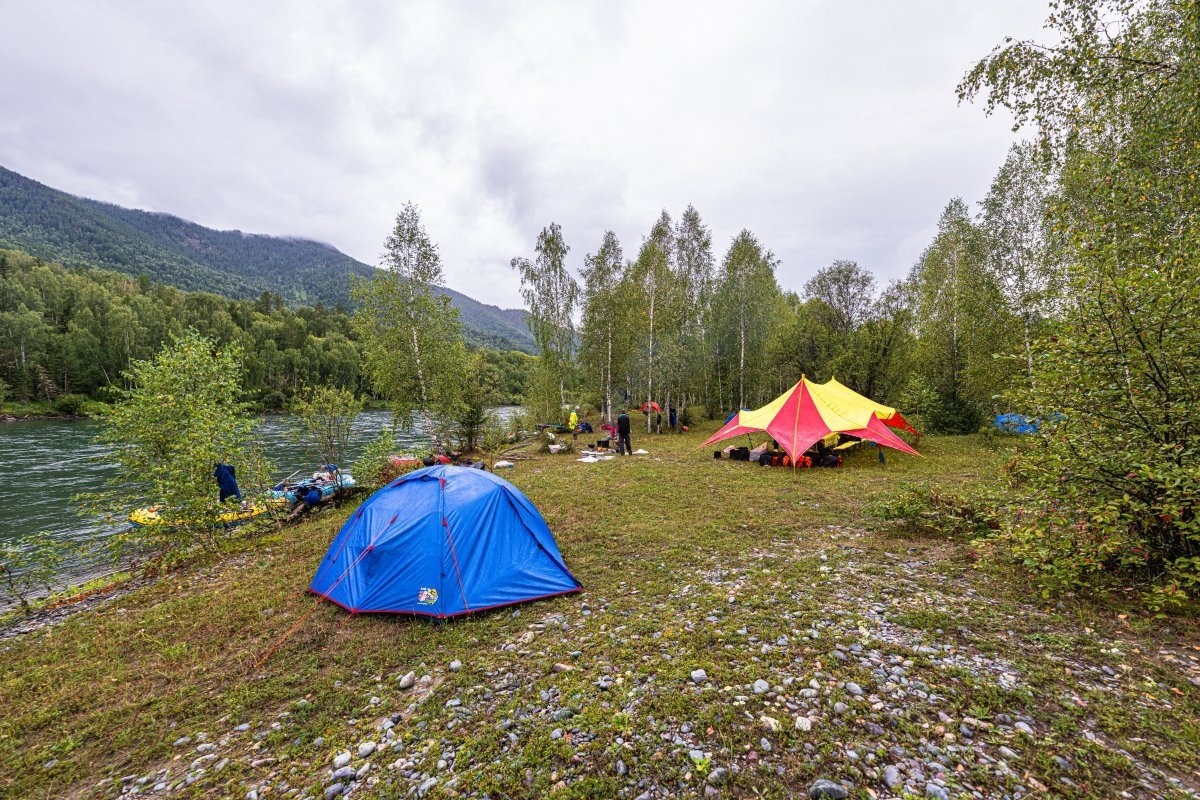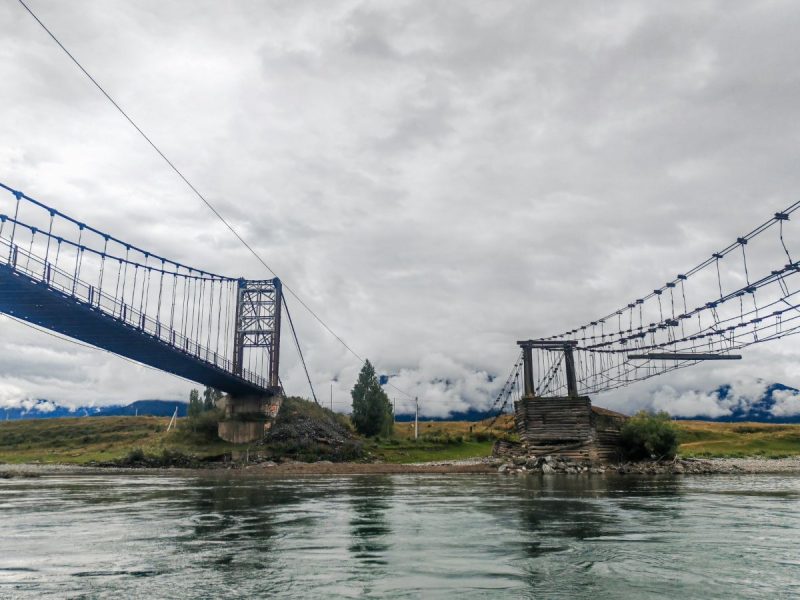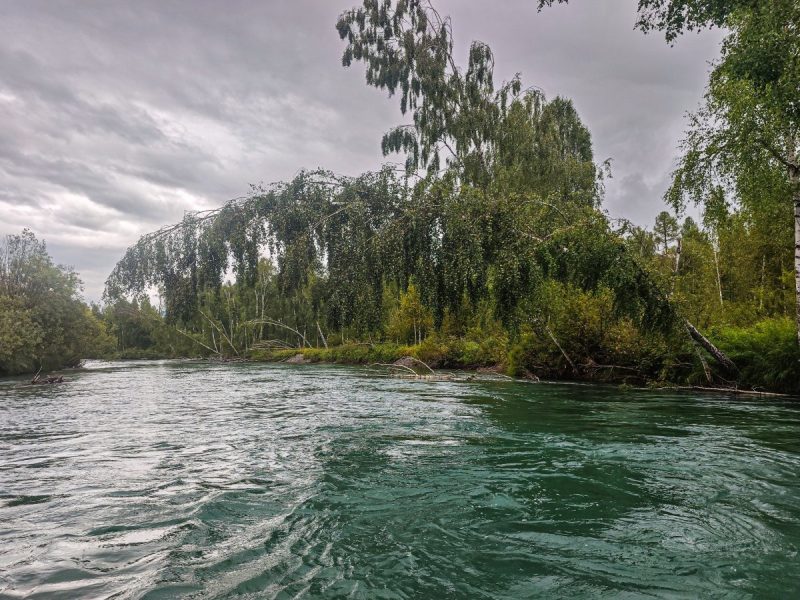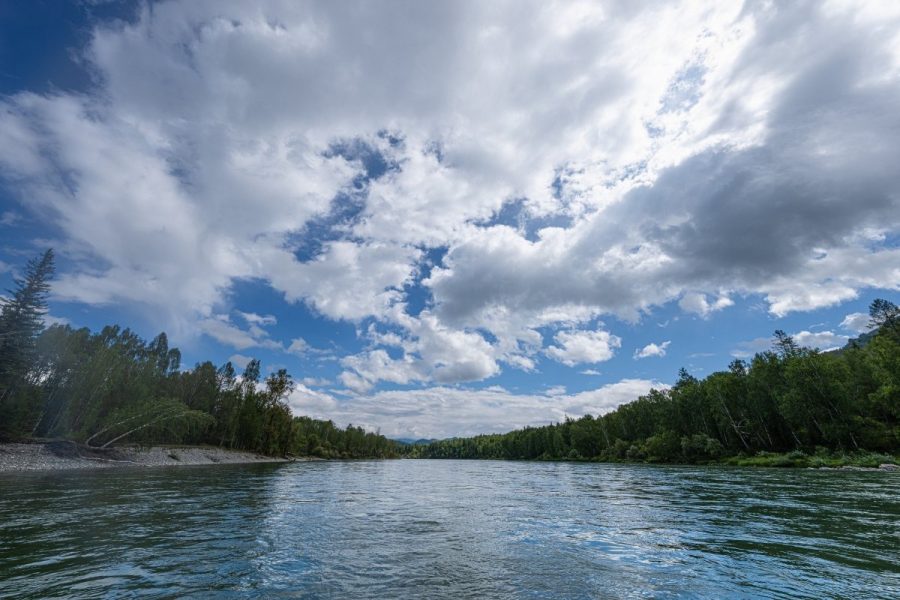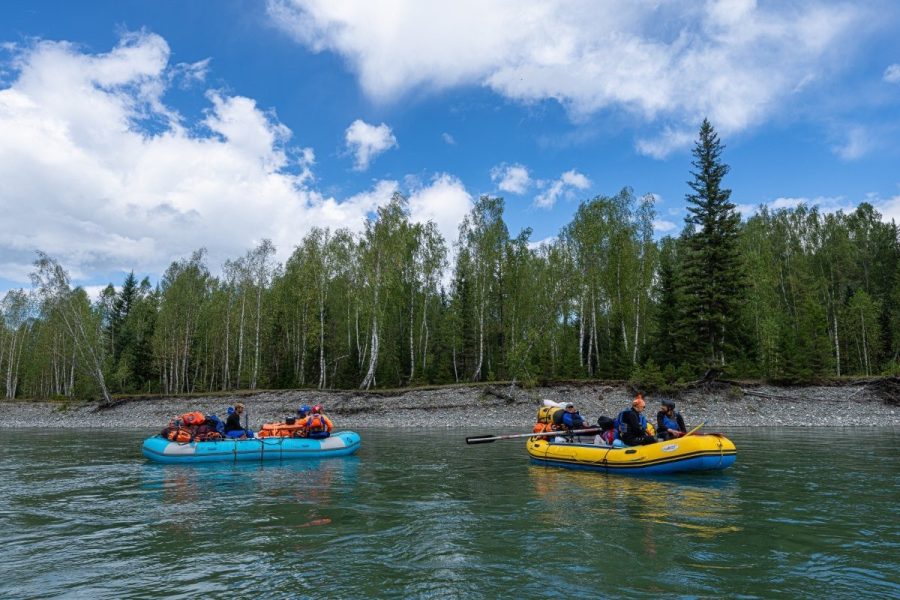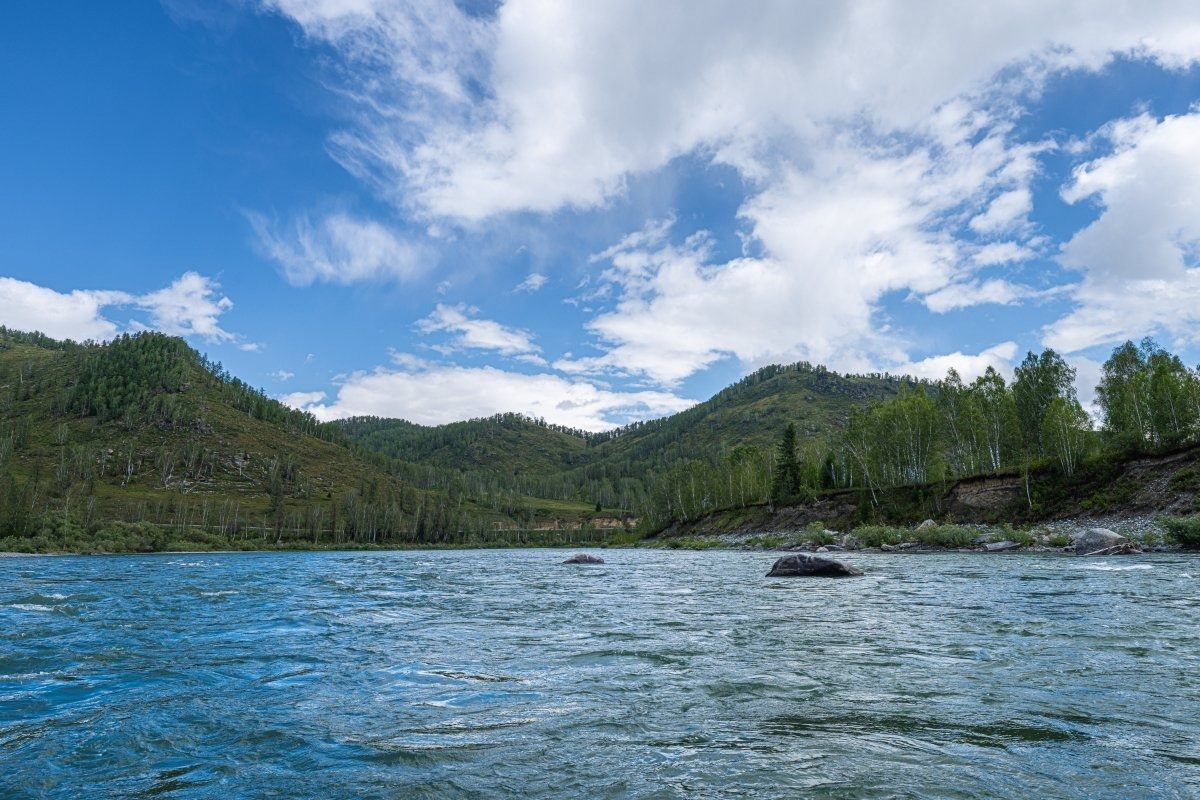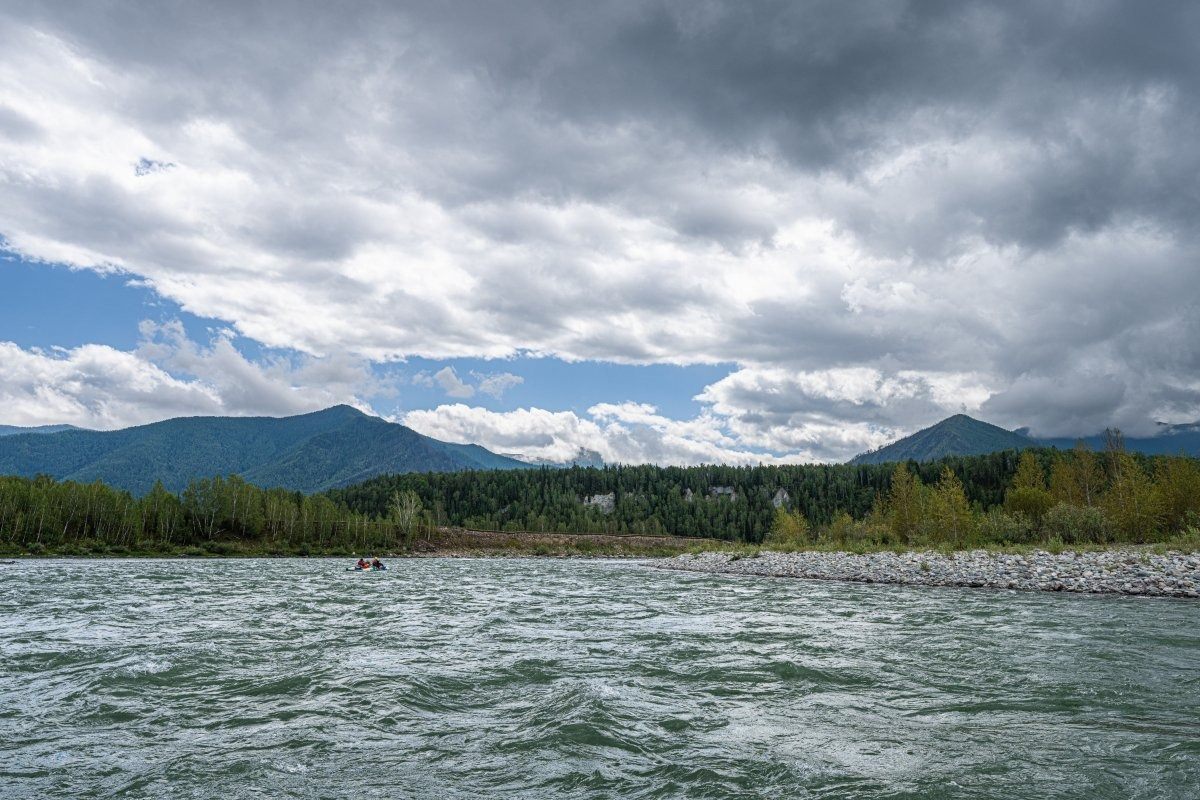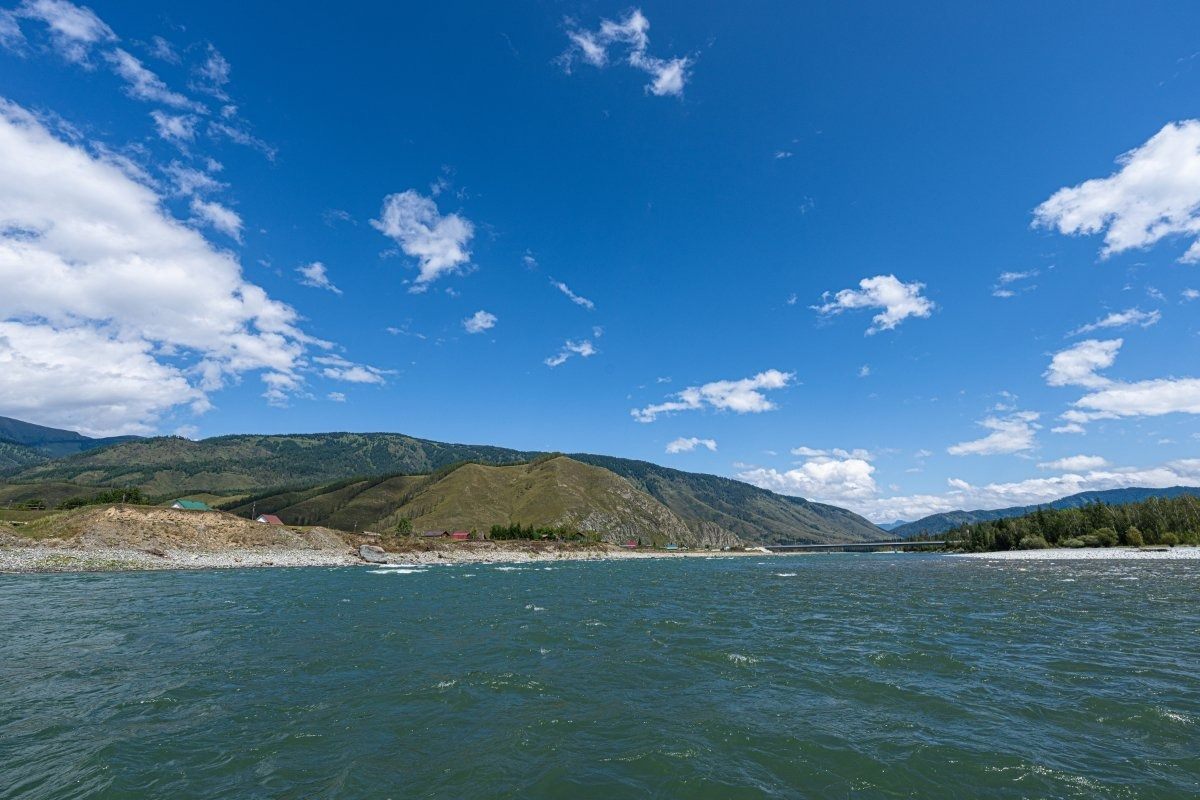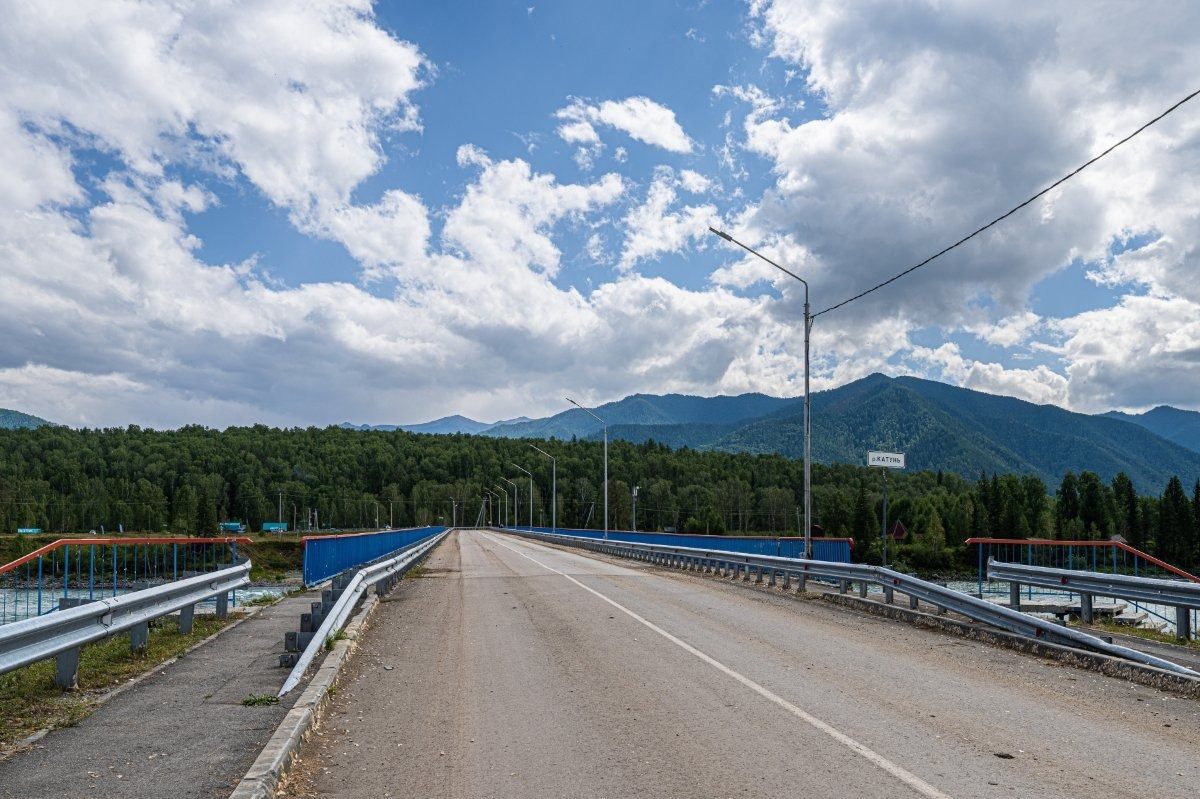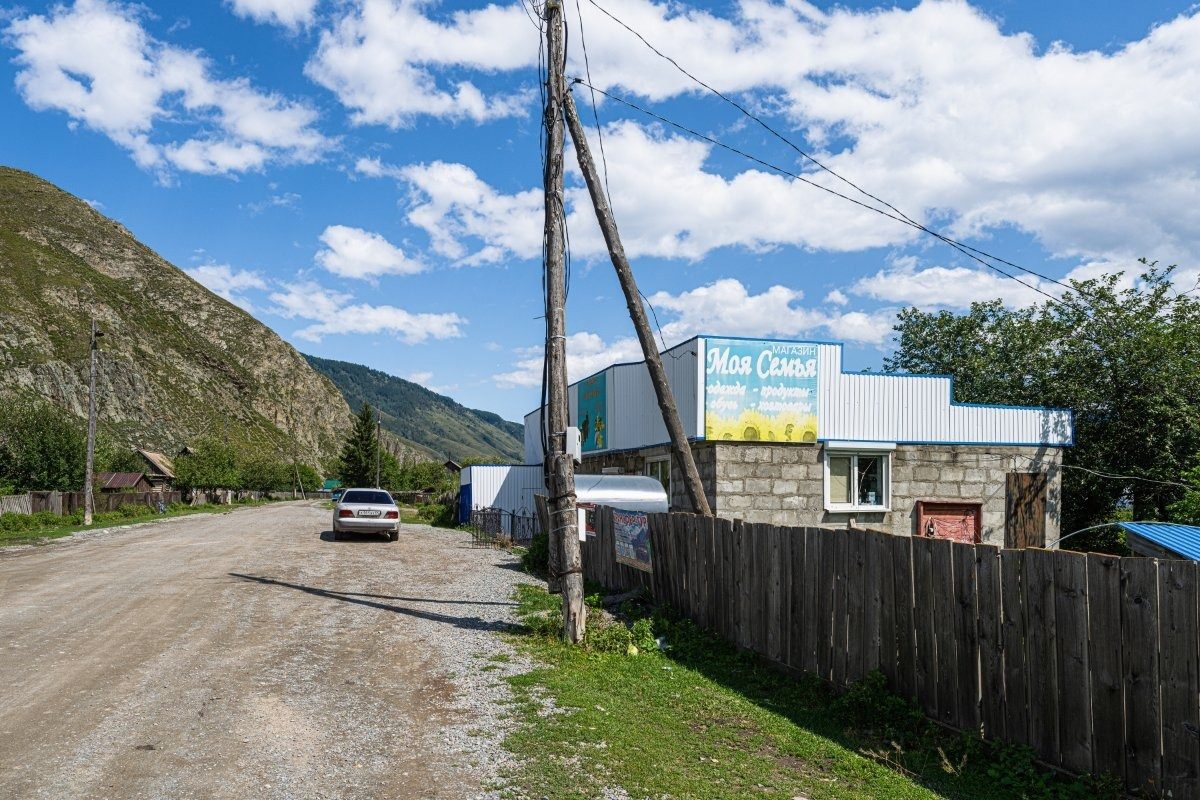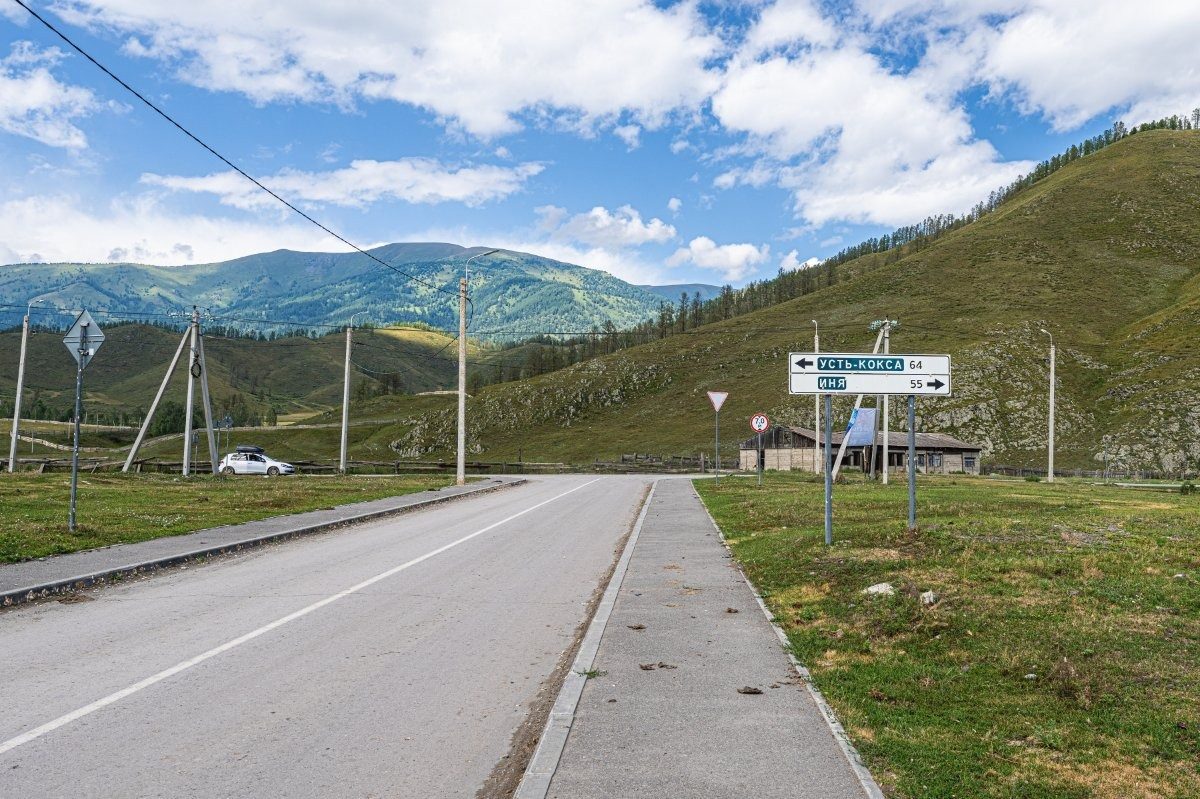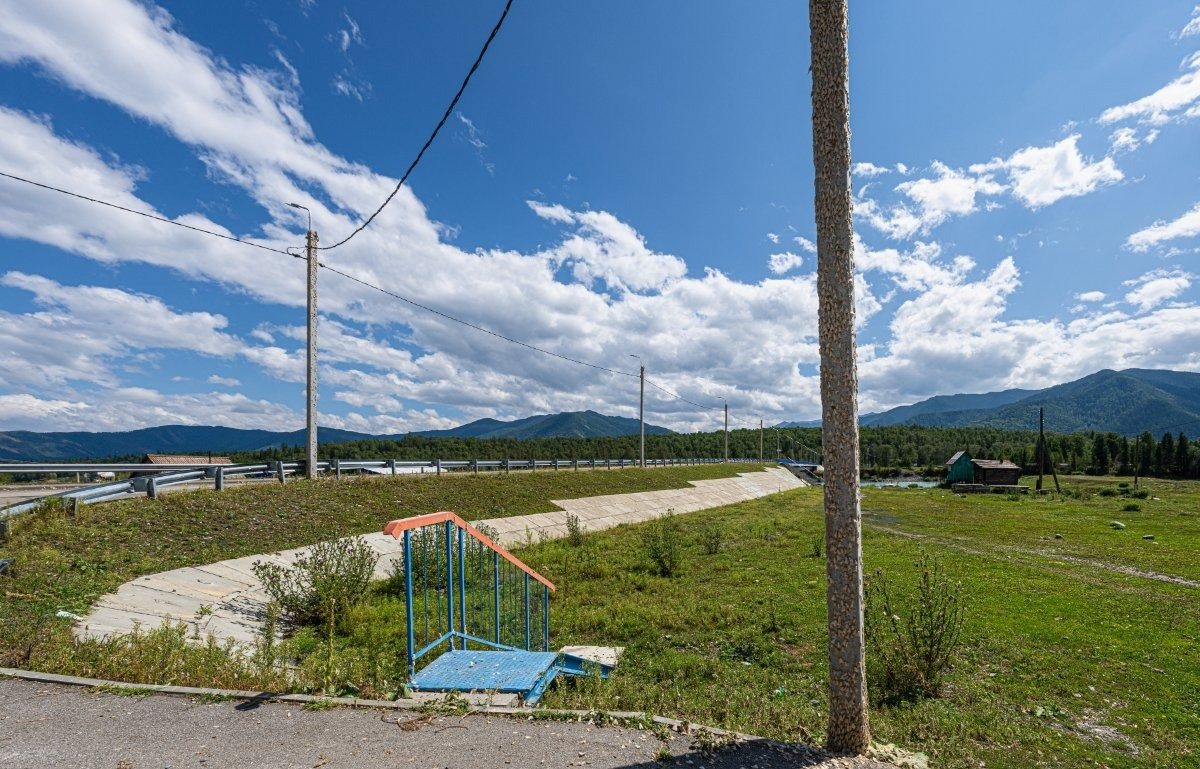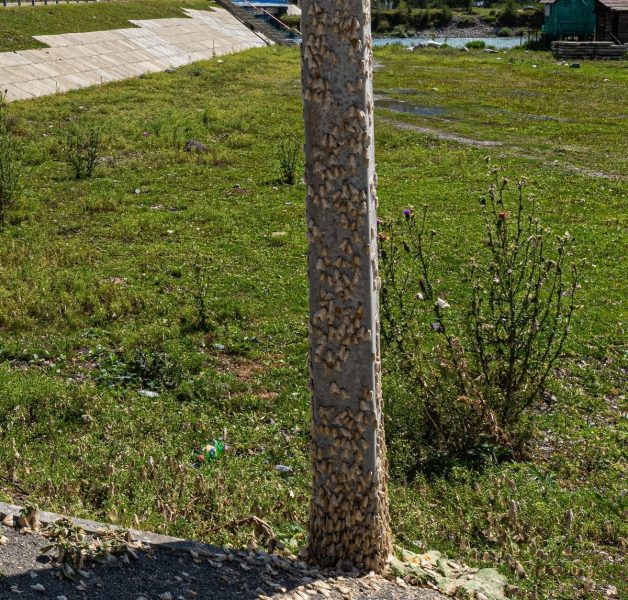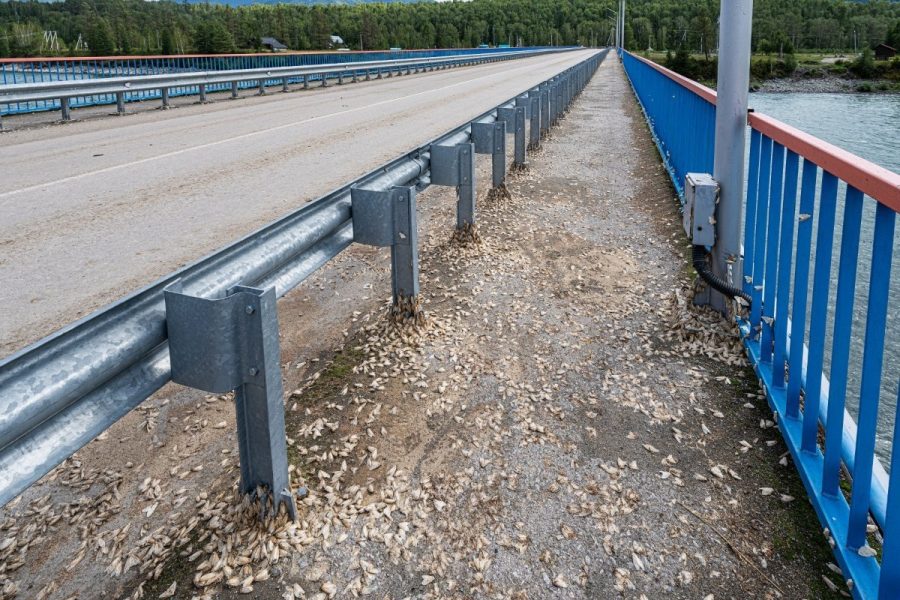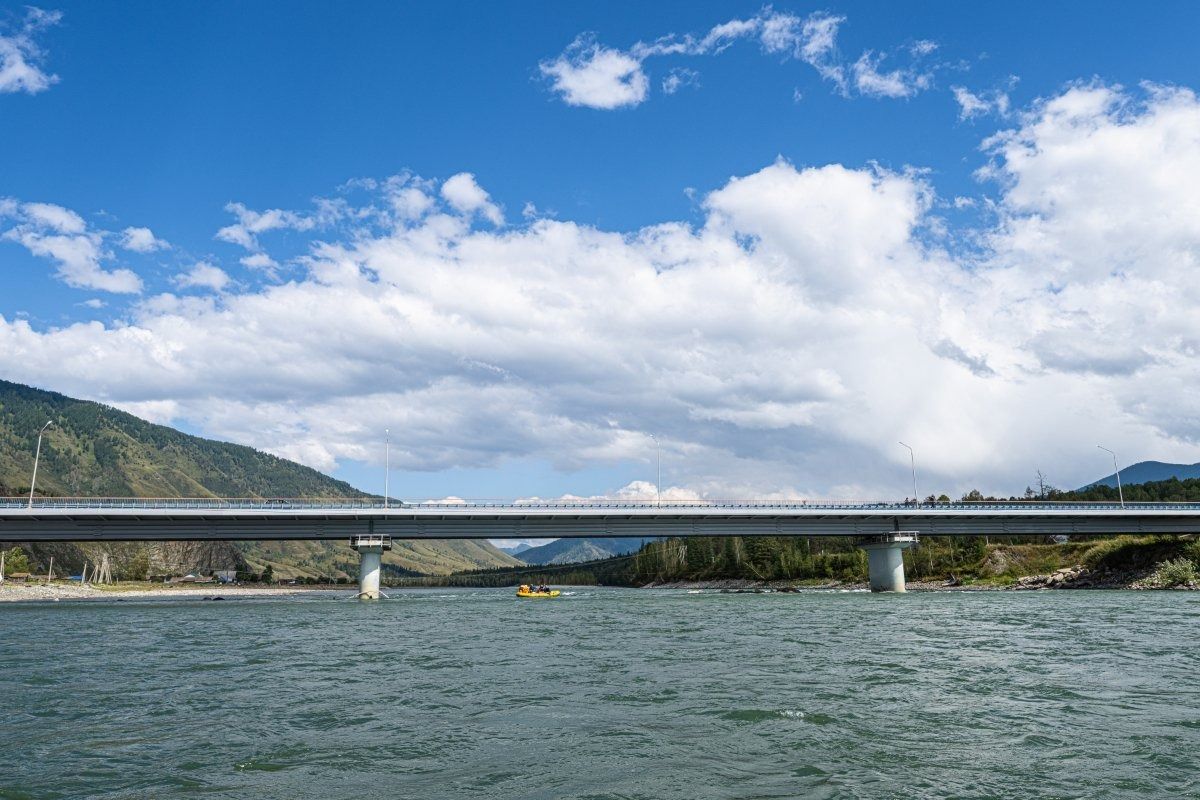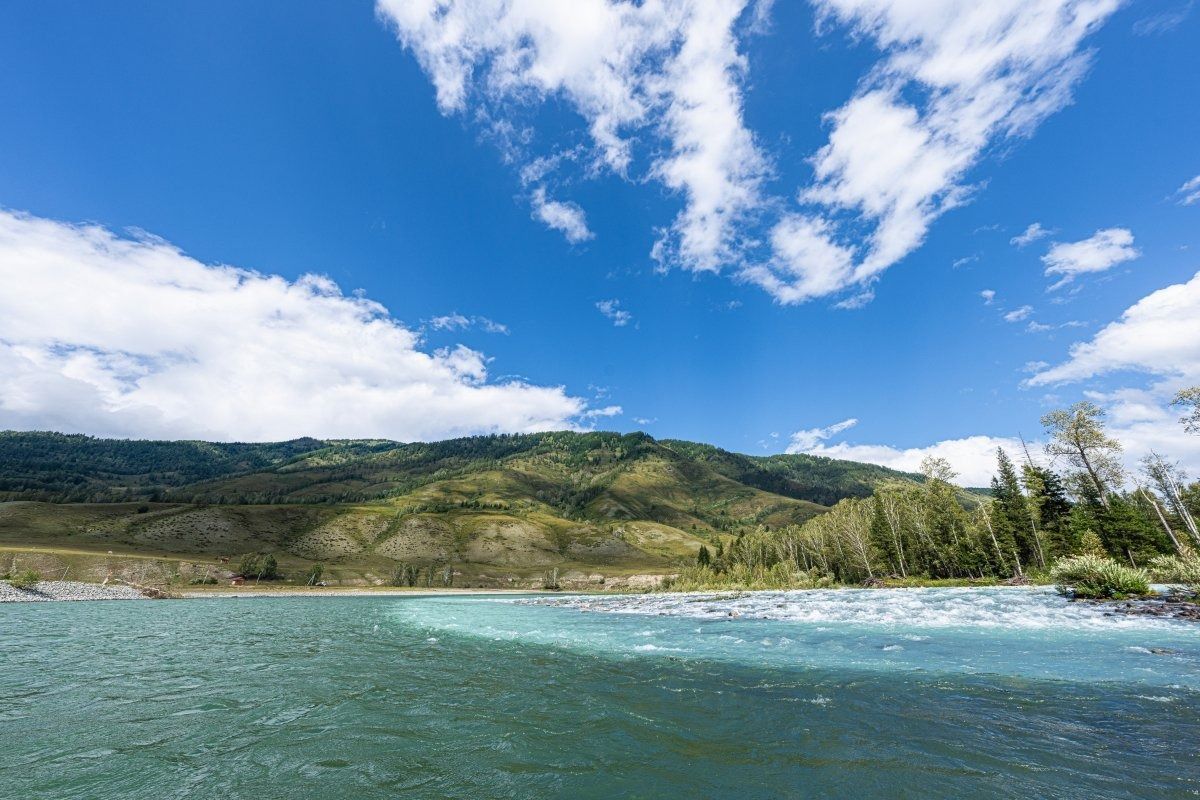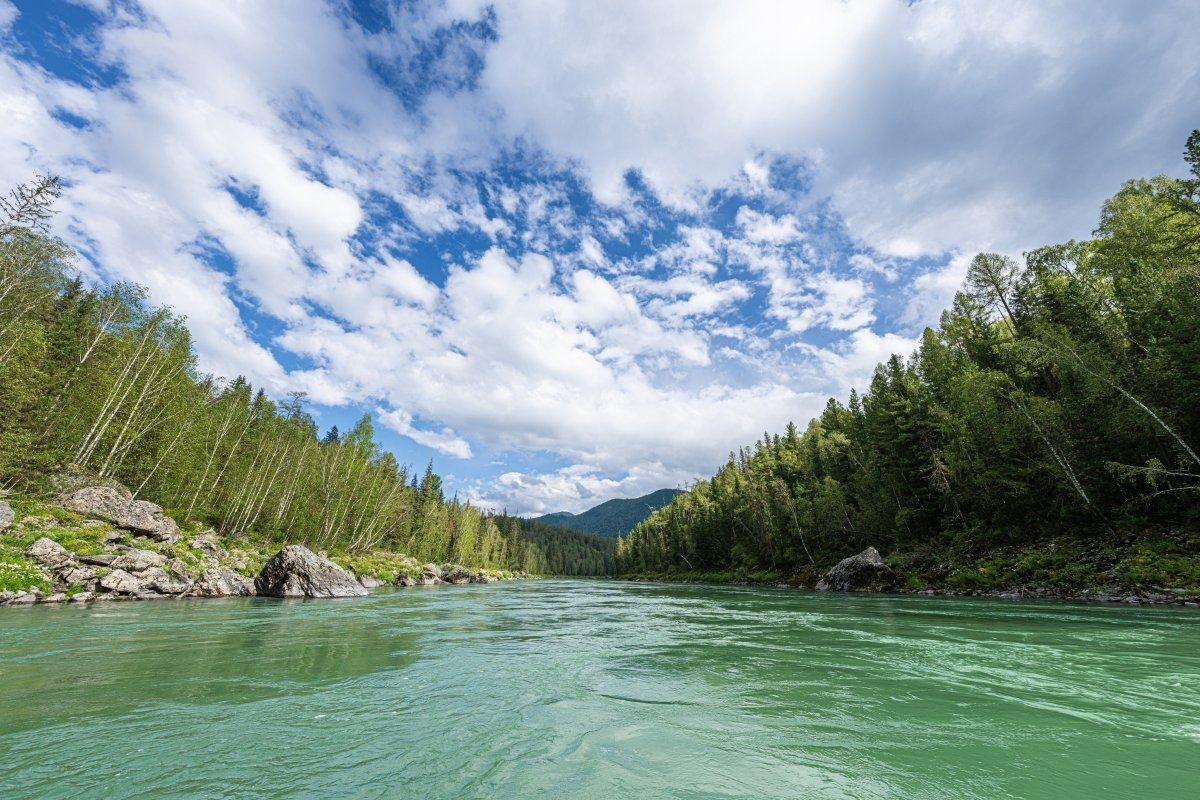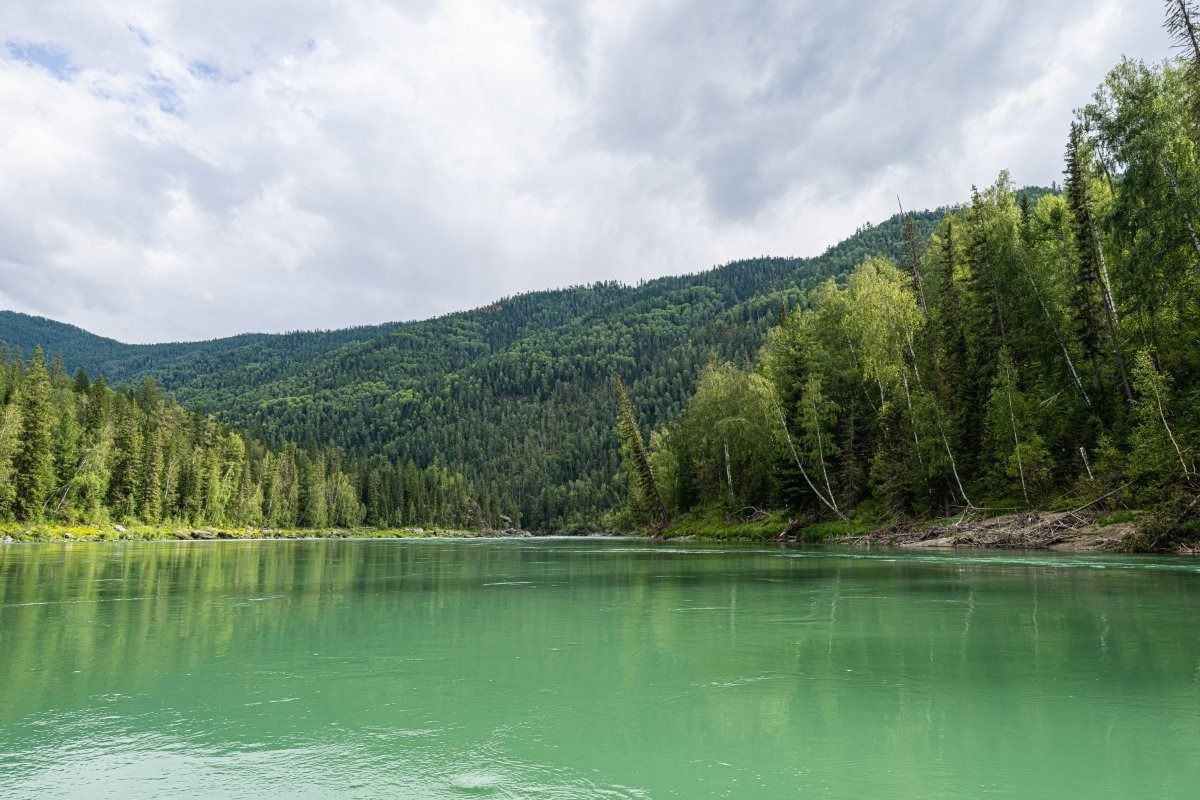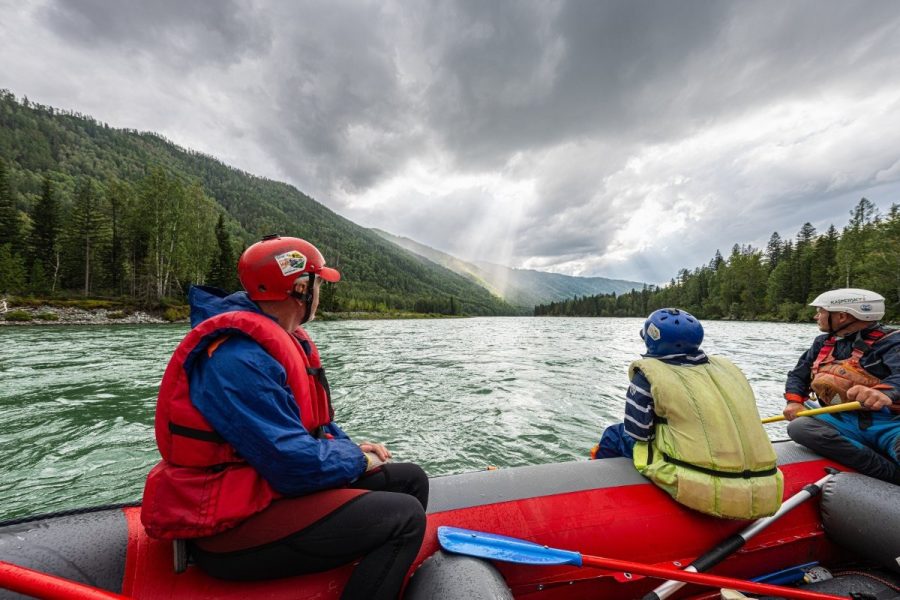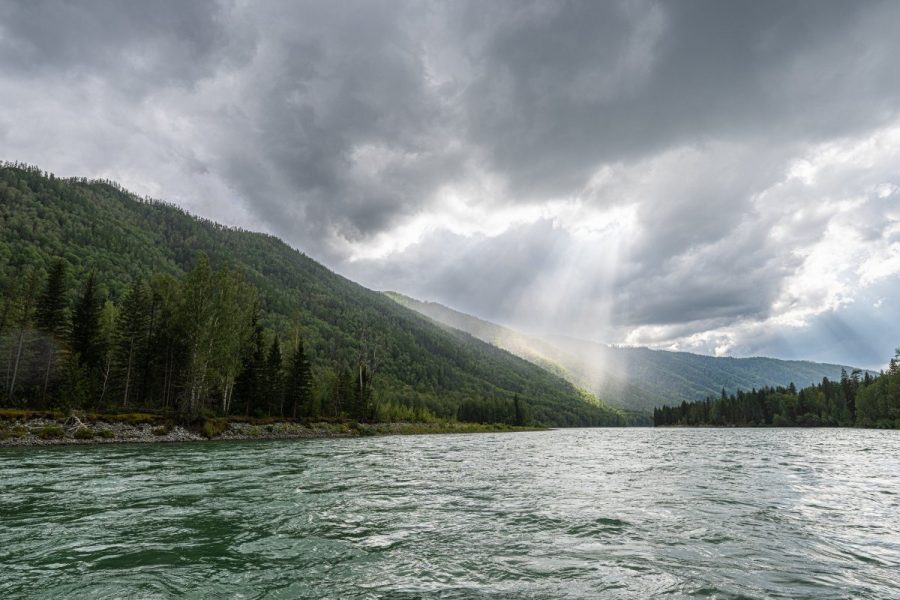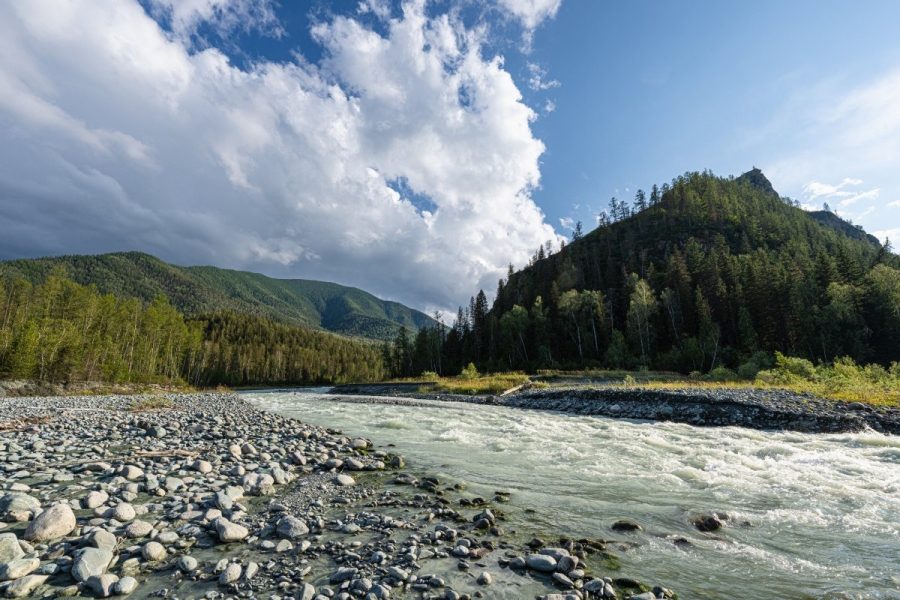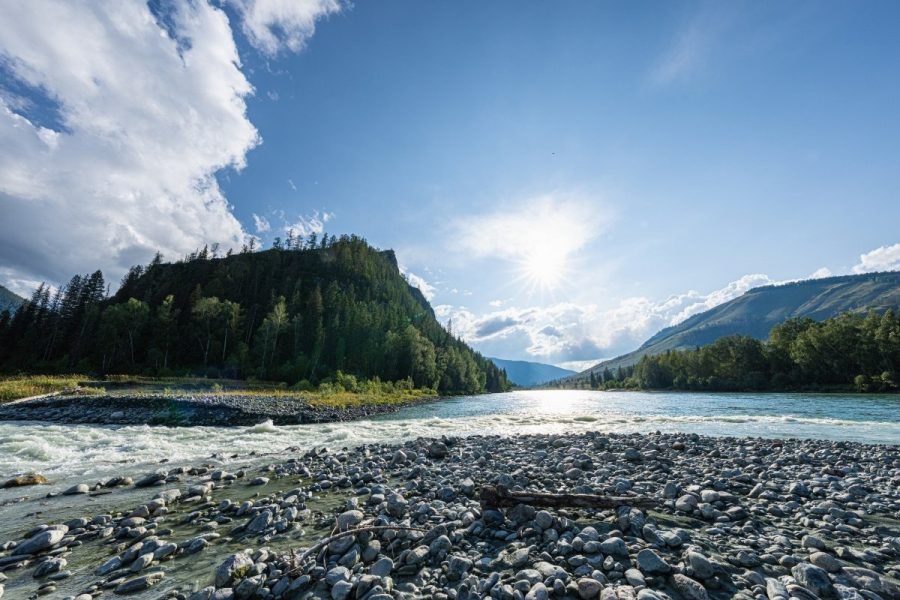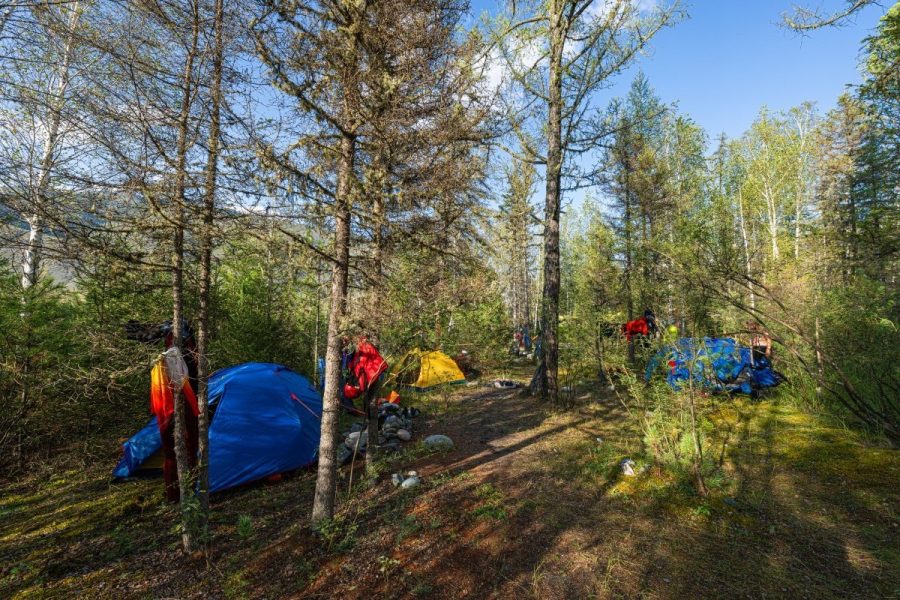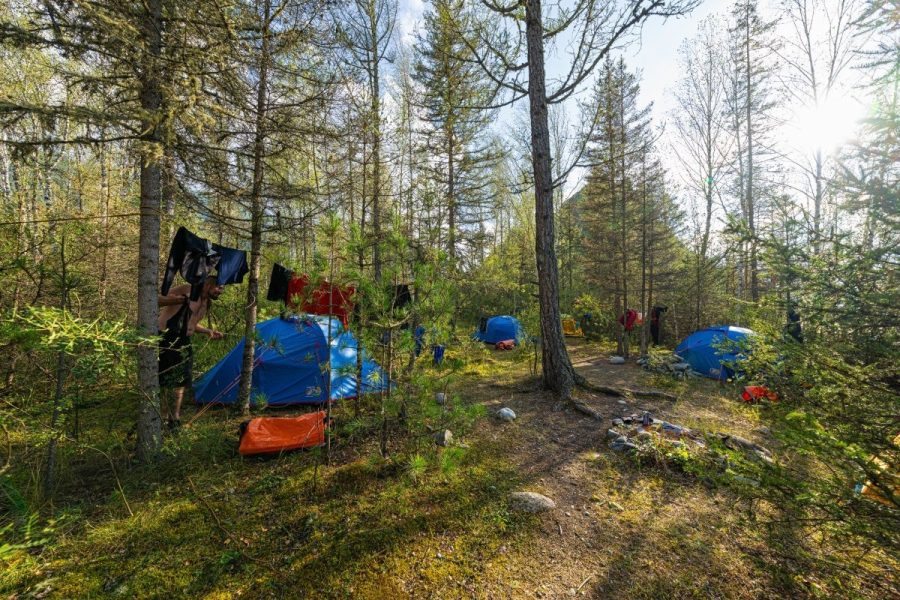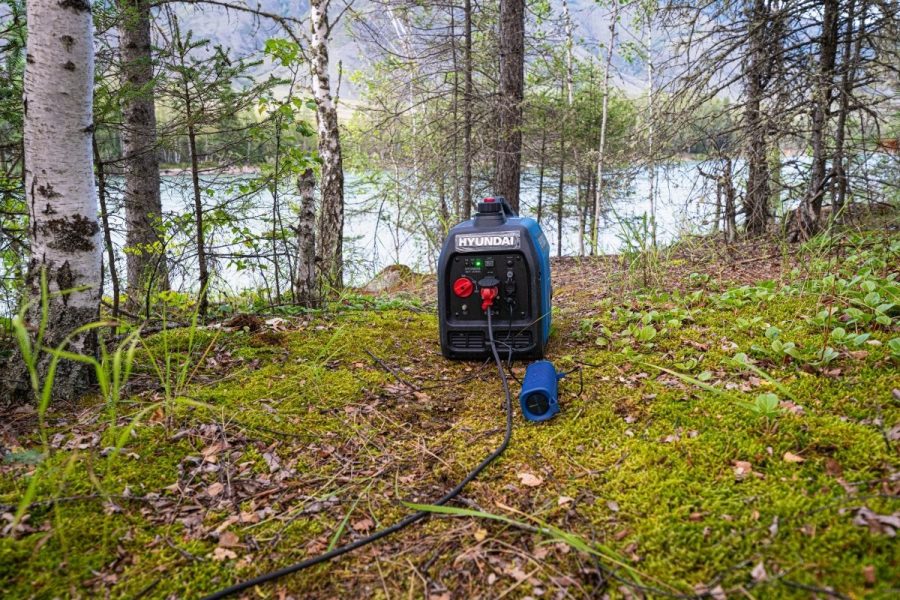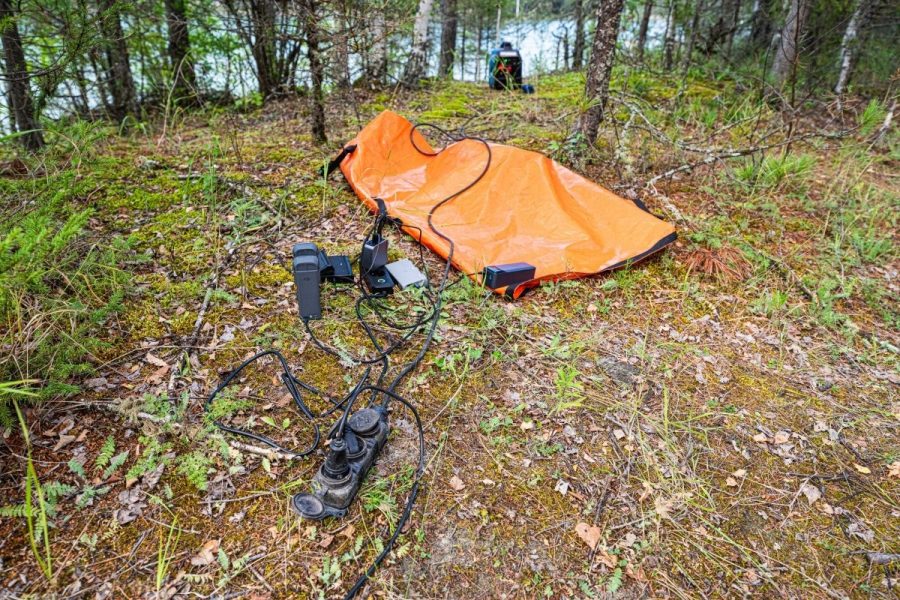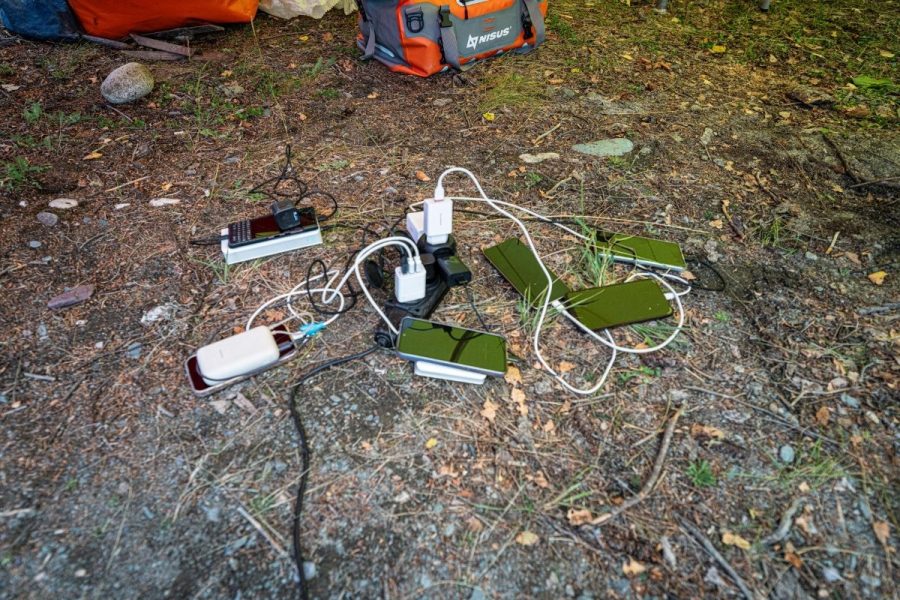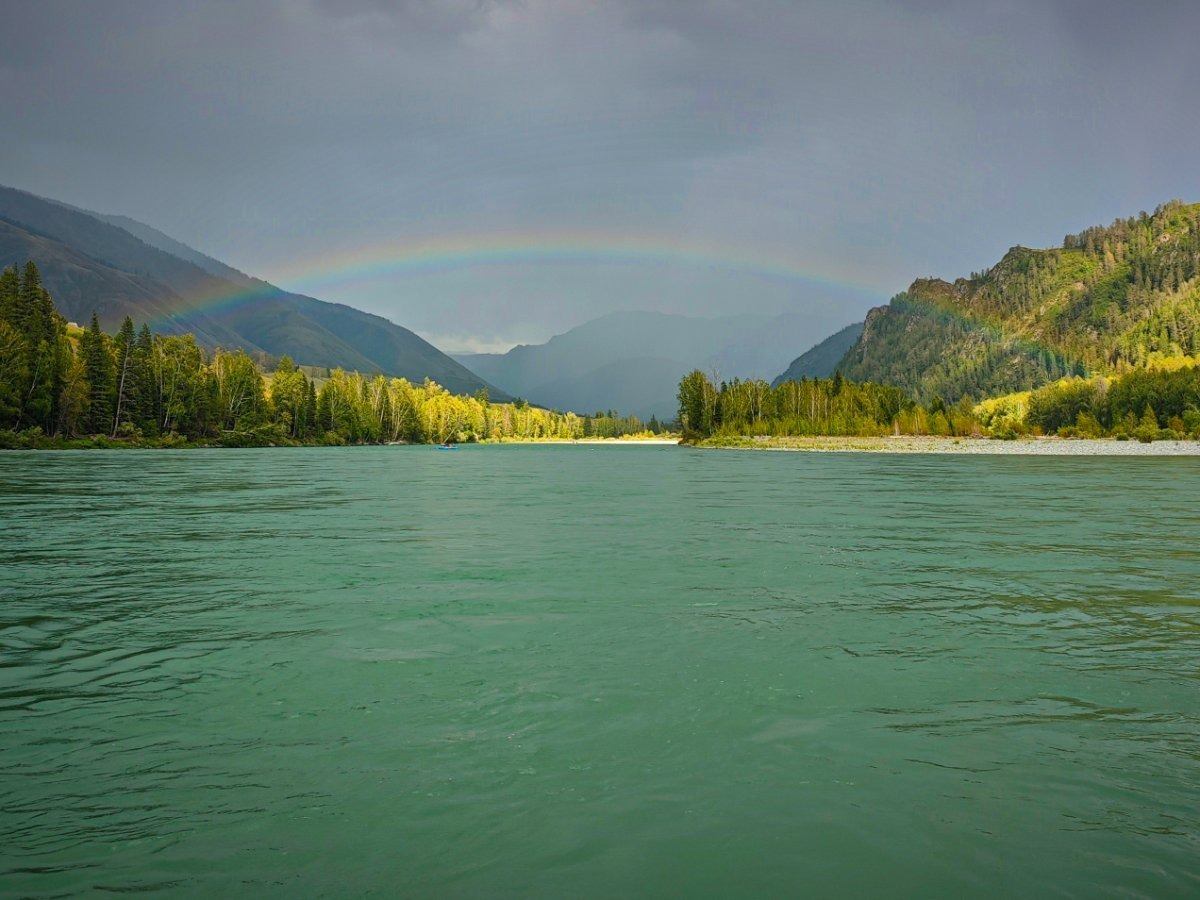October 13, 2025
A week on the “Lazy Katun”: 200km+ of river-meditation and sun!
After shooting through the Katun’s Cheeks, we had another two weeks (!) of assorted rafting ahead – “assorted” as in: some lazy stretches, some bursts of action, and the occasional bout of nerve-wracking whitewater rapidding. But the five days after the Cheeks were all one thing: lazy. We even call this stretch the “lazy Katun“. Around 200 kilometers of gentle current, ripples and pools, and only a handful of small rapids. All in all – smooth sailing: the perfect setting for quiet reflection and meditation. Andf if the weather’s nice the mind totally resets.
The scenery is just sensational! And the farther you float, the more turquoise the river becomes. At first it’s a light gray, but crystal-clear tributaries eventually turn the water almost turquoise; and once they do, the only thing to watch out for is that your rafting companions – no matter how well you all get on – don’t suddenly turn all chatty. It can happen – especially with newbies. But it’s soon subdued once met with stony silence! (And they understand perfectly (special energy again!)!). For here – the more silence and calm, the better…
Just a light dip of the paddle gets you into the main current – and then it’s back to peaceful drifting…
Our “captain”, Anatoly, gives the order: “Let’s paddle for a bit”. So we do maybe three strokes before he calls out the familiar, “Stop! Perfect”! And it was like that for five whole days on repeat: stunning landscapes, relaxation, sunshine, blue skies – and, just for variety, occasional warm rain.
On day three, the first sign of human civilization since the Cheeks – some actual buildings! Up until then not a soul ->
We were told it’s the most distant ranger station in the national park. But from the looks of it, nobody was actually around.
And here – the very first stand-up paddleboard (SUP) descent of the upper Katun, performed by another “very first”: AB! First? Yes – he was our company’s first employee: he was at the top of the alphabetical list when we registered the joint-stock company in London in 1997. And here he is:
The first – going first! ->
Of course, there were a few tricky moments…
But everyone watched, figured things out, and joined in the fun!
And finally!… The good old apiary:
And you can tell the bees are loving life too:
Fantastic spot! If you ever float past, be sure to stop.
A few riverside scenes from around the apiary:
The left-side tributary is called the Tikhaya (Quiet) River; not to be confused with right-side Tikhaya River, which joins the Katun around 15km further downstream…
Yeah, the topology around here gets pretty mangled…
Amazing, isn’t it? Gorgeous views, total sensory delight, and the complete absence of digital noise you simply don’t need here… This is true, unplugged relaxation. An oasis away from the usual daily grind.
Okay, that was a stream-of-consciousness ramble, but rafting the Katun is just such a contrast to my normal working days (which I also love – just differently). But I love contrasts – perhaps as you do. Yes – you can’t beat contrasts!
Whoa! The first boat we see. Looks like they’re fishing – not rafting. Maybe that needs trying next time?…
And just a few great photos from this day:
Our camp the night was simply gorgeous – couldn’t ask for a better spot.
Up here the river’s still a murky green, but after mixing with the clear water of tributaries, downstream there’ll eventually be the famous turquoise blues of the mid-Katun. That comes later…
For now: we park up and start pitching camp:
Perfect river views, decent camping field – though not everywhere perfectly flat. Still, there’s not a single hotel or guesthouse anywhere around here, so it’ll have to do anyway!
Here’s the clearing for the camp:
And our parking lot:
Today we covered 29km in six and a half hours (including all stops), dropping just 80 meters in elevation (from 1300 to 1220 meters). Not bad!…
Next morning the weather was pretty perfect once again – just what we needed for more meditative Katun’ing…
A spot of early morning fun with our new, strange floating device ->
Some stretches were so gentle it felt like you could probably float down on just an air bed! ->
But sometimes it went like this:
This was our fourth day on the Katun: mostly calm and quiet, but the current still moved along quickly ->
Every so often, we’d grab a paddle to work through mild riffles:
Over 50km of rafting this day.
Here we finally stumbled upon the first real riverside settlement since we’d set off – the village of Maralovodka (before it we’d only seen the apiary and the empty ranger post). Right before the village we started passing more apiaries; perfect for stocking up on honey:
Each lazy day floats by, and while there aren’t any real Katun rapids yet – no worries, looking forward to them was half the fun.
The fifth day must have been the least scenic and maybe even the most boring. The mountains pulled away and the river flowed through a broad, uneventful valley…
Also: instead of a gentle mist, we got drenched! No light showers, but a full-on downpour. Well, at least it was a warm rain :-) ->
Here’s something interesting – look closely at the hill in the distance and you’ll see a horizontal stripe:
Ok, maybe not in that pic, but hopefully in the next one. Back during the Ice Age, this valley was blocked by a glacier and was flooded to form a huge lake here. The stripe is the ancient lakeshore – still visible ->
Still can’t quite see it? Let me highlight it:
Once upon a time, there were ancient waves lapping up there. And when the next “global warming” cycle hit and the glacier melted, the water broke through and unleashed a disaster downstream. Actually, several such outbursts occurred across Altai at different times. Some flows were massive – over a thousand cubic… kilometers (!) (at least according to experts online) – and they shaped the region’s characteristic rippled landscapes. Apparently you can see traces of this big flood even near Novosibirsk (hundreds of kilometers downstream)! Hard to imagine, but it must have been quite a sight – assuming you weren’t swept away yourself…
Buit enough history! We’re still floating along (I say “floating”; seems more appropriate than “rafting” ). Oh – the first bridge over the Katun – Oroktoysky Bridge (here) ->
And there’s Ust-Koksa – the regional administrative center. It’s our traditional stop to restock supplies and enjoy a slice of civilization :-)
After Ust-Koksa, the Katun branches into channels that get increasingly confusing. Sometimes picking the right one is tricky:
Finding a good spot for camping gets tougher too – what with all the new villages and houses along the banks. Cozy secluded spots are harder to find…
Time to dock…
The next morning met us with gloomy, uninspiring skies. We braced for the worst; there’s nothing quite as bad as being drenched by both river water and rain at the same time – but it turned out just fine. At least – it did on that day…
Like I said, the river flows through a wide valley around here – but it’s still moving at a decent speed. The logbook says we averaged about 6.5km/h that day. Not bad!
Woah: civilization (another bridge)! ->
Unfortunately, gray clouds settled in. No dramatic vistas for us this season around here…
Lunchtime!
Pro tip: the SUP board makes a great lunch table :-) ->
I was reminded of how last time we took to a brightly (green) colored alternative stream here, so after lunch, when the river split again, I asked for a re-run. And we didn’t regret it! ->
The channel winds several kilometers through a lush green forest corridor:
If only we’d had sunshine and blue sky to go with the views…
After another bridge, the river gets squeezed back into the mountains, the current gets faster, and we even start seeing a few minor obstacles:
Another day of paddling done; time to anchor ->
A couple of closing atmospheric pics for this day:
And a short video:
The next day was… you guessed it: another belter of a meditative one on the Katun – of course. But all… calm things must pass: this was the last calm day before we hit the wildest, most exciting part of the route. The river was clearly waking up, with the current getting swifter and swifter. On this day we clocked up around 40km in four and a half hours – so about 9km/h.
The loop of our journey almost completed here. Running along the river to the left was the road to Tyungur – the village we started hiking from two weeks ago having arrived by the same road from Gorno-Altaisk.
The Katun’s picking up speed by the minute:
And there’s Tyungur. Full circle!
Here’s the bridge we crossed two weeks back on our way to the Akkem River ->
Quick stop for supplies at the little shop, as tradition demands:
Don’t trust the sign! There’s no road to Inya (ИНЯ) if you turn right – only trails for trekking, riding, biking, or motorbiking ->
Ah – see this telegraph post?…
Every few years, there’s a moth invasion around here. Out of nowhere, these night moths breed like crazy – their caterpillars strip birches, and the adults take over every flat, warm surface in sight! ->
But we paddle on!…
The landscapes are getting more spectacular. A right-hand tributary full of “glacial milk” merges in, coloring the Katun:
And the water becomes bright turquoise:
Oh my green! ->
Pure, undiluted contemplation and meditation here…
And here’s the Akkem tributary – whose upper reaches we were hiking around a couple of weeks ago:
That’s it for today. Tomorrow: the Akkem Rush. Early to bed, so we’re ready for it!…
…But not before we plug in all our photo-video gadgets!
Another great day – but even better (and wilder) days were coming up!…
